

Vienna Travel Guide
Last Updated: August 9, 2023
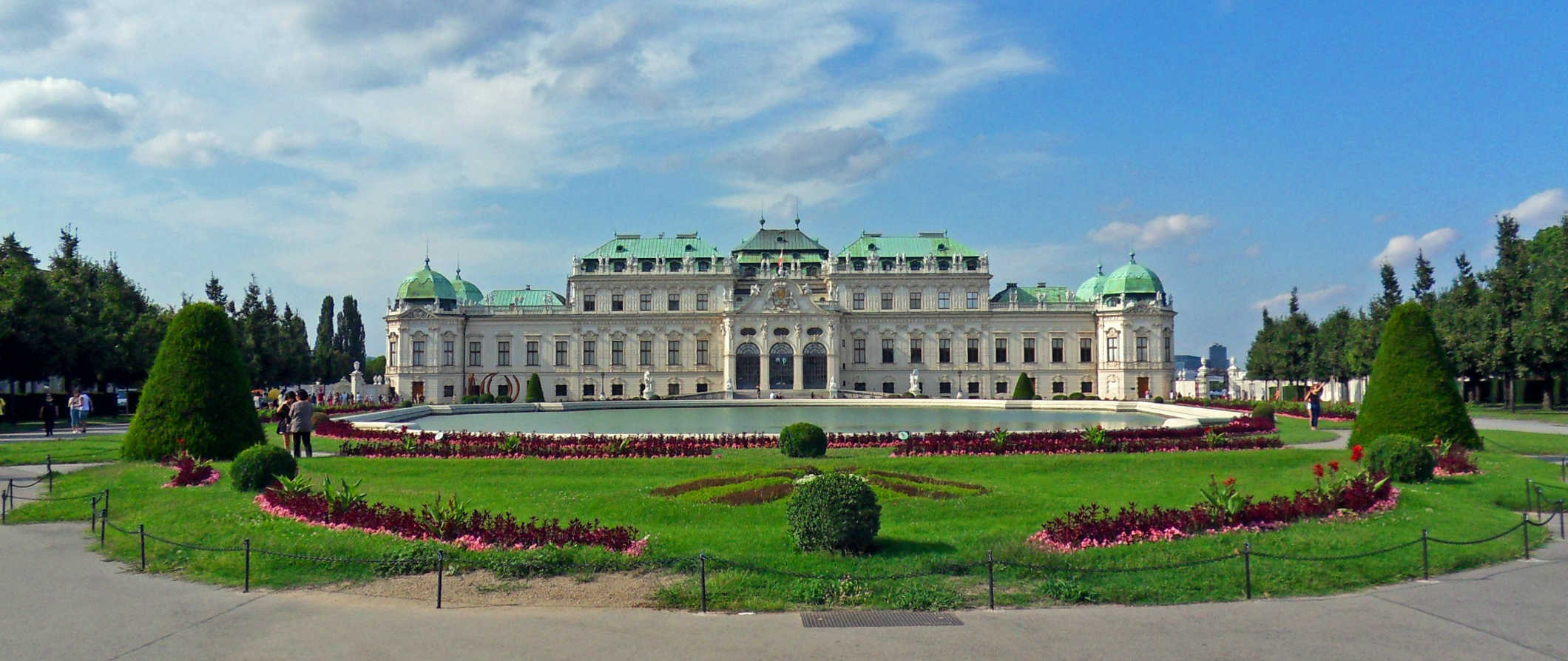
Vienna. Home to schnitzel, Freud, Mozart, the Habsburgs, opera, art, coffee shops, and so much more.
Over the decade I have been visiting this city, I’ve watched Vienna change from a stiff capital city to a cool, hip, foodie, and arty paradise. (Ok, it’s always been an arty paradise and maybe the “stiff capital” was just my incorrect first impression.)
Since my first visit, I’ve come to appreciate the city and all it has to offer. Vienna has countless museums, palaces, markets, restaurants, quirky art exhibits, delicious food halls, neighbors a wonderful wine region, and is a quick train trip to Bratislava .
There’s a lot to do in Vienna and you can easily spend weeks trying to see it all. In fact, there’s so much to do here that I advise you to spend an extra day here. If you think three days is enough, spend four. If you’re here for four, spend five.
No matter how long you plan to be in the city, this Vienna travel guide can help you plan the perfect trip — and save money along the way!
Table of Contents
- Things to See and Do
- Typical Costs
- Suggested Budget
- Money-Saving Tips
- Where to Stay
- How to Get Around
- How to Stay Safe
- Best Places to Book Your Trip
- Related Blogs on Vienna
Click Here for City Guides
Top 5 things to see and do in vienna.
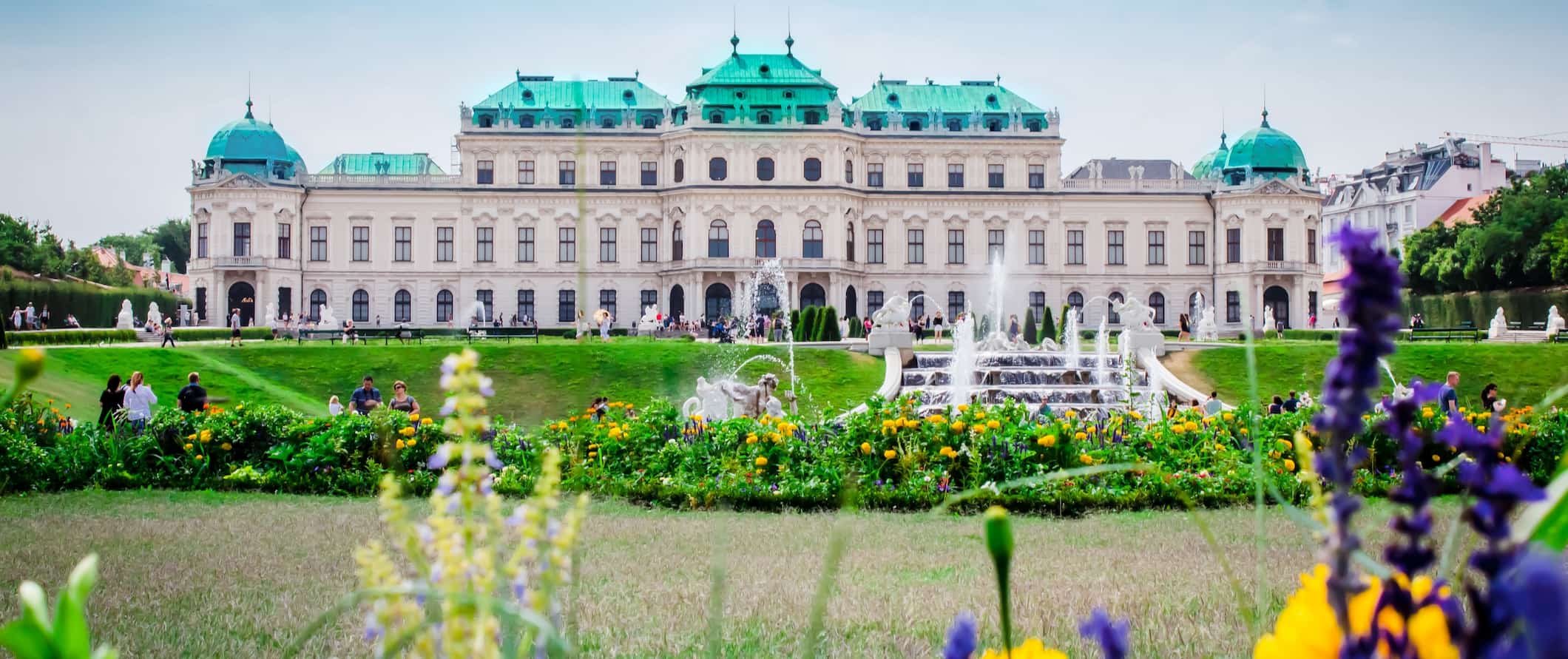
1. See Belvedere Palace
The Belvedere is home to an incredible art collection with works by Renoir, Monet, and Van Gogh, among others. It also has a large portrait collection. The Palace has a permanent collection at the Upper Belvedere while special exhibitions are held at the Lower Belvedere (contemporary art is located at the Belvedere 21, which is nearby). The free grounds feature beautiful fountains, gravel walkways, ponds, statues, plants, and flowers. Admission is 16 EUR and guided tours can be booked in advance for a flat rate fee of 90 EUR for up to 20 people. Belvedere 21 is closed on Mondays but has late night opening on Thursdays.
2. Visit Schonbrunn Palace
This 1,441-room palace is a UNESCO World Heritage Site and started off as a hunting lodge before becoming the summer residence of the Habsburgs, one of the most prominent dynasties in European history, during the 1700s. It’s now one of Vienna’s top attractions. The interior is incredibly ornate with paintings, woodwork, chandeliers, and elaborate decorations. You can explore 22 rooms with the Imperial Tour (18 EUR) or 40 rooms with the Grand Tour (22 EUR). You could easily fill a whole day here.
3. Explore the Hofburg Imperial Palace
One of the biggest palace complexes in the world, the Hofburg is the official residence of the President of Austria. Previously, it was the principal palace of the Habsburg dynasty for more than 7 centuries. There are several exhibits here, including the Sisi exhibit (which highlights the life of Empress Elisabeth) and the royal apartments themselves. The famous Vienna Boys Choir performs at High Mass at the Gothic Imperial Chapel every Sunday. The Sisi costs 16 EUR and includes admission to the Sisi Museum, the Imperial Apartments, and the Imperial Silver Collection. Free audio guides & printed descriptions are available.
4. Visit the Mozart Museum
Though Mozart lived at a handful of different addresses in Vienna, this is the only apartment that has survived. He lived here from 1784-1787. Spread over 3 floors, you can learn about his life, family, music, friends, and listen to his work. The exhibit on the first floor, consisting of four large rooms, two small rooms and a kitchen, is where Mozart and his family actually lived although you have to use your imagination as there is not much left of original furniture and not much is known about how the rooms looked or what they were used for. There’s a variety of paintings, artifacts, letters, and memorabilia from his life as well. Admission is 12 EUR.
5. Do a Wine Tour
Other things to see and do in vienna, 1. see st. stephen’s cathedral.
Stephansdom is a 12th-century Romanesque and Gothic cathedral in Vienna, noted for its colorful roof. The cathedral has been destroyed and rebuilt over the years, with the current version of the cathedral largely initiated by Duke Rudolf IV (1339–1365). Its most recent reconstruction took place just after World War II. You can take a tour of the cathedral, the catacombs, and climb the north and south towers (which offer excellent views of the city). Admission is 20 EUR, guided tours are 3.50 EUR and audio guides are 6 EUR. Catacomb tours are 6 EUR and going up the towers costs 5.50 EUR for the South Tower and 6 EUR for the North Tower.
2. Go to the Naschmarkt
This is Vienna’s largest open-air food market. It’s been operating for hundreds of years and has more than 100 stalls with a variety of international restaurants, street stalls, and grocers. It’s a little touristy (don’t go food shopping here) but it has a cool vibe and, on a warm sunny day, it’s nice to sit out with a meal and a glass of wine. Despite its fame, there are still a lot of locals here. Be sure to hit up Umarfisch for seafood and wine. On Saturdays, there’s a flea market here too.
3. See the art in the Museumsquartier
Once the imperial stables, the Museumsquartier is home to all kinds of art and cultural institutions and events. Three museums worth checking out in the MQ are the Leopold Museum for Art Nouveau and Expressionism; Kunsthalle Wien, an exhibition center with rotating exhibitions; and the Museum of Modern Art, which has the largest collection of modern art in central Europe. A pass to all three museums is 27.50 EUR. The Museumsquartier is also home to a number of festivals throughout the year (including open-air concerts and a fashion week). A variety of tours are run on some Saturdays including a backstage tour offering the chance to see behind the studio doors of the guest artists.
4. Visit the House of Music
This is a small but fascinating museum that features four floors of exhibits on some of the world’s most well-known Austrian composers, including Mozart, Schubert, Strauss, and Schoenberg. You can view manuscripts and artifacts, and there’s also a virtual stage where you can conduct your own symphony. It’s fun, interactive, and educational. Admission is 16 EUR.
5. See a classical performance
Austria has contributed its fair share of composers to the world, so it’s no surprise that you can find plenty of opportunities to indulge in the classics here. Just going to one of the many theaters and concert halls in Vienna is an experience in and of itself as the buildings are so historic and beautifully decorated. If you’ve ever considered taking in an opera, symphony, or ballet (the Vienna State Ballet is one of the best in the world), this is the place to do it. Prices vary depending on the performance but expect to pay at least 40 EUR for standard tickets. For opera, I recommend buying last-minute standing-room tickets for 4-18 EUR the day of a show. The 435 tickets usually go on sale 80 minutes before it starts (you can line up earlier than that, but they don’t start selling until right before the show). It’s first come, first served and you can only buy one ticket per person but it’s the cheapest way to see a performance!
6. Visit the Museum of Art History
This is the largest art museum in the country, with works from ancient Egypt and Greece through to the 18th century. There are over 700,000 items in the collections so it’s worth taking the time to explore (especially if you’re a history buff like me). Opened in 1891, the primary collection originally belonged to the Habsburgs, which includes tons of portraits and armor. Admission is 18 EUR.
7. Hang out in the Jewish Square
For centuries, Vienna was home to a sizable Jewish population. Then the Nazis came. This area of town features two important museums: the Vienna Jewish Museum, which details the role Viennese Jews played in the development of city life; and the Medieval Synagogue (Misrachi-Haus), which highlights the history of Jewish life in Vienna. Admission is 12 EUR and includes entry to both sites within four days of issue. There is also the sobering Holocaust memorial nearby, designed by British artist Rachel Whiteread.
8. Walk the Ring Road
This historic loop is brimming with beautiful architecture. It’s here where you can find the Parliament building, City Hall, both the Museum of Fine Art and the National History Museum, as well as the State Opera. It’s a relaxing (and free) way to spend some time soaking up the city and admiring its history.
9. Visit the Freud Museum
Sigmund Freud, the famous founder of psychoanalysis, lived in this apartment-turned-museum from 1891-1938. The museum was opened in 1971 with the help of Anna Freud (his youngest daughter) and is home to the original furniture, Freud’s private collection of antiques, and first editions of his works. There are also films from his private life. It’s small and only takes about an hour to visit. Admission is 14 EUR.
10. Visit the Albertina
The Albertina is one of the best museums in the city (which says a lot because this is a city of museums). It’s housed in one of the private residence wings of the Imperial Palace. It’s most famous for its print collection, which is comprised of over one million prints and 60,000 drawings. However, they have a lot of temporary exhibits that rotate through here too, which I found to be the highlight (I saw an excellent one on Raphael, the famous Italian Renaissance painter). Admission to the Albertina and the Albertina Modern costs 2.90 EUR.
11. Visit the National History Museum
Home to a detailed anthropology exhibit, as well as a planetarium and prehistoric exhibit, the National History Museum is worth the time if you’re a museum buff. Their collection boasts over 100,000 items, including a huge collection of meteorites. It’s also home to the 25,000-year-old Venus of Willendorf statue, which was discovered in Austria. There’s also a planetarium that offers shows in German and English (the live shows are only available in German). Admission is 14 EUR.
12. Day trip to Bratislava
Slovakia’s capital of Bratislava makes for a great day trip from Vienna. Located just one hour away, you can easily head there for a day to explore its charming medieval center, see its several castles, drink at the historic beer halls, and stroll along the Danube. Bratislava is a relatively small capital so it’s easy to get around on foot. Trains depart regularly from Vienna for as little as 11 EUR, while Flixbus runs a regular bus service with tickets starting at around 6 EUR.
13. Explore Vienna Woods
This beautiful woodland (known as Wienerwald) is located on the outskirts of the city and is filled with a lot of hiking paths. It’s located around 30 kilometers (19 miles) from the city, extremely popular with locals (few tourists get out there). If you don’t have a vehicle, you can take public transportation or try the ride-sharing service BlaBlaCar. It’s a nice place to relax with a book, stroll, and enjoy the laid-back pace of life.
Vienna Travel Costs
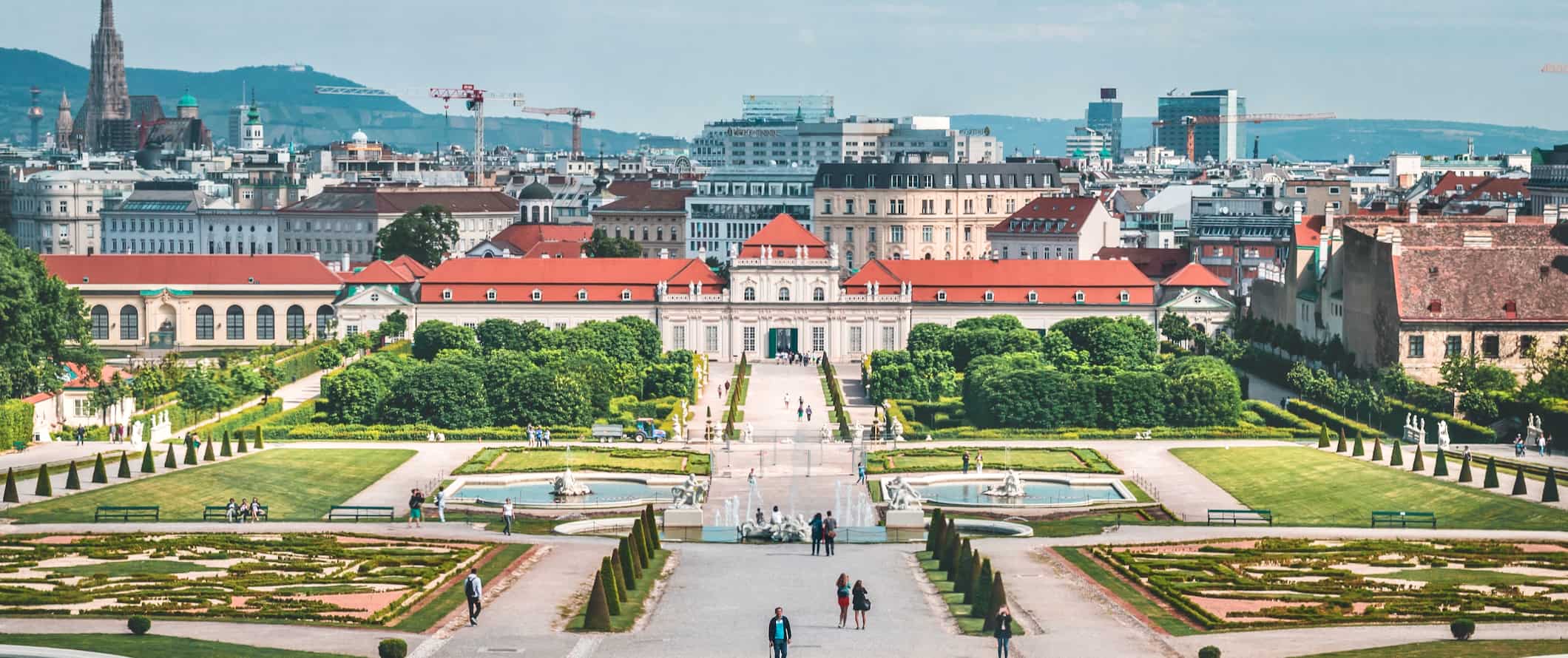
For anyone traveling with a tent, camping is available outside the city. Camping in Vienna starts around 8 EUR per night in the low season for a single tent site without electricity and around 22 EUR in the peak season (July-August).
Budget hotel prices – Two-star budget hotels start around 40 EUR per night for a double or twin but often cost closer to 60-80 EUR. This usually includes free Wi-Fi and basic amenities (TV, coffee maker) but rarely free breakfast.
Airbnb is another budget-friendly option here, with private rooms starting around 50 EUR per night. For an entire home or apartment, expect to pay at least 65 EUR per night (though prices average around 90 EUR).
Food – Austrian cuisine is a hearty, meat-oriented one, with a focus on meat, soups, stews, and pastries. The country’s food has been influenced by its neighbors in Central Europe, as well as from the expansion of the Austro-Hungarian Empire (1867–1918). Popular dishes include rindsuppe (beef soup), smoked meat with sauerkraut, wiener schnitzel (traditionally made from veal), strudel, and tafelspitz (beef boiled in broth). Breakfast usually involves bread or rolls with cold cuts, jam, or cheese.
A typical inexpensive restaurant meal costs around 15 EUR. Expect to pay at least 35 EUR for a three-course meal at a mid-range restaurant.
If you’re on a budget, stick to eating at the local markets where you can find a great selection of traditional Austrian food (like schnitzel, goulash, sausages, and potatoes) as well as Asian, Greek, and Middle Eastern dishes for around 8-16 EUR.
Fast food like McDonald’s or Burger King costs around 9 EUR for a combo meal. A large pizza should cost less than 20 EUR while Chinese food is 9-15 EUR for a main dish. Sandwiches and salads cost between 7-9 EUR.
A beer at the bar costs around 4.25 EUR while a latte/cappuccino costs 3.80 EUR. Bottled water is 2 EUR.
If you are planning to cook your own food, a week’s worth of groceries costs around 30-50 EUR for basic staples like rice, pasta, vegetables, and some meat. Hofer and Penny Markt are two of the cheaper supermarket options for groceries. For more organic options (or if you have dietary restrictions), shop at Spar.
For tasty open-faced sandwiches, check out Piotrowski. And if you’re vegan or vegetarian, head to The LaLa (healthy eats and tasty baked goods) or Swing Kitchen (fast food/burgers).
Backpacking Vienna Suggested Budgets
On a backpacker budget of 65 EUR per day, you can stay in a hostel dorm, cook all of your meals, visit a few museums, take a free walking tour, limit your drinking, and take local transportation to get around. If you plan on drinking, add 5-10 EUR to your budget per day.
On a mid-range budget of about 170 EUR, you can stay in an Airbnb or private hostel room, eat out for most meals, have a few drinks at the bar, see more museums and palaces, a day trip to Bratislava, and take the occasional taxi to get around.
On a “luxury” budget of 300 EUR per day, you can stay in a hotel, eat out for all your meals, drink out at the bar as much as you’d like, rent a car or take taxis to get around, and do private guided tours. This is just the ground floor for luxury though. The sky is the limit!
You can use the chart below to get some idea of how much you need to budget daily, depending on your travel style. Prices are in EUR.
Vienna Travel Guide: Money-Saving Tips
Vienna can be an expensive city if you don’t watch your budget. Accommodation, coffees, museums, and eating out can add up quickly. Here are some tips to help you save money when you visit Vienna:
- Take a free walking tour – Vienna offers a handful of free walking tours which are great ways to get familiar with the city and the culture. Good Tours , Anna Loves Vienna , Vienna Greeters , and The Original Free Vienna Walking Tour are all great options. Just be sure to tip your guide!
- Cook your own meals – If you want to save money on your food budget, stay in a hostel or Airbnb with a kitchen. Buying your own groceries may not be as glamorous as eating out, but it saves you money!
- Stay with a local – Staying with a local via Couchsurfing (or similar sharing economy sites) is a great way to save money. It’s also a great way to meet a knowledgeable local who can help you better understand the city and its people.
- Skip the fast train into Vienna – Unless you are in a rush to get downtown, skip the City Airport Train. It’s 11 EUR compared to the regular train (which is 4.30 EUR). The time difference is negligible, and that extra 6.70 EUR could be better spent on a cold beer!
- Get a Vienna PASS – With the Vienna PASS you get entry to over 60 attractions, museums, and monuments throughout the city. It costs 76 EUR for a one-day pass but if you’re planning to visit several of Vienna’s most popular museums/galleries then getting the pass could save you a fair amount of money especially as it has an option for public transportation too! If you’d rather not spend that much, some of the museums (that also belong to Vienna Pass) have also developed their own ticket packages.
Where to Stay in Vienna
Vienna has plenty of fun, social hostels. Here are my favorites ones to stay at:
- Wombats City Hostel
- The MEININGER Hotel
- JO&JOE
- Westend City Hostel
How to Get Around Vienna
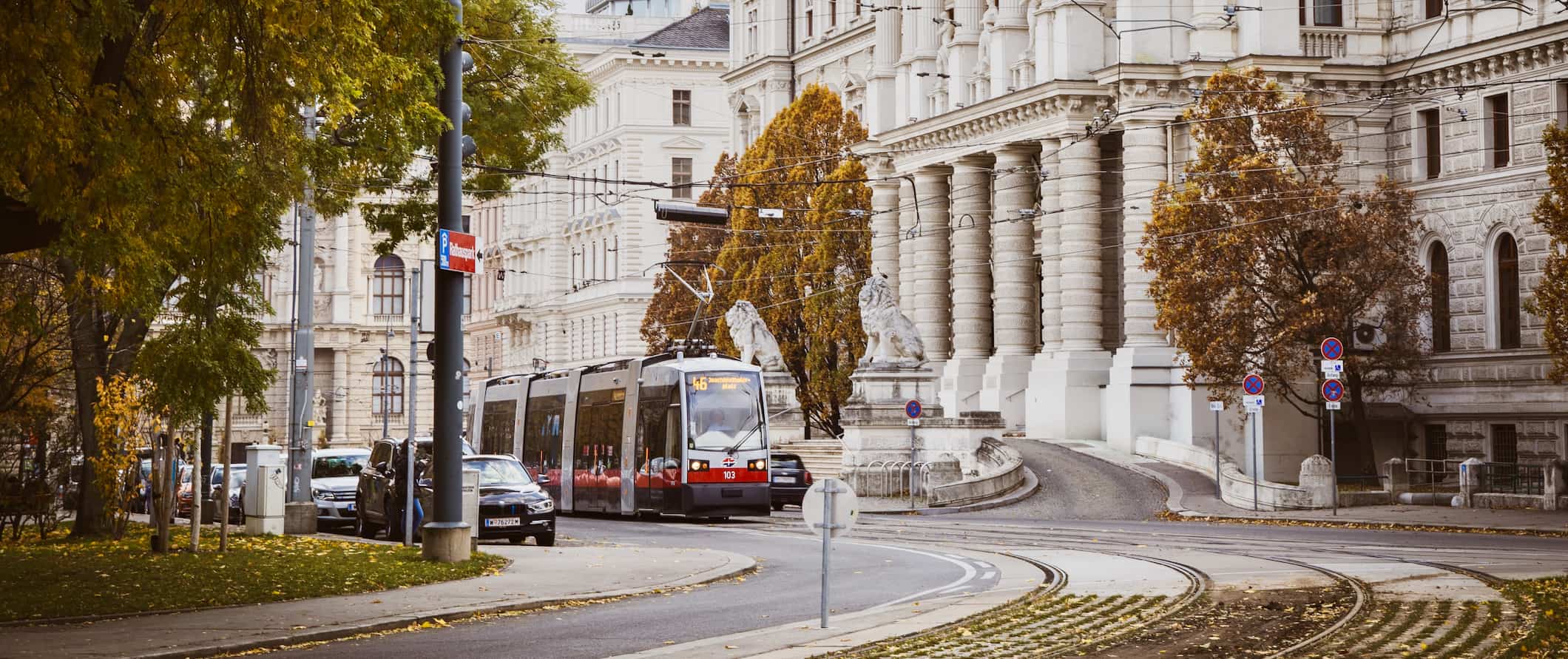
Public transport – Public transport in Vienna is safe, fast, and efficient. There are four main forms of public transport: bus (Autobus), local train (S-Bahn), tram (Straßenbahn), and subway (U-Bahn). Public transportation in Vienna works on an honor system. This can be confusing at first as there are no formal ticket checks or barriers at stations making it appear that public transport is free. Public transport is not free. You need to buy a ticket at the machines within the stations. If you get caught by one of the undercover ticket inspectors they charge you a hefty fine.
A single ticket is 2.40 EUR (zone 1 only), a 24-hour pass is 8 EUR, a 48-hour pass is 14.10 EUR, and a 72-hour pass is 17.10 EUR. The weekly pass (valid from Monday to Monday) is also 17.10 EUR.
If you’re flying into Vienna, the direct airport train is only 16 minutes to downtown and costs 11 EUR (19 EUR return). If you’re not in a hurry, however, take the regular train instead. It is only 4.30 EUR.
Taxis – Taxis should be avoided if you’re on a budget as they can add up fast. Fares start at 4 EUR and go up by 1.70 EUR per kilometer. Uber is also available here and is cheaper than a taxi so use it instead.
Bicycle – If you want to explore the city by bike you can find rentals for under 10 EUR per day via ListnRide . It matches you with a local renting their bike for cheap.
Car Rental – You don’t need to rent a car to get around Vienna. Most areas are walkable and public transportation is efficient. However, if you want to rent a car to get out of the city, expect to pay at least 35 EUR per day. Make sure to have an International Driving Permit (IDP) — you need one for any car rental.
When to Go to Vienna
There’s no wrong time to visit Vienna. The summer months (June-August) offer the best weather. However, this is the peak season for tourists so things are busier. During July and August, many local residents leave the city for what they call Sommerpause (Summer break) meaning many small local businesses close. Expect daily highs around 25°C (77°F)
Winter is from December to March. It gets cold, with temperatures dropping as low as -15°C (5°F). That said, November and December are considered to be the most magical months in the city because of the Christmas markets. The city looks gorgeous covered in snow!
Personally, I think the best time to visit Vienna is the shoulder season (April-June and September-October). It’s still warm during this time but there aren’t as many other tourists and prices aren’t as high as in the summer.
How to Stay Safe in Vienna
Vienna is a very safe city. That said, pick-pocketing can still occur in large crowds or on crowded public transportation. The 1st District (where you can find many of the city’s historic landmarks) and the 4th District (Karlsplatz/Karlskirche) are the main areas to be vigilant.
Be on the lookout for fake event tickets being sold on the street. This can be easily avoided by only booking tickets directly from the venue.
Also be cautious of people posing as plain-clothes police officers asking to see your passport. This has become common in the main tourist areas and in public transport stations. When you produce your passport, they take it and accuse you of a minor crime and demand you pay a fine. If you refuse, they can get aggressive and while you are distracted an accomplice picks your pockets.
While these scams are rare, it’s better to be safe than sorry. You can read about more common travel scams here so you know what to look out for.
Solo female travelers should generally feel safe here. However, the standard precautions apply (never leave your drink unattended at the bar, never walk home alone intoxicated, etc.). Look for specific tips on solo female blogs as they’ll have more tips from experience than I can provide.
If you experience an emergency, dial 112 for assistance.
When in doubt, always trust your instincts. If a taxi driver seems shady, get out. If your hotel or accommodation is seedier than you thought, go somewhere else. Make copies of your personal documents, including your passport and ID, in case of an emergency.
The most important piece of advice I can offer is to purchase good travel insurance. Travel insurance protects you against illness, injury, theft, and cancellations. It’s comprehensive protection in case anything goes wrong. I never go on a trip without it as I’ve had to use it many times in the past. You can use the widget below to find the policy right for you:
Vienna Travel Guide: The Best Booking Resources
These are my favorite companies to use when I travel. They consistently have the best deals, offer world-class customer service and great value, and overall, are better than their competitors. They are the companies I use the most and are always the starting point in my search for travel deals.
- Skyscanner – Skyscanner is my favorite flight search engine. They search small websites and budget airlines that larger search sites tend to miss. They are hands down the number one place to start.
- Hostelworld – This is the best hostel accommodation site out there with the largest inventory, best search interface, and widest availability.
- Booking.com – The best all around booking site that constantly provides the cheapest and lowest rates. They have the widest selection of budget accommodation. In all my tests, they’ve always had the cheapest rates out of all the booking websites.
- HostelPass – This new card gives you up to 20% off hostels throughout Europe. It’s a great way to save money. They’re constantly adding new hostels too. I’ve always wanted something like this and glad it finallt exists.
- Get Your Guide – Get Your Guide is a huge online marketplace for tours and excursions. They have tons of tour options available in cities all around the world, including everything from cooking classes, walking tours, street art lessons, and more!
- The Man in Seat 61 – This website is the ultimate guide to train travel anywhere in the world. They have the most comprehensive information on routes, times, prices, and train conditions. If you are planning a long train journey or some epic train trip, consult this site.
- Rome2Rio – This website allows you to see how to get from point A to point B the best and cheapest way possible. It will give you all the bus, train, plane, or boat routes that can get you there as well as how much they cost.
- FlixBus – Flixbus has routes between 20 European countries with prices starting as low 5 EUR! Their buses include WiFi, electrical outlets, a free checked bag.
- SafetyWing – Safety Wing offers convenient and affordable plans tailored to digital nomads and long-term travelers. They have cheap monthly plans, great customer service, and an easy-to-use claims process that makes it perfect for those on the road.
- LifeStraw – My go-to company for reusable water bottles with built-in filters so you can ensure your drinking water is always clean and safe.
- Unbound Merino – They make lightweight, durable, easy-to-clean travel clothing.
- Top Travel Credit Cards – Points are the best way to cut down travel expenses. Here’s my favorite point earning credit cards so you can get free travel!
Vienna Travel Guide: Related Articles
Want more info? Check out all the articles I’ve written on backpacking/traveling Europe and continue planning your trip:

The 7 Best Hotels in London

10 Scotland Road Trip Tips You Need to Know Before You Go

The Perfect 7-Day Croatia Itinerary

The 6 Best Hotels in Copenhagen

The 6 Best Hotels in Florence

The 7 Best Hotels in Madrid
Get your free travel starter kit.
Enter your email and get planning cheatsheets including a step by step checklist, packing list, tips cheat sheet, and more so you can plan like a pro!

- Where To Stay
- Transportation
- Booking Resources
- Related Blogs
18 top things to do in Vienna
Jul 1, 2021 • 8 min read

Cycling on Danube Island in Vienna's Donaustadt district. © Balakate/Shutterstock
Museums filled with masterpieces, brilliant baroque streetscapes, sumptuous palaces and epicurean delights, naturally Vienna is an unmissable stop on your Europe adventure.
Now with street art, craft beer brewing, an analogue-only hotel stay, and summer ‘beach bars’, contemporary Vienna continues to flourish as a creative cultural hub.
Kunsthistorisches Museum Vienna
The jewel in Vienna's artistic crown is its Kunsthistorisches Museum Vienna . As well as accumulating vassal lands, the Habsburgs assembled one of Europe's finest collections of art and artefacts. Housed inside a majestic neoclassical building, the highlight of this incredible cache is the Picture Gallery, an encounter with a vast and emotionally powerful collection of works by grand masters, such as Pieter Bruegel the Elder's evocative and 'industrial' Tower of Babel from the 16th century or the bright plenitude of Giuseppe Arcimboldo's Summer.

Vienna’s coffee houses
Great works of art have been created in these 'living rooms' of the Viennese. Patronised by luminaries such as Mahler, Klimt, Freud, Trotsky and Otto Wagner in their day, Vienna's Kaffeehäuser (coffee houses) were added to the Unesco list of Intangible Cultural Heritage in 2011. Many retain their opulent original decor, and often specialise in a particular cake, such as the Sacher Torte, an iced-chocolate cake with apricot jam once favoured by Emperor Franz Josef, at Café Sacher. New-wave coffee houses are putting their own twist on the tradition.
MuseumsQuartier
Have you had enough of culture yet? No? Good, because the MuseumsQuartier (MQ) is a 90,000 sq metre exhibition space encompassing 60 cultural institutions ranging from fine art, music, theatre, and dance to game culture, street art and photography. Highlights include – including the Leopold Museum , MUMOK , Kunsthalle Wien , Architekturzentrum and Zoom but there are multiple micro-museums and creative spaces to explore. It’s also one of the key locations for the annual Wiener Festwochen (Vienna Festival) held over six weeks in May and June.

The annual Calle Libre street art festival focuses on one guiding theme as celebrated artists respond across curated walls for a week each summer. Founded almost a decade ago by Jakob Kettner, the festival brings together live paintings, street art works, guided tours, film screenings and workshops for urban aesthetics. You’ll get the chance to learn more about Vienna’s burgeoning street art scene, discover works from local and international artists, and find out what issues are shaping and challenging the city today.
Ringstrasse Tram Tour
For a spin around Vienna's architectural highlights, jump on a tram and travel along the Ringstrasse , one of Europe's most magnificent streets. The circular boulevard of imposing state buildings was carved out of the space once occupied by fortifications protecting Vienna from Ottoman Turk attack in the 16th century. You’ll pass the Monument to the Victims of Fascism at the former Gestapo headquarters site, the neoclassical facade of Parlament, Austria’s parliament, the Athena Fountain, and Äusseres Burgtor (Outer Palace Gate). The Roman gate leads the way to the Imperial Palace, the Hofburg.

Schloss Schönbrunn
The magnificent rococo former summer palace and gardens of the Habsburgs are a perfect place to experience the pomp, circumstance and gracious legacy of Austria's erstwhile monarchs. A visit to 40 of the palace's lavishly appointed rooms reveals the lifestyle and the eccentricities of Europe's most powerful family. Beyond the Unesco-listed palace, Schloss Schönbrunn Gardens invite a stroll past pseudo-Roman ruins, along bucolic paths winding through leafy woods and a stopover in the gardens' highlight, the Gloriette, with mesmerising views of the palace and city beyond.
Hofburg Palace
The former wintering ground of the Habsburg monarchs for over 700 years, Hofburg is a living palace today. One of the biggest palace complexes in the world, it now houses a fine collection of museums, is home to the Austrian president, Austria's National Library and public offices. It is also the temporary home of the Austrian Parliament while the main building undergoes renovations expected to be completed in 2024.

Donauturm tower
The newly renovated 1960s modernist Donauturm tower offers panoramic views across the city and the Danube river. It’s also located in one of the most beautiful and largest parks in the city, the Danube Park making it doubly worth a visit. From the top you’ll see the entire surrounding region of Vienna on a clear day. Who can resist booking a sunset meal at a rotating restaurant at 170m high? This is peak tourist, and we love it. The set-price Viennese three-course meal includes lift tickets.
Whether it's coffee houses, local dining, or a pub crawl, there are a host of tours on offer to the best places to eat and drink in Vienna. Bi-lingual local tour guides guide visitors to different, seasonally appropriate (Christmas market foodie tour anyone?) locations to show off the best the city has to offer. One popular outfit founded by local couple Melinda and Thomas, Vienna Food Tours covers the variety of cuisines that influenced Viennese food: sampling appetizers, a sausage stand, mains, and of course something sweet to round it off over a whole afternoon.
Riesenrad Giant Ferris Wheel
It’s famous among cinephiles as the place Graham Greene sent his fictional character Harry Lime for a slow rotation in the 1949 film The Third Man. The 1897-built Riesenrad , otherwise known as the Viennese Giant Ferris Wheel, rises above the beautiful green open spaces of the Prater in Vienna’s 2nd district. A ride takes you high above the city and the wooded parkland and meadows below. Save some time to explore the Prater by foot or bicycle after you return to ground level.

Schloss Belvedere
Living up to its Italianesque name 'beautiful view', this 18th-century palace and garden ensemble is deceptively close to Vienna's city centre while still creating a feeling of being worlds apart. Symmetrical, finely sculpted and manicured gardens overlooking Vienna's unfolding skyline connect two exquisite palaces dedicated to a who's who of Austrian art. Gustav Klimt's painting The Kiss is a highlight. The masterpieces on display are complemented by interiors so stately that they're worthy of a visit in their own right.
Stephansdom
A Gothic reminder of another age, the Stephansdom is Vienna's heart and soul. The awe-inspiring cathedral lords over the city, topped by an intricately tiled roof, with its distinctive row of chevrons and Austrian eagle. Below the cathedral are the Katakomben (catacombs), with their eerie collection of the deceased; inside, a magnificent Gothic stone pulpit presides over the main nave; and rising above it to dizzying heights is the South Tower with its viewing stage offering dazzling panoramas over town.
Copa Cagrana Beach
Just beyond the city centre, nestled by the Donauinsel, lies Copa Cagrana Beach , a stretch of sandy beach bars, pop-up food stalls and a large open-air TV viewing area that locals flock to in the summer months. Only open between June and September Vienna makes the most of the holiday atmosphere with volleyball courts, trampolines and green space beside the water. Nibble on delicate Trześniewski sandwiches (open finger sandwiches) as you look across the Donaukanal, or satiate your summer cravings with a fresh spritzer.

Vineyard hiking
The hills surrounding Vienna are awash with vineyards and views, ripe for hiking and tippling in equal measure. Held in autumn (typically late September or October), the annual wine hiking day sees over 190 winemakers set up small wooden huts along the popular walking paths above Vienna, where thirsty hikers can stop in to try the fresh wine harvest of the year. Pick up your glass from one of the hiking-day stations at the bottom of the trail, and meander your way from Neustift to Nussdorf, Strebersdorf to Stammersdorf, or the shorter Ottakring to Neuwald route. The ‘hikes’ themselves are quite low impact and allow plenty of time to stop, sip and enjoy the fresh air.
VHS, vinyl and typewriters
Seeking a true digital detox can be challenging, with a constant barrage of tech an unavoidable part of our daily lives. To help you stay offline and relax, 25 Hours hotel has collaborated with Supersense cafe to create the first ‘analogue hotel room’ for your perfectly curated escape from modern life. Replacing wi-fi and wide screens with a typewriter, VHS player and vinyl records, the suite offers a stylish retreat to the simpler technologies of decades gone by. Perfect for a truly unplugged weekend getaway. If you want to explore further, book a bicycle from their friends at Schindelhauer.

Craft beer has come of age in Vienna with a number of bars specialising in locally made brews. Just off Mariahilferstrasse, Ammutson Craft Beer Dive 's commitment to fresh tap beer from local microbreweries is a welcome addition to the scene. While stalwart craft beer venues like Beaver Brewing Company continue to provide a hearty mix of delicious food, alongside their expansive and regularly changing craft beer menus. Beer drinkers, on your marks...
Christmas markets
Vienna's much-loved Christmas market season runs from around mid-November to Christmas Eve. The Christkindlmärkte atmosphere is magical with stalls in streets and squares selling wooden toys, festive decorations and traditional food such as Würstel (sausages) and Glühwein (mulled wine). The centrepiece is the Wiener Weihnachtstraum Christkindlmarkt on Rathausplatz but you'll find Christmas markets across the city including at Schloss Schönbrunn.
Rudolfsheim-Fünfhaus: 15th district
The 15th district is experiencing a rejuvenation thanks to community driven events, interesting stores and markets. Brunch and coffee lovers can get their fill at Landkind , Das Augustin and Turnhalle im Brick 5 , and see Austria’s best barista slinging lattes at GOTA Coffee Experts . Hidden down the district's side alleys is the unique indie art gallery, Improper Walls , and quirky stores such as Metaware , a ‘gift shop for nerds & geeks’.
In the evenings, there’s a wealth of food and drink options to explore in the district, from Das Eduard’s pita burgers on its outdoor terrace, to indie bar ein affee and wine haven Reinwein . Vegetarians can enjoy the secluded delights of restaurant and art gallery Hollerei , a short walk from Meidling Hauptstrasse station.
This article was first published in May 2019, last updated by Tasmin Waby on 29 June 2021.
Free things to do in Vienna Best day trips from Vienna The 7 best things to do in Vienna with kids
This article was first published May 13, 2019 and updated Jul 1, 2021.
Explore related stories

Architecture
Jun 16, 2022 • 7 min read
Panama City’s hippest neighborhood is also its smallest and most historic. Here's our guide to the best things to do in charming, timeless Casco Viejo.

May 15, 2022 • 12 min read

Mar 9, 2021 • 5 min read
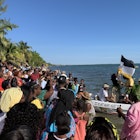
Feb 17, 2020 • 6 min read

Dec 4, 2019 • 5 min read

Jun 30, 2024 • 6 min read

Jun 29, 2024 • 8 min read

Jun 29, 2024 • 9 min read

Jun 28, 2024 • 6 min read
Discover Vienna
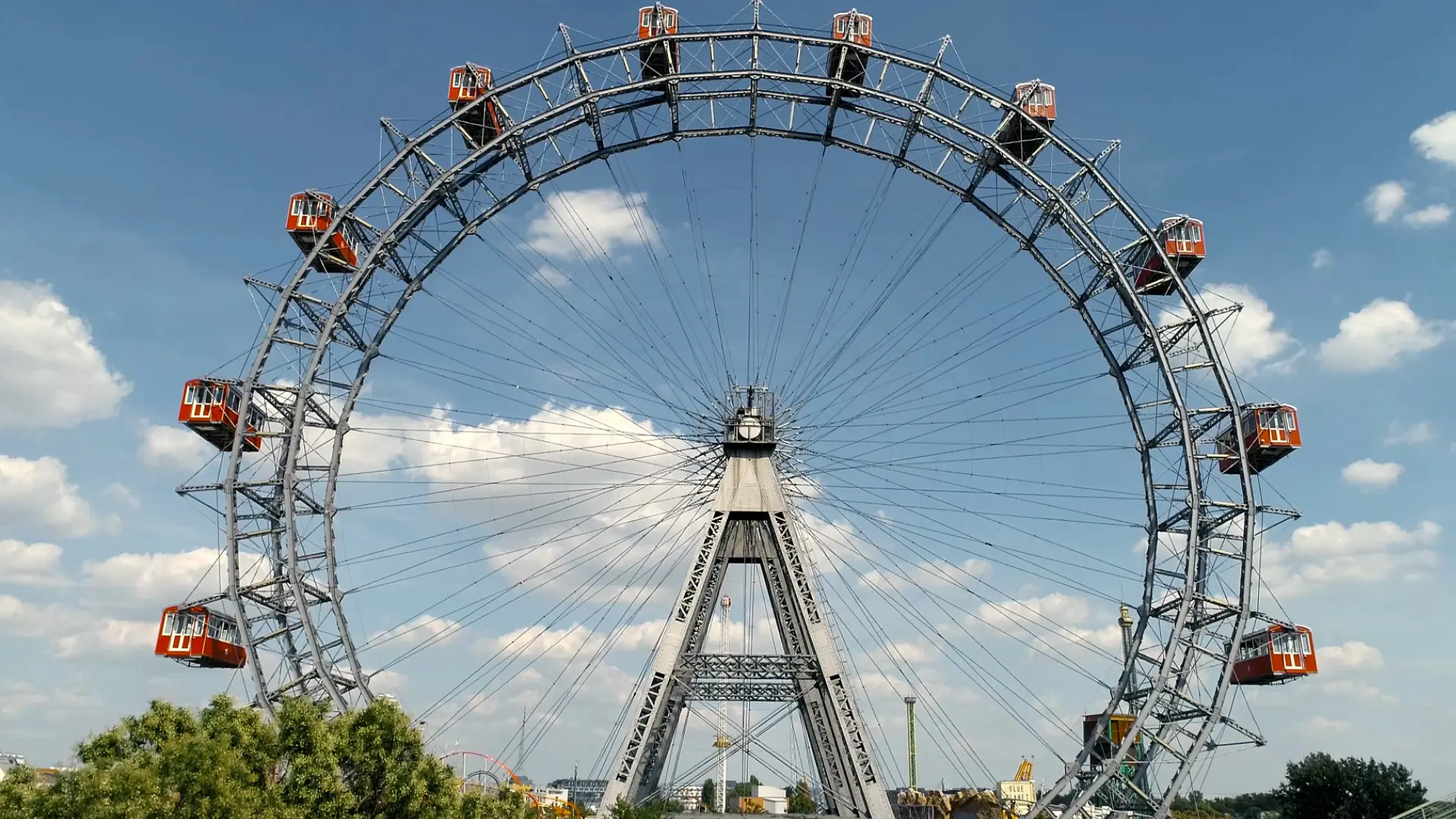
The official travel guide of the City of Vienna.
Summer in Vienna
That summer feeling is coming: summer in Vienna offers numerous outdoor activities, open-air events and cozy places to relax. We look forward to seeing you ...
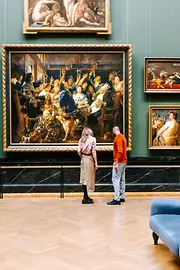
Museums & Exhibitions
Immerse yourself in art.
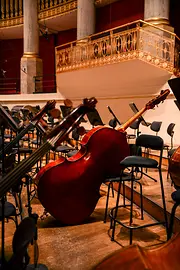
Music & Stage Shows
Experience the sound of Vienna.

Dine & Drink
Savor Vienna with all the senses.
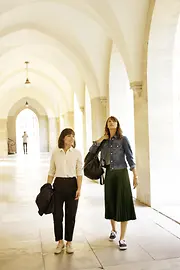
Discover the many facets of the city.
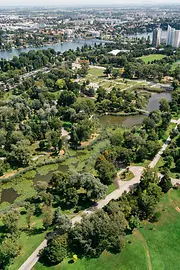
Livable Vienna
Vienna is a great place to live.
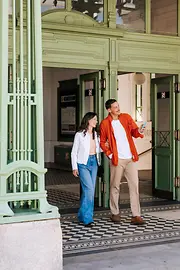
Sleep & Stay
Useful tips for travelling to Vienna.
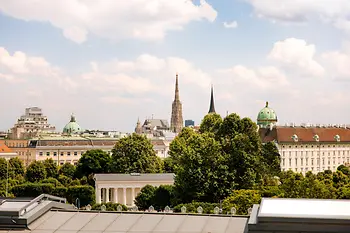
An overview of Vienna's main sights from A to Z at a glance.
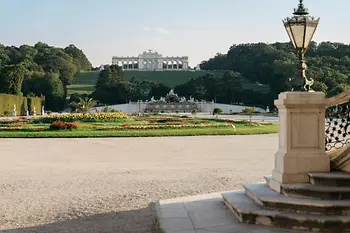
Imperial Vienna
Walk in the footsteps of the monarchy through imperial Vienna.
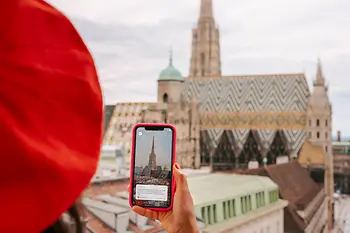
ivie is the digital city guide app for Vienna.
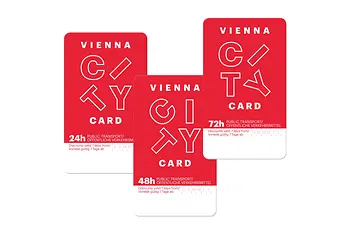
Vienna City Card. The official City Card.
The Vienna City Card is the perfect companion for exploring Vienna.
Could you be suffering from Post Vienna Blues?
Hungry for more: sandwiches in vienna.
Explore Vienna's extraordinary sandwich landscape with chef Lukas Mraz.
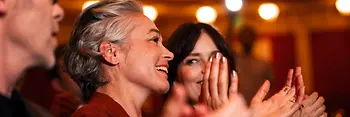
Event Search
Our event search feature presents you with a selection of events in Vienna.

For Families
Tips for a visit to Vienna with the kids

Filter results
Finding the Universe
Travel tales, photography and a dash of humor
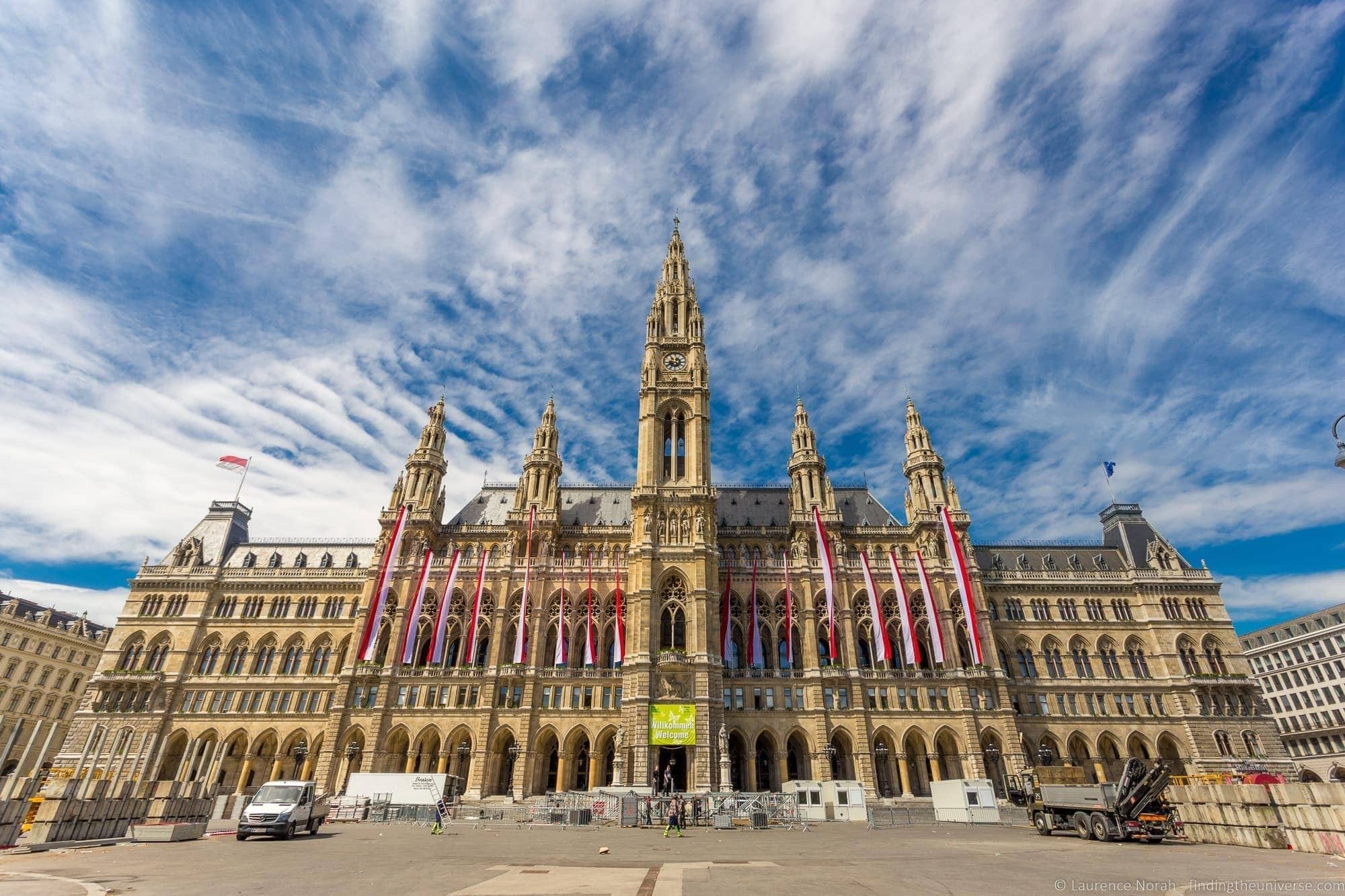
3 Days in Vienna: The Perfect Vienna Itinerary
Last updated: December 15, 2023 . Written by Laurence Norah - 46 Comments
We think that three days in Vienna is the perfect amount of time for a visit. Three days will let you see the majority of the main sights in this beautiful city that you’re interested in, plus add in a few of the less well-known attractions, without being too rushed.
In this post, we’re going to share with you our idea of the perfect itinerary for three days in Vienna. As well as covering all the key attractions we think you’ll enjoy visiting, we’re also going to share some practical tips and advice for your visit, including tips on where to stay, where to eat, tips for getting around Vienna, and how to save money on sightseeing.
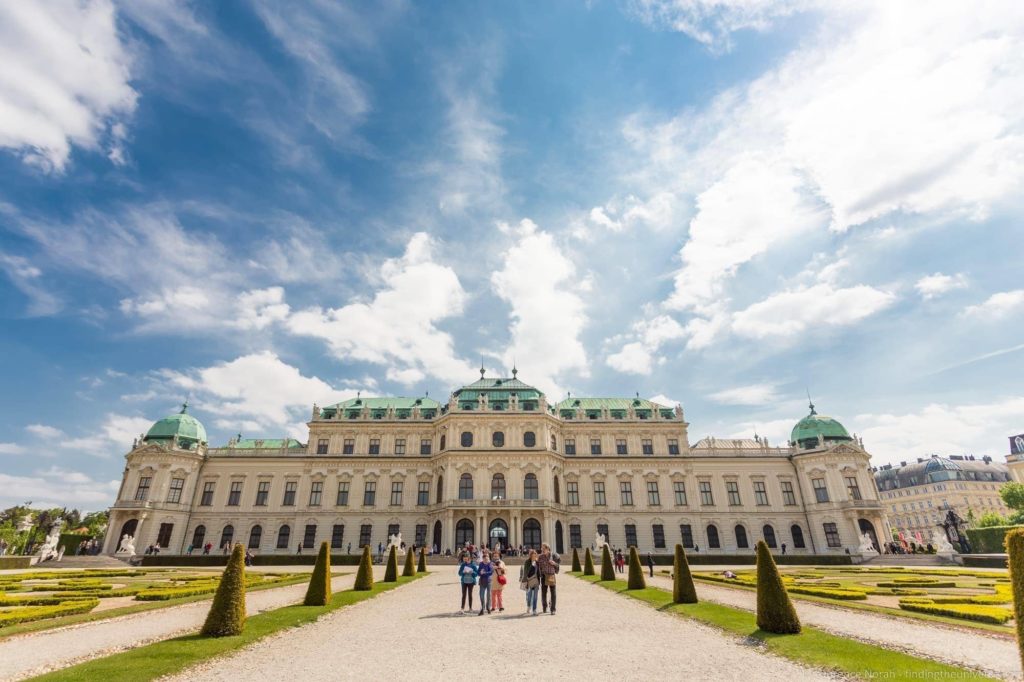
If you do have less time in Vienna, check out our itinerary for two days in Vienna . But now, let’s take a look at how to spend 3 days in Vienna.
3 Days in Vienna
Day 1 in vienna, mozarthaus vienna.
Vienna is very much associated with Mozart, one of the most well known composers of Classical music. Vienna was his home for many years during his prolific career, and he lived at a number of properties during his time in the city. Only one of these homes survives today – the Mozarthaus , which you’ll find in Vienna’s Old Town on Domgasse. Which is our suggested first stop on day one of our three day Vienna itinerary.
Mozart lived at this property for three years between 1784 and 1787, and it has been open to the public since 1941. In 2004 it was totally redesigned, and now the whole building is a centre dedicated to the life of the composer.
You don’t have to be a Mozart fan to enjoy a visit to this building – it’s a good insight into life in general in Vienna in the late 18th century. Naturally it’s also filled with information about Mozart and his life, so even if you don’t know much when you arrive – you’ll certainly know a lot when you leave!
The Mozarthaus is open daily from 10am – 7pm, and there’s an admission fee. You can see the official website for more details.
Entrance is included for holders of the Vienna Pass and the Go City Vienna Pass .
You can also buy individual tickets online in advance here .
St. Stephen’s Cathedral
Just a short walk from the Mozarthaus is the magnificent St. Stephen’s Cathedral , the seat of the Catholic church in Vienna. This is found right in the centre of the old town. and is hard to miss!
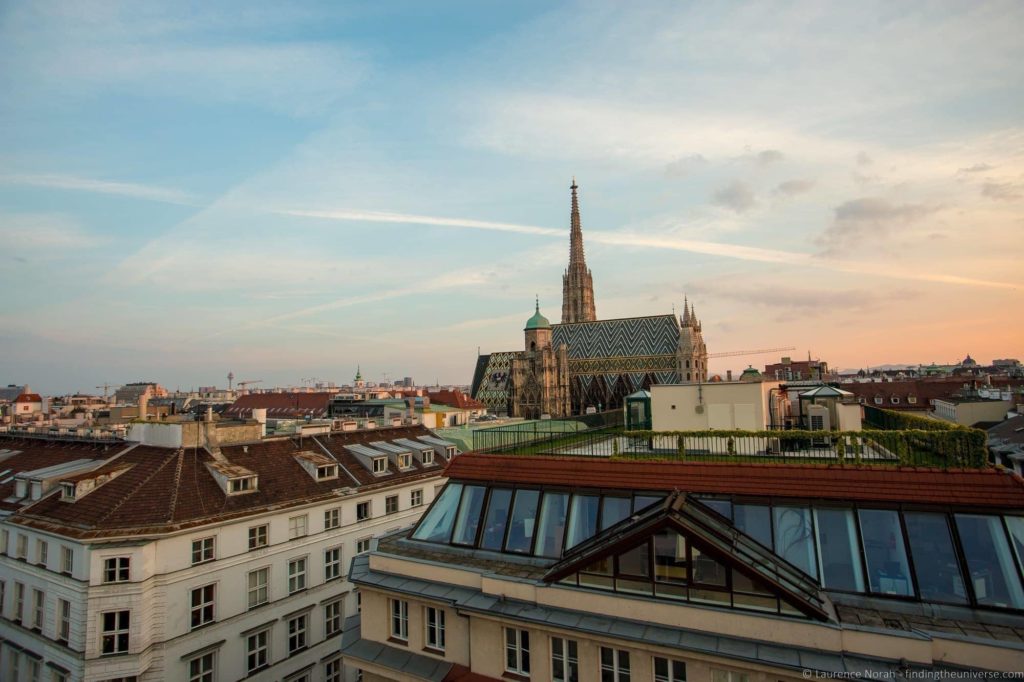
As you approach you will instantly notice the roof, which is decorated with glazed and painted tiles in an ornate design. There are also two large towers – the massive south tower, which stands at 136m tall, and the smaller north tower which is 68 metres tall. Both of these towers are open to the public, and can be climbed for a fee. As expected, the higher south tower offers the best views over the city.
Naturally, you can also go inside the cathedral, which is of a largely Romanesque / Gothic design, and predominantly dates from the Middle Ages. The three nave design with it’s huge columns is definitely an impressive sight and you can visit for free. You can also visit the Treasury.
This does require a small fee (included with the Vienna Pass), but you get to see more stuff and it offers good views of the main church interior from a first floor viewing area. The fee also means it’s a lot less busy, so you can enjoy the building without feeling too hemmed in.
Vienna State Opera House Tour
Vienna has a world famous state opera house which dates from 1869 and has played host to some of the world’s most famous singers and conductors.
If you are particularly interested in the Opera, then a night here watching a performance is likely to be an experience you will never forget. You can check performance times and buy tickets for shows at various venues in Vienna here .
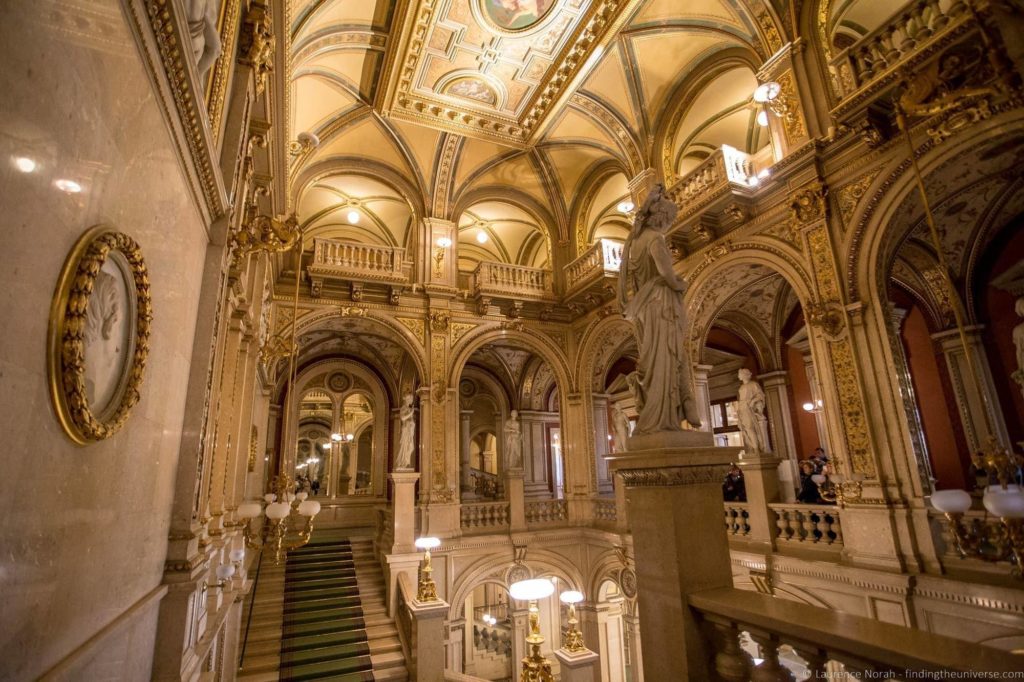
However, you can also visit the opera house without seeing a performance, by taking a guided tour.
These last around forty minutes, and you’ll learn all about the fascinating history of the building, see all the main highlights, and even get a behind the scenes look at how an opera house is run.
Tours run a number of times during the day – see the official website for information and pricing.
Wien Museum
If you’re interested in learning more about the history of Vienna, we suggest heading to the Vienna Museum, or Wien Museum.
This is spread out over a number of buildings across the city, but we recommend you visit the main building on Karlsplatz .
Spread across three floors, this building houses an excellent spread of artistic and historical exhibits that will give you an excellent overview of the history of Vienna, as well as some of its more notable artists and other residents over the ages.
On display you’ll find everything from neolithic finds through to Roman archaeological discoveries through to displays from the present day.
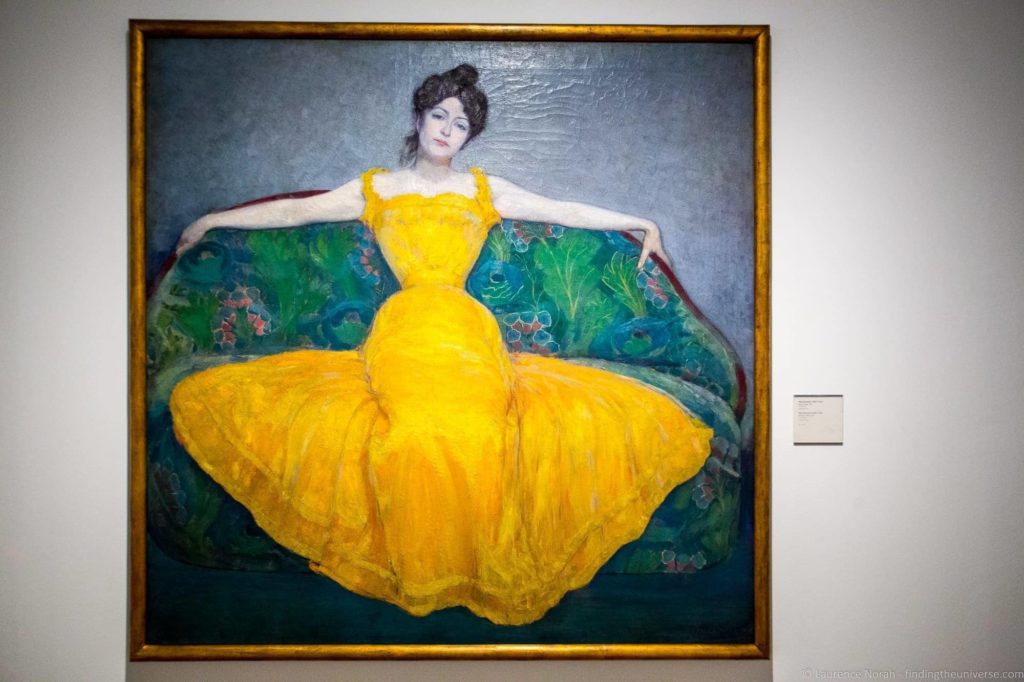
There are also notable artworks from Gustav Klimt and Egon Schiele on display, as well as two incredible models of the city, one of which shows what Vienna would have looked like in the mid-19th century.
Even if you aren’t usually a “museum” person, we think you will enjoy the Wien Museum, and if you only visit one museum in the city, this should be it.
Karlskirche
Right next to the Wien Museum is the beautifully ornate Karlskirche, or St. Charles Church.
This is an 18th century Baroque style church with two impressive spiral columns on the exterior. It was built by Holy Roman Emperor Charles VI, largely to celebrate the end of the plague in the city, and is dedicated to St. Charles, known as a plague healer.
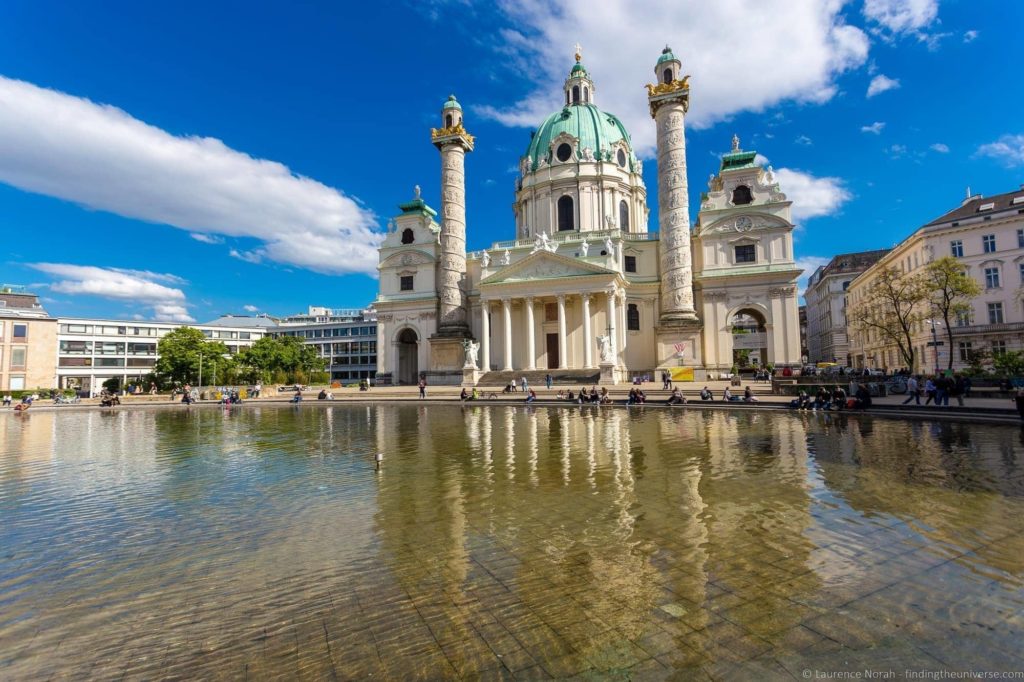
It’s a striking building with the central dome and two spires, and the lake in front of it offers a lovely reflection as well.
Of course, you can also go inside, where one of the highlights are the spectacular frescoes that adorn the interior of the dome.
You can also take a panoramic elevator for a closer view of the frescoes. There’s an admission fee for the church, and you can see that and the opening times at the official website.
We’re going to round off our first day of sight-seeing in Vienna with a visit to one of Vienna’s most famous markets – the Naschmarkt . This is just a short walk from Karlskirche.
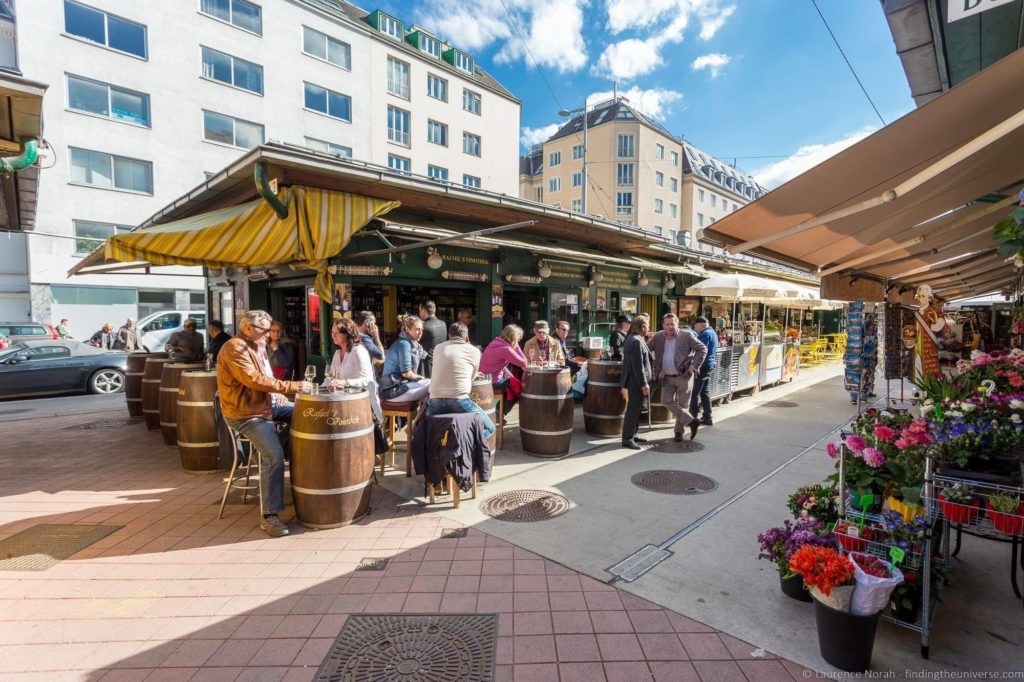
The Naschmarkt runs for almost a mile along Wienzelle, and is Vienna’s largest market by far. It’s also got some pedigree, having existed here since the 16th century – although back then if you came here you’d largely only be able to buy milk.
Today there is a lot more on offer than milk. You’ll find fruit and vegetables from the around the world, exotic spices, olives, cheeses, meat, seafood – almost anything you can imagine in fact. There are also many restaurants and food stalls serving everything from sushi to Viennese specialities. A fine way to end your first day exploring Vienna, we think you’ll agree!
Day 2 in Vienna
Spanish riding school.
One of Vienna’s most famous attractions is the Spanish Riding School, home of the Lipizzan horses. These horses and their riders regularly perform shows in the winter riding school arena, a purpose built building which dates from 1729. The shoes focus on classical dressage, and are rightly world famous.
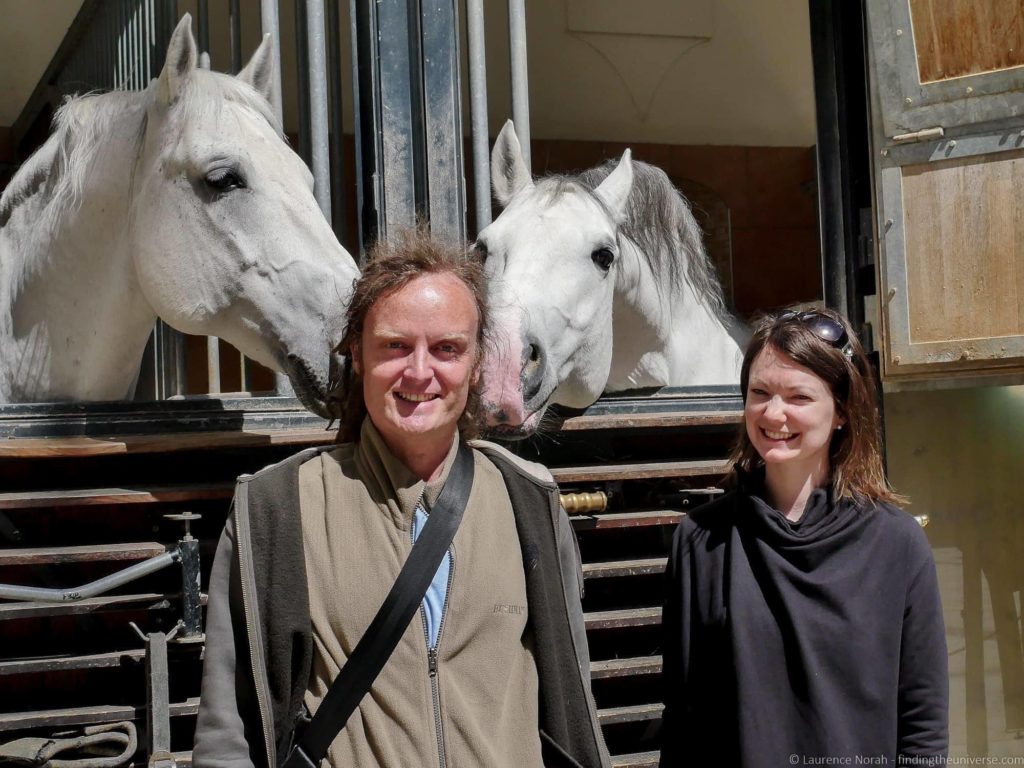
However, you don’t have to book tickets for a show to see these beautiful horses in action. On a number of mornings through the week, the riders and the horses do training exercises in the arena, and you can watch these training exercises for a moderate fee.
It’s worth noting that these are training exercises rather than a whole show, so don’t go expecting to see an elaborate co-ordinated spectacle. If that’s what you’re after, you should attend an actual performance. Also note that photography is not permitted during the training.
If you are interested in the behind the scenes operation of the Spanish Riding School, you can also take a guided tour. We were lucky enough to be taken on a private guided tour, and very much enjoyed getting to meet the horses and learn about their lives.
Just be aware that for the horses’ health, you aren’t allowed to actually touch the horses (although as you can see from the photo, the horses did try and have a nibble on my hair in case it was actually hay!).
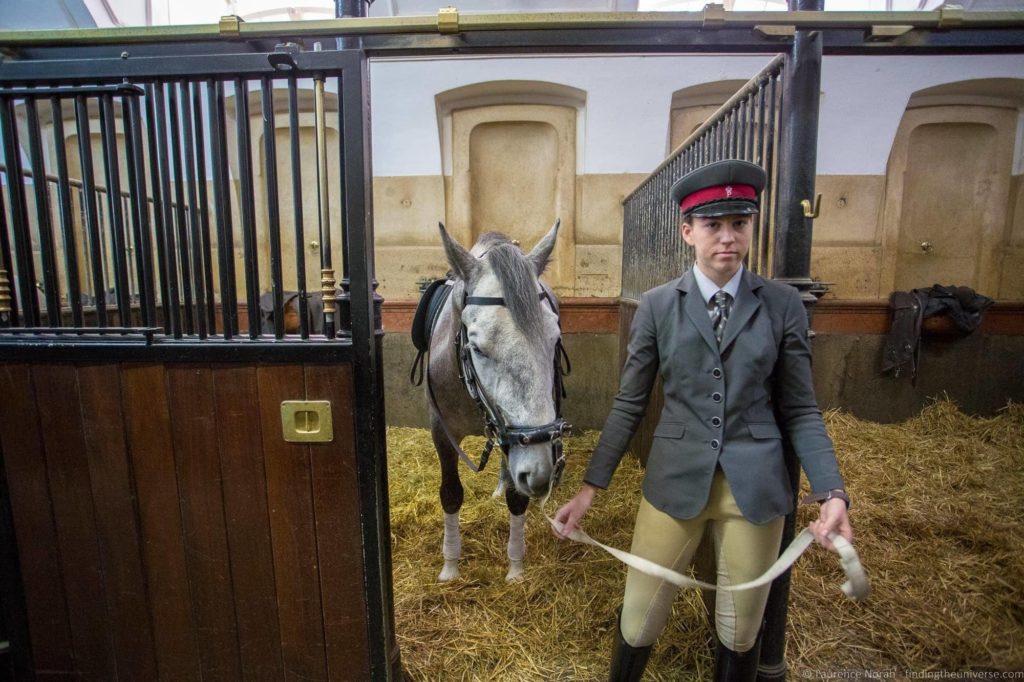
For information on times and prices, see the official website of the Spanish Riding School .
Entry to the morning exercise is included on the Vienna Pass and the Go City Vienna Pass . You can also book tickets online here .
I’m now going to suggest a number of museums and art galleries that you might be interested in visiting.
Visiting all three of these might be a challenge if you also want to do the activities at the end of the day, but I wanted to include them all so you can decide which sounds best to you.
You could also add them in to the first day of the itinerary if you have time. It all depends on your own pacing.
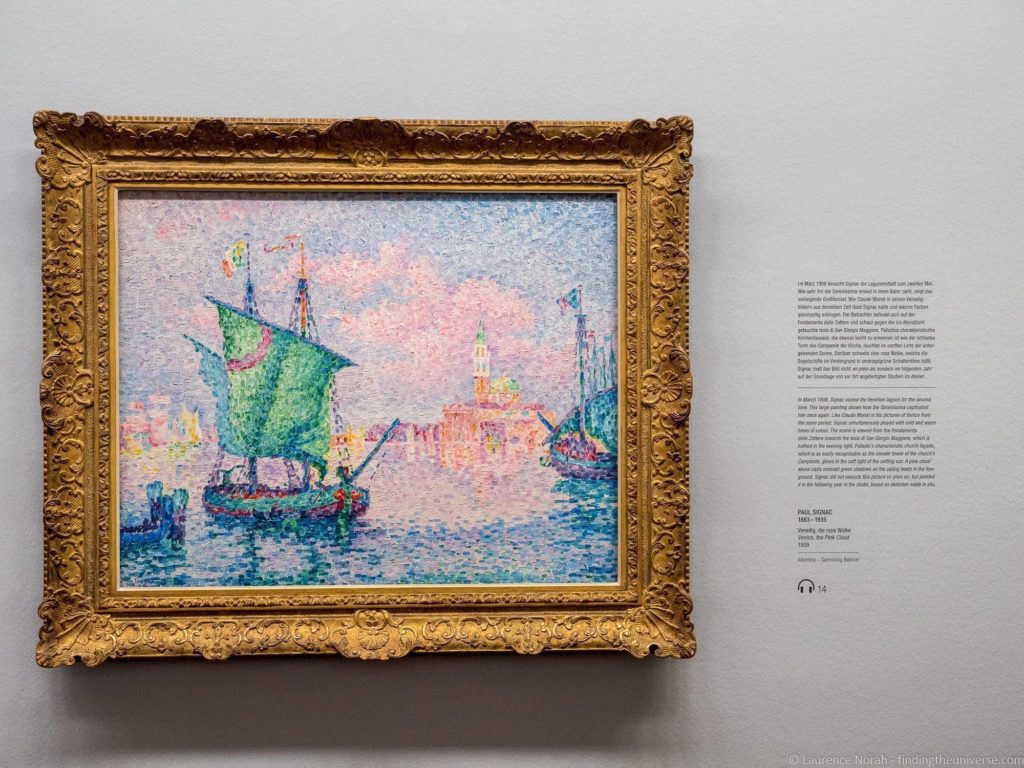
The first museum you should consider adding to your Vienna itinerary is the Albertina . This is an art museum, found in the Hofburg Palace complex, which is home to one of the largest print rooms in the world.
With over a million items in the collection, you are assured to see something you like, with art from world renowned artists from Monet to Cezanne to Picasso on display. It’s also home to the Hofburg Palace staterooms, which included as part of your entry fee.
The Albertina is open daily from 10am to 6pm, and until 9pm on Wednesdays and Fridays. There’s an admission fee – you can see more at the official website here . Entry is included on the Vienna Pass.
Natural History Museum
If you prefer your museums to contain fossils, dinosaurs and other items of a natural history theme, then you should head to Vienna’s Natural History Museum .
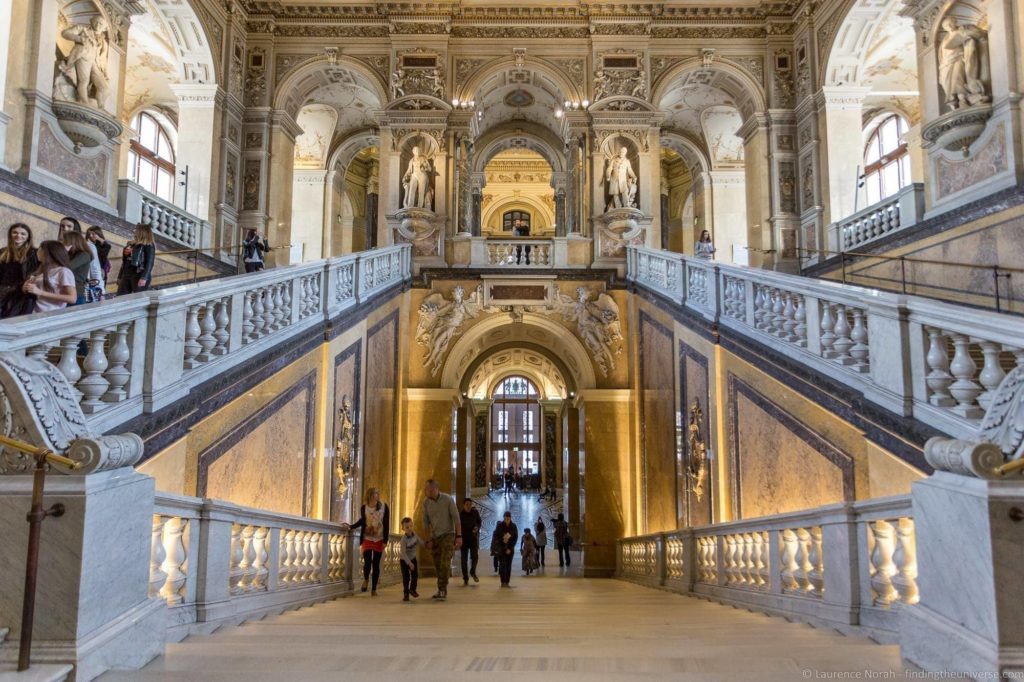
This is housed in a spectacular building (Vienna has a lot of spectacular buildings), which was purpose built and opened in 1889 as a museum to house the Habsburg collection. Today, the museum collection contains over 30 milion items, collected over 250 years, and makes for an impressive visit.
The Natural History Museum will definitely be for anyone who loves to learn about the history of the earth, and there’s everything here from dinosaur skeletons to exhibits on the history of the solar system. You could easily spend a whole day just exploring this museum if you wanted to.
The Natural History Museum is open Thursday – Monday from 9am – 6.30pm, and Wednesday from 9am – 9pm. It is closed on Tuesdays and for public holidays. You can see full opening hours and ticket prices on the official website here . It’s also included on the Vienna Pass.
Note that directly opposite the Natural History Museum is the Kunsthistoriche Museum . This is built in the same style and is a museum to the arts. So you might opt to visit this instead of (or as well as!) the Natural History Museum.
Sigmund Freud Museum
With Jess’s background as a psychologist, naturally, we had to visit the Sigmund Freud museum in Vienna – and this might be something you are interested in as well.
The museum is housed in the former apartment and office of Freud himself, and has been open to the public since 1971. It’s not a huge space, but it does contain a number of items related to Freud including some of his clothes and part of his antiques collection.
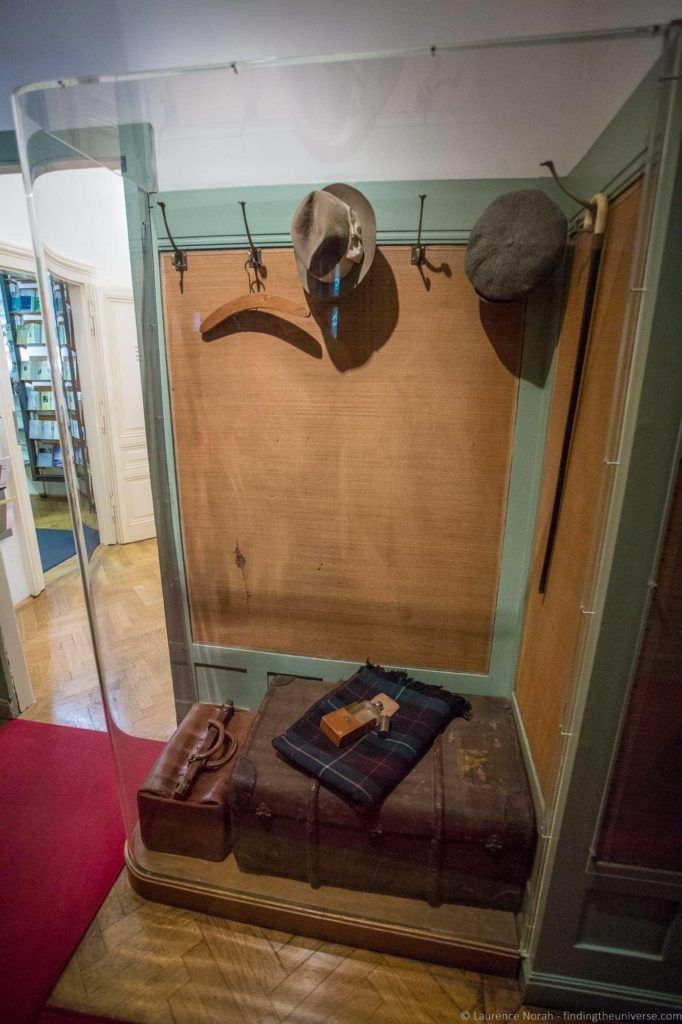
The museum also has information related to the history of psychoanalysis and its influence on art and society. However, it does not contain much original furniture, as most of this was taken to London by Freud when he moved there, and is now in the Freud Museum in London.
There is a small fee to visit the museum, and do be aware that there can be a wait at busy times as it is not a large space and it is a popular spot to visit. You can see opening times and prices at the official website .
Included on the Vienna Pass and Go City Vienna Pass.
City River Cruise
We always enjoy taking a river cruise if it’s an option in a city, and Vienna of course has the Danube. A river cruise is a relaxing way to see a few sights whilst taking the load off your feet (and perhaps enjoying a refreshing beverage?), and there are a number of operators who run cruises in Vienna.
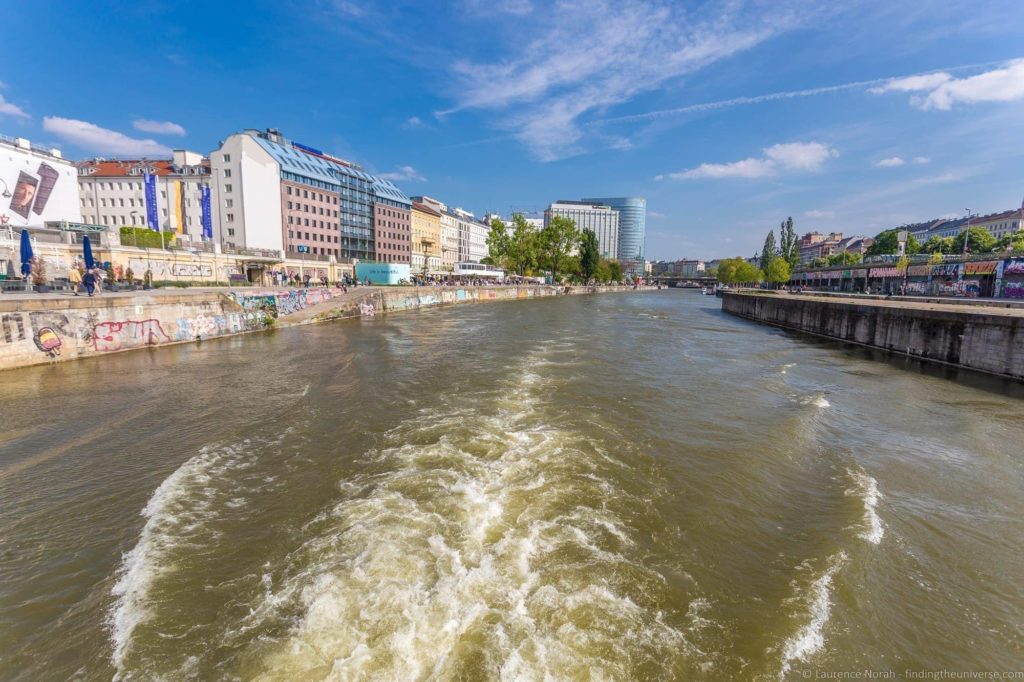
We took the tour with City Cruises Vienna on the MS Blue Danube, which was conveniently included on our Vienna Pass .
This was a fun and comfortable experience, and we saw parts of the city, including a lot of street art, that we hadn’t seen before. Cruises run throughout the year, but the schedule varies depending on time of year.
If you don’t opt for the Vienna Pass, you can book a cruise online in advance here .
Danube Tower
If you’re looking for a good view in Vienna, look no further than the Danube Tower . This tower, originally built to host the 1964 Viennese Horticultural show, is the tallest structure in Austria.
From the viewing platforms, which are 450ft above ground level, you get an excellent view of the entire city and much of the surrounding area.
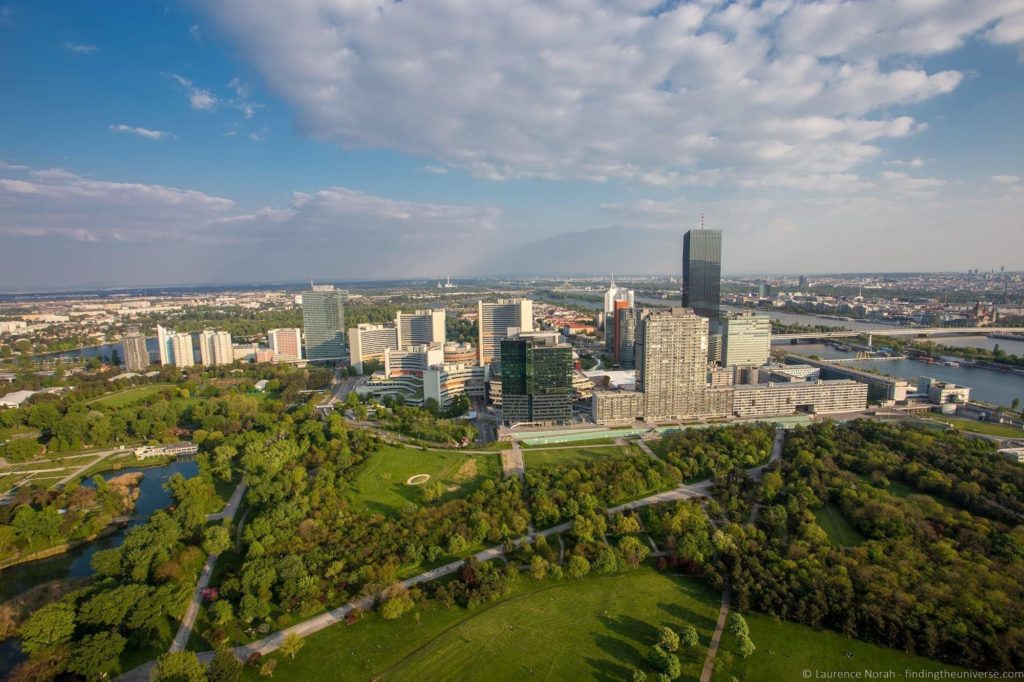
As well as the viewing area (accessed by high speed elevator) there are also two revolving restaurants in the tower, which would make for a good spot for your evening meal. This would also be a great place to watch the sunset at the end of your second day exploring Vienna!
The Danube Tower is open from 10am – midnight every day, and there’s a fee for visiting. You can find out more on the official site here .
It’s included on the Vienna Pass, or you can buy tickets online in advance here .
Day 3 in Vienna
Schönbrunn palace.
No visit to Vienna is complete without a visit to the spectacular Schönbrunn Palace , home of the Habsburg empire.
This is a large complex with a lot to see and do, so we suggest you allocate at least half a day, if not more, to your visit.
You’ll also want to arrive as early as you can, as the queues here can become long as the day progresses.
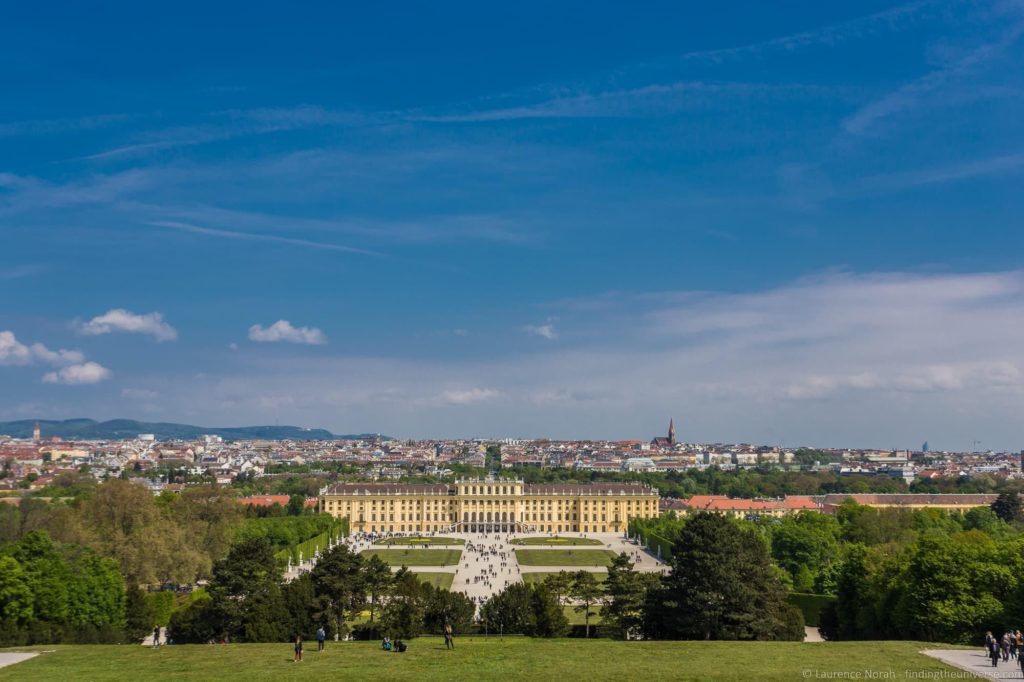
On arrival, you’ll want to join those queues and book your time slot for the palace tour, as well as get tickets for whichever of the other attractions you want to visit. We’d highly recommend access to the gardens, which are massive.
Once you have your tickets and tour time set up, you can plan what to do for the rest of your visit.
There is so much to do at Schönbrunn, including a big zoo (the oldest in the Western world!), the Imperial Carriage Museum, and the Orangery. A visit to the Gloriette, a huge structure which crowns a hill here, offers great views of the palace.
We’d also highly recommend taking the time to visit the Apple Strudel show, where you can learn all about traditional apple strudel making techniques – plus eat a slice yourself.
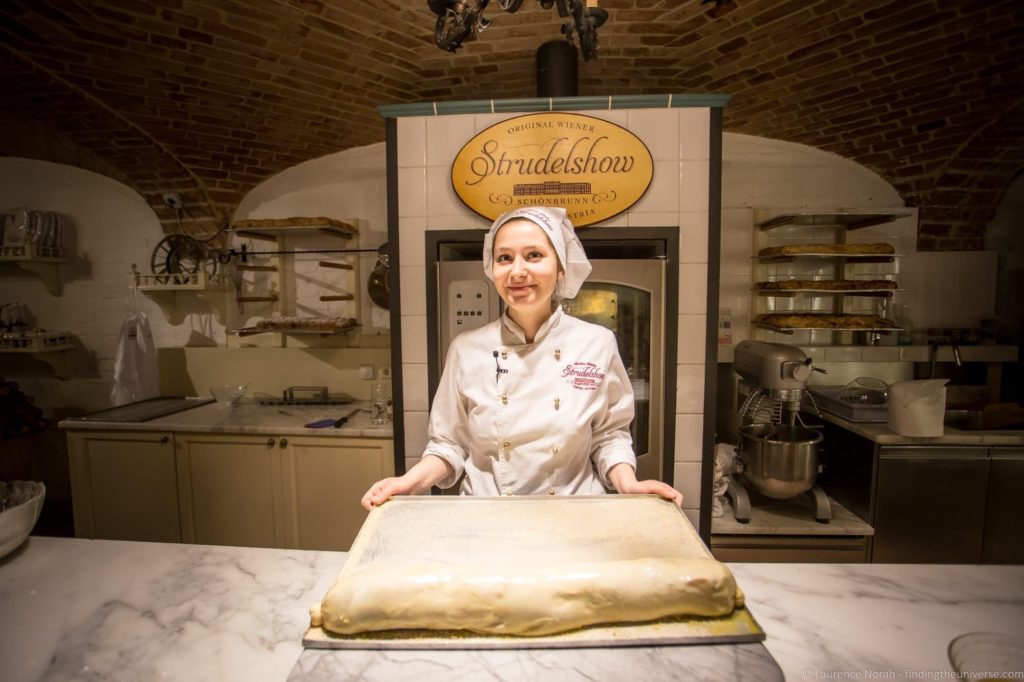
Schönbrunn Palace is open every day, including public holidays. Closing times vary depending on the time of year, but it opens every morning at 8am, when tickets and display rooms are opened. You can see opening times and prices here .
Schönbrunn Palace is also included on the Vienna Pass , and we highly recommend the pass if you are planning on visiting the palace, which is relatively expensive due to all the various attractions on site.
If you don’t want to buy a pass, we recommend buying a ticket in advance to skip the lines, which you can do from the official site here .
Another option is to take a guided walking tour of the palace, such as this well reviewed one . This will also skip the lines, as well as give you lots of information and historical context about the palace.
To be honest, if you have the time and inclination, you could easily spend all day at Schönbrunn Palace, and we wouldn’t blame you if you choose to do just that. On a warm sunny day it’s definitely one of the nicest places to be in the city.
If you’d rather do a bit more sightseeing though on your third day in Vienna, here are a couple more options for you to consider.
Belvedere Museum
If you have time, we very much recommend a visit to the UNESCO world heritage listed Belvedere Museum .
This actually consists of two buildings, the Upper and Lower Belvedere. which were constructed in the early 18th century as the summer residence for Prince Eugene, a military commander and statesman of the Holy Roman Empire.
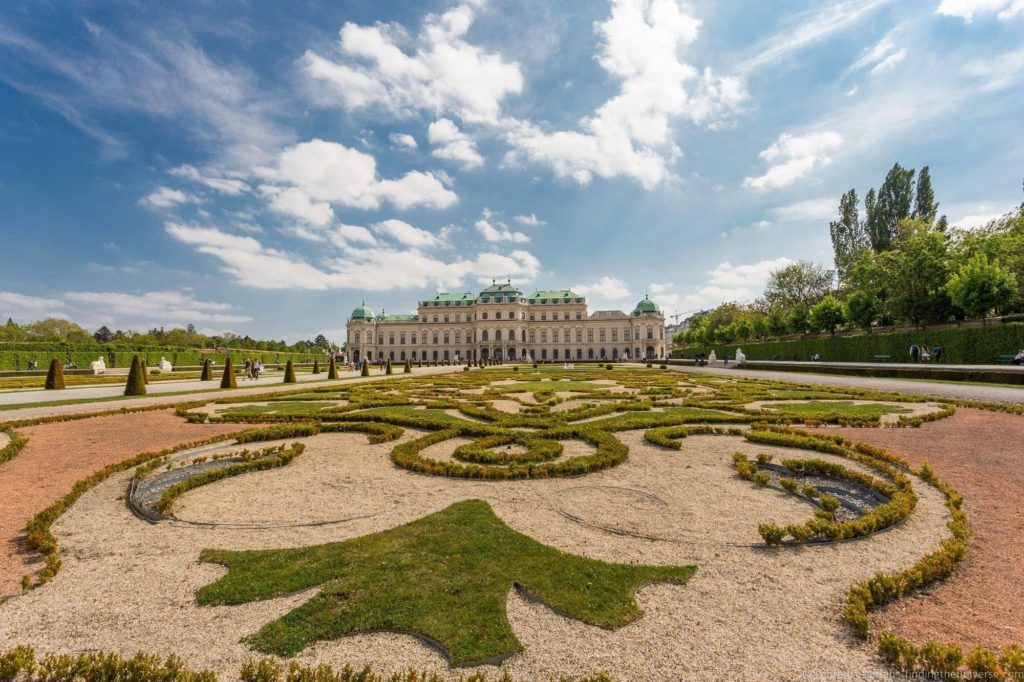
The two palaces are separated by sloped landscaped gardens which contain a number of water features and sculptures, and are considered some of the finest examples of Baroque architecture in Europe.
Within the museum are a number of artworks, including the largest collection of Klimt paintings in the world, as well as works from Monet, Van Gogh, Renoir and Cezanne. The Upper Belvedere also affords an excellent view of the city.
The Upper Belvedere is open daily from 9am – 6pm (9pm on Fridays), and the Lower Belvedere is open daily from 10am – 6pm (9pm on Fridays). Each palace has an individual entry fee, and you can see full details of fees and opening times here .
Both are also included on the Vienna Pass, or you can buy your tickets online in advance here .
Time Travel Vienna
If you are travelling in Vienna as a family, or you prefer to learn about history in a more interactive way, then you might enjoy a visit to Time Travel Vienna .
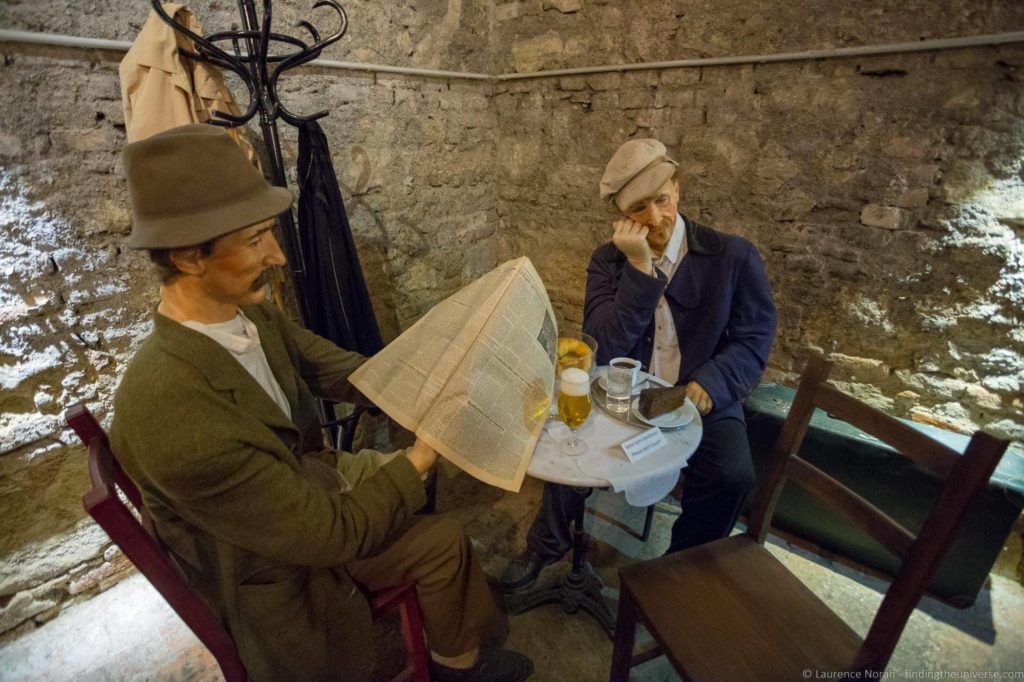
This is a fun tour through 2,000 years of Viennese history, told through the medium of costumed guides, animatronic shows and a “5D” cinema experience, as well as various special effects and music.
The tour lasts around an hour, and is available in a number of languages. Definitely a fun way to learn about Vienna!
Time Travel Vienna is open daily from 10am – 8pm, with the last tour starting at 7pm. There’s a fee for entry, and you can check times and prices here , and book tickets in advance here . It’s also included on the Go City Vienna Pass.
Prater Park and Ferris Wheel
Last on our list of what to do in Vienna for three days, before we move on to some practicalities for your visit, is a visit to Prater Park.
This is an old traditional amusement park, a couple of metro stops from the old town centre, which is home to Vienna’s iconic Giant Ferris Wheel .
Originally built in 1897, this was the world’s largest ferris wheel for decades, right up until 1985 in fact. It was seriously damaged in World War 2, and today’s version is the rebuilt model from after the war.
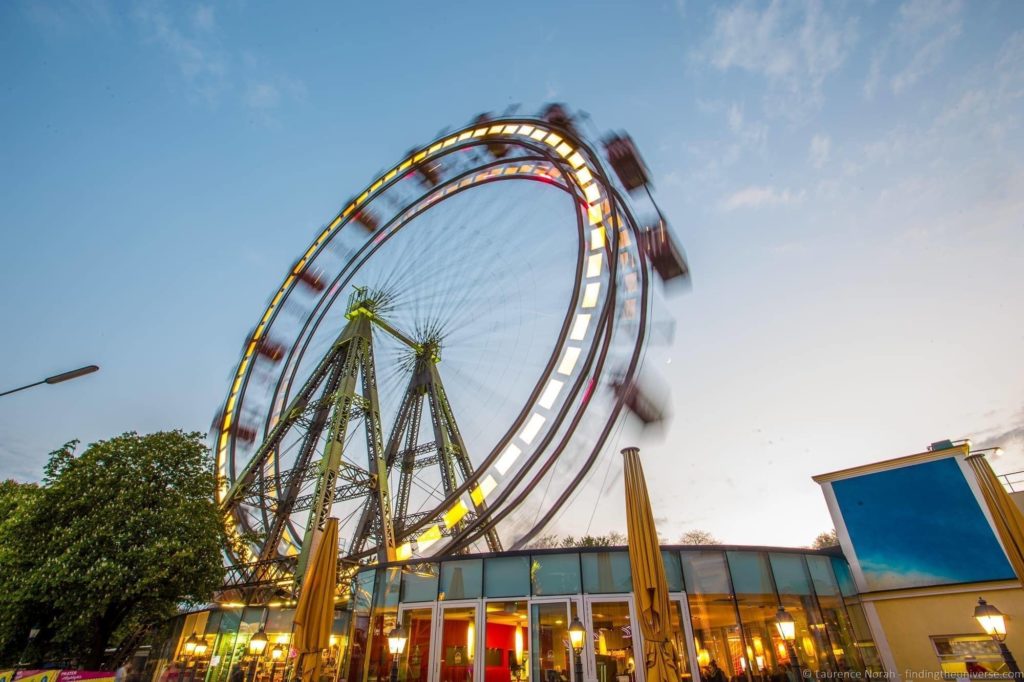
If you’re visiting with a partner and feeling romantic, you can even hire out your own cabin on the Giant Ferris Wheel and have a romantic meal . Group cabin reservations are also possible, perhaps if you are celebrating a special event.
Otherwise, you can just do what we did, and take the standard tour which lasts around twenty minutes, and offers lovely views of the city.
Prater Park itself is also a lot of fun, especially for families. There are rides, an arcade, a Madame Tussauds and a number of places where you can get food. One thing to be aware of though is that it attractions aren’t open that late all year round, so check opening times on the official website before you go to avoid disappointment.
For the wheel, there is a fee to ride it, and it’s also included on the Vienna Pass. You can also purchase tickets in advance here .
3 Day Vienna Itinerary Map
To help you with your planning, we’ve put together a map of all the attractions in our three day Vienna itinerary. You can see this below, and access the original on Google Maps here .
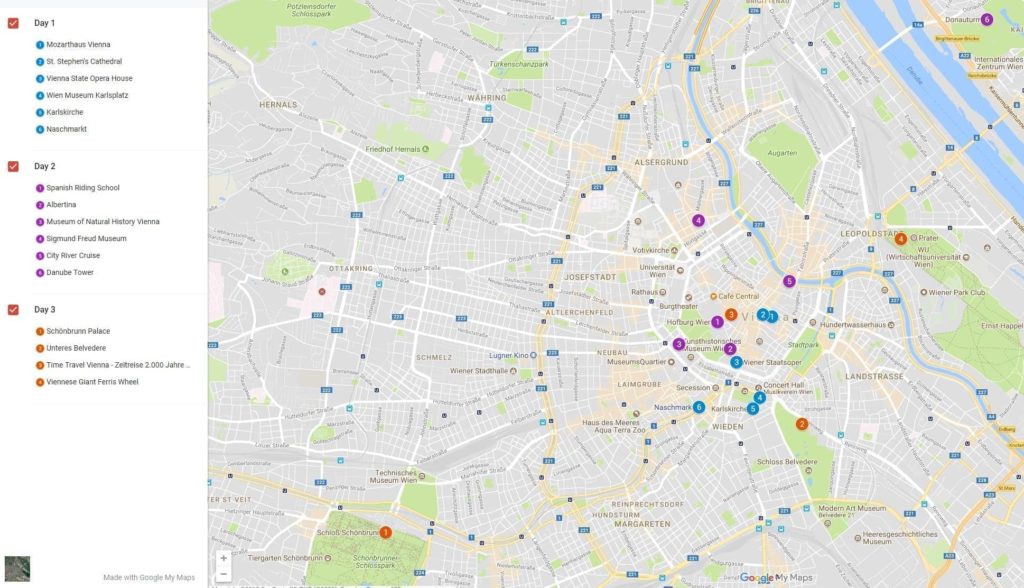
3 Day Vienna Itinerary Summary
- Day 1: Mozarthaus Vienna, St. Stephen’s Cathedral, Vienna State Opera House, Wien Museum, Karlskirche, Naschmarkt
- Day 2: Spanish Riding School, Albertina, Museum of Natural History, Sigmund Freud Museum, City River Cruise, Danube Tower
- Day 3: Schönbrunn Palace, Unteres Belvedere, Time Travel Vienna, Prater Park and Ferris Wheel
Where (and what) to Eat in Vienna
Vienna has a wide range of excellent restaurants and cafes to choose from, at a variety of price points. There are also plenty of bars of course. Local food specialities in Vienna include Wiener Schnitzel (a breaded veal cutlet), Tafelspitz (boiled beef) and of course, Apfelstrudel, or Apple Strudel.
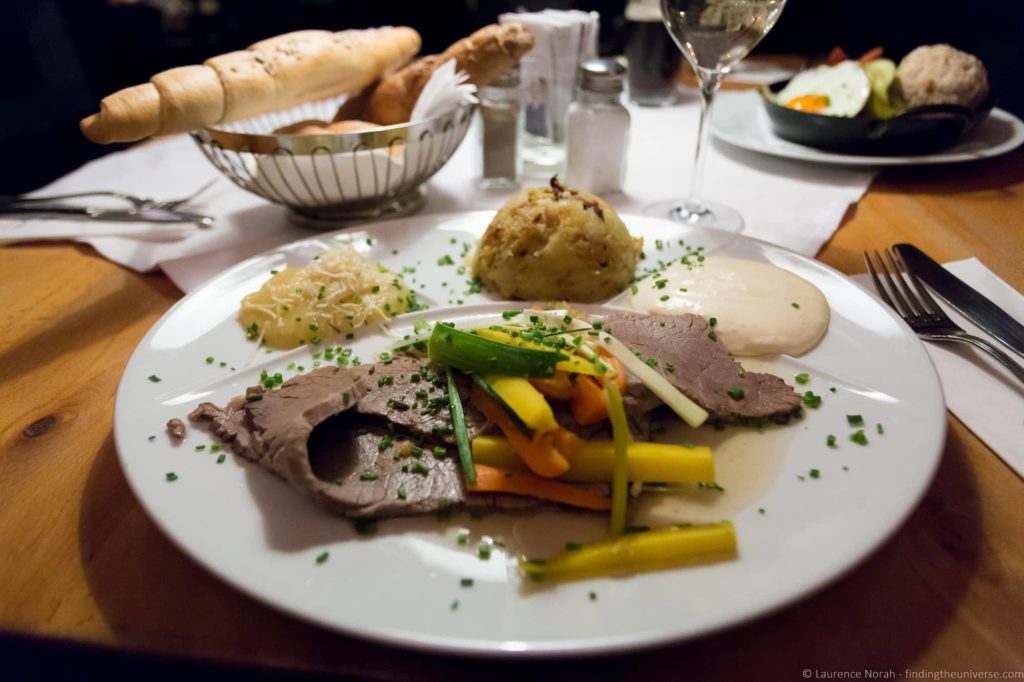
Many of the restaurants throughout Vienna will serve the classics, with prices ranging from 13 – 18 euros for a main course in our experience. We enjoyed particularly good food at Zwolf Apostkeller and Glacis Beisl , both of which serve high quality traditional Viennese food at reasonable prices.
Where to Stay in Vienna for 3 Days
As we often do when visiting a city like Vienna, we opted for an apartment . This was right in the city centre, and meant that we had room to work, cook meals and do our laundry.
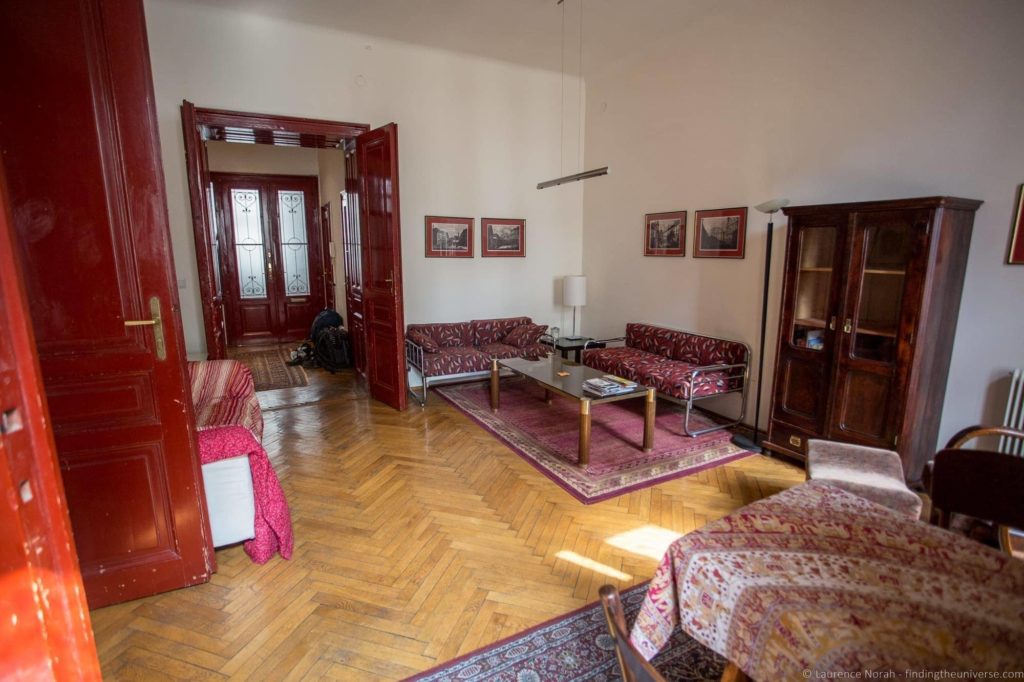
Of course, there are plenty more options in Vienna, with everything from hostels through to mid-range hotels and of course, luxury five star hotels available. Here are some recommended options to consider:
- wombat’s CITY Hostels Vienna – Found in Naschmarkt, near the large city market, and close to the museum quarter, this is a highly rated hostel that offers both dormitory and private rooms at a great price. For hostels, also consider CH-Hostel .
- CH-Budget Centre Rooms – at the budget end of the spectrum, this is a well located guesthouse offering free wifi, private bathrooms and TV’s, with a good value breakfast also available.
- Motel One Wien-Staatsoper – just 100 yards from the Vienna State opera, this three star property is fantastic value. Air conditioned rooms are all en-suite, and WiFi is available throughout.
- Hotel Am Parkring – A highly rated and great value four star property that offers stunning views over the city from its high floor location
- Hotel König von Ungarn – Vienna’s oldest hotel, this four star property is well reviewed and rooms come with free wifi and air conditioning
- Hotel Imperial – a great value yet impressive 5 star luxury hotel in the heart of the city, with a range of rooms that include luxury amenities, marble bathrooms, and at the higher end, a butler service
- Grand Hotel Wien – a highly rated and centrally located 5 star historic property which offers 5 restaurants, luxurious rooms, spa and business centre. A fantastic choice at the high end
We recommend you checkout the Vienna listings on Booking.com if you prefer a hotel stay, we find they usually come back with the widest choice and best deals, plus once you book a few times you get access to Genius discounts, which can save you even more.
For more tips and ideas on how to get the best deals on accommodation (and more!), check out our comprehensive travel resources page .
How to Save Money on your Vienna Trip
As a European capital. Vienna is not exactly a budget destination, although there are ways that you can save money on your trip.
Nearly all the attractions on this list carry an entry fee, which ranges from a few euros up to thirty euros per person. So the cost of sightseeing can very quickly add up.
Thankfully there’s a solution, which is the excellent Vienna Pass . We’re big fans of using city passes like this to save money, and think that the Vienna Pass is one of the best value city pass cards available.
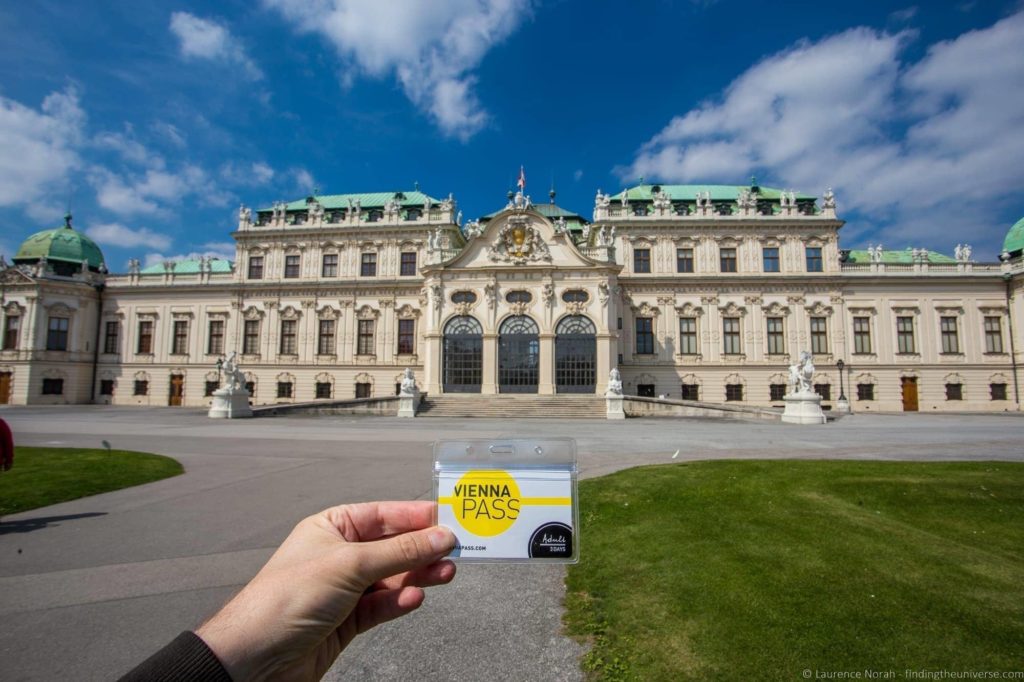
To give you an idea of the savings, if you visited all the attractions on the itinerary above, you’d be looking at over 250 euros in attraction entry fees per person.
With the Vienna Pass, all of the attractions above are included, with the exception of the Karlskirche, Wien Museum, Time Travel Vienna and the Vienna State Opera Tour. It also includes a great many other attractions not listed above, which means you can see even more should you want to.
And a three day Vienna Pass normally only costs 153 euros (as of April 2023). As you can see, this is a considerable saving.
Of course, you’ll want to check your own savings against the attractions you want to visit, and you can see many of the attractions covered by the Vienna Pass here . We definitely think you’ll find it saves you money, and the included Hop on Hop off bus is a real bonus as well for helping you get around the city.
Also check out the Go Vienna pass from Go City. They offer both a customisable pass for Vienna as well as an all-inclusive pass.
The inclusions are slightly different to the Vienna Pass, so depending on what you plan to see one of these options might work out better .
Finally, if you don’t think you’ll use the Vienna Pass enough to get value out of it, you might instead consider the Vienna City Card . This includes free transport around the city, as well as discounts at the major attractions and museums.
Where to see Live Music in Vienna?
A popular question that we are asked from visitors to Vienna is where to attend a classical music concert in the city.
There are many venues throughout the city which offer live music, from the opera house through to performances in churches, many of which will be classical music concerts.
Popular performances include:
- Vivaldi’s Four Seasons at Karlskirche
- Mozart and Strauss at Kursalon Vienna
- Classical Concerts at Schönbrunn Palace
- Classical Concerts in St. Anne’s Church
- Classic Ensemble Vienna in St. Peter’s Church
For more options, visit this page on the official website for Vienna, which has event listings for every type of musical event, and in particular, classic music lovers will want to check out the Classical Music listings .
You can also purchase tickets for live music in Vienna on this website .
How to Get Around Vienna
Vienna is a very walkable city for the most part, and the majority of this itinerary can be done on foot. There are a few locations that are a little further out of the old town centre, like Schönbrunn Palace, the Danube Tower and Prater Park, for which you might need to take public transport or a taxi.
Vienna has an excellent public transport system that includes a metro, buses, and trams. We invested in a three day travel card for our time in Vienna, which gave us free access to all the public transport options in the city.
To be honest though, we didn’t use it enough to really justify the cost – we found ourselves walking between most of the sights, or taking Vienna’s hop on hop off bus.
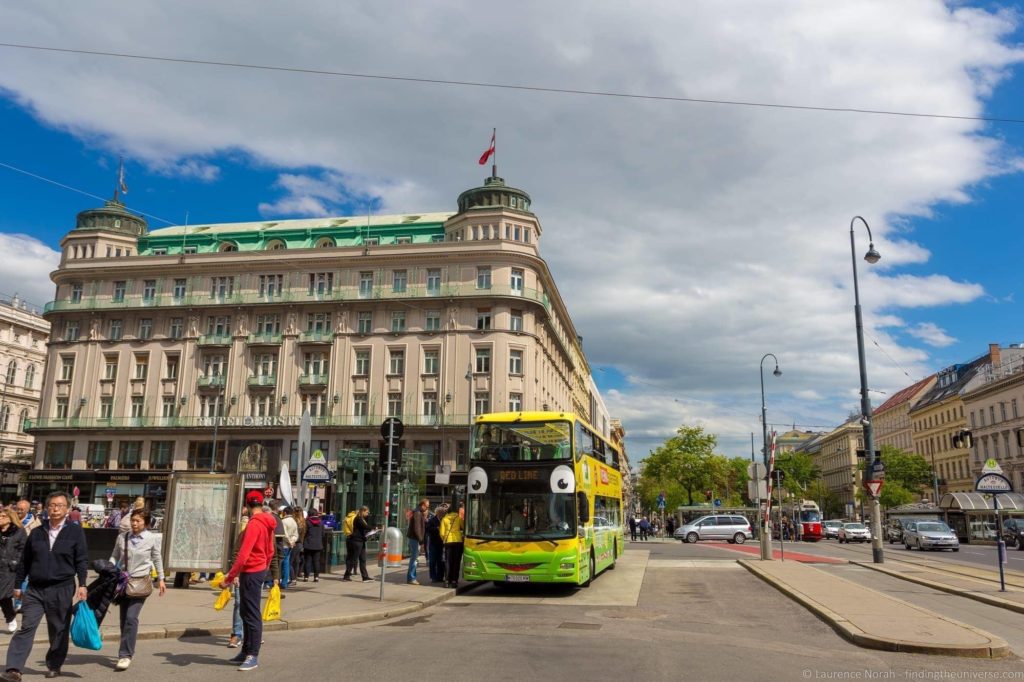
As discussed above, if you pick up a Vienna Pass , this includes a Hop on Hop off bus pass good for the duration of the pass, which is excellent value.
There are multiple routes around the city, including to all the major sights in this itinerary (including Schönbrunn Palace), and it’s a fun way to do a bit of sight-seeing whilst resting your legs as well.
If you don’t pick up a Vienna Pass or a travel card, instead consider the Vienna City Card . This includes free transport around the city, as well as discounts at the major attractions and museums.
Further Reading for your 3 Days in Vienna
We hope this post gives you nearly all the information you need to plan out your three days in Vienna.
However, we have some additional resources that we think you might find useful for planning your trip. Do check back from time to time and bookmark this page, as we’re always updating and adding new content to our sites to help you make the most of your travels!
- Our guide to spending 2 days in Vienna , if you are visiting for a shorter trip.
- We also have a number of other detailed itineraries , which cover cities, countries and road trips around the world.
- Visiting Vienna in summer? Take a look at our tips for visiting Europe in summer to make the most of your time
- Looking for a guidebook? We used the DK Eyewitness Travel Guide to Vienna , and found it very informative
- Planning to stay in an apartment? Check out our guide to over 20 websites that allow you to book apartments online to make sure you get the best deal
And that sums up our post on how to spend three days in Vienna! As always, we hope you found it useful, and that you have a wonderful trip! If you’ve got any questions or thoughts on how to spend three days in Vienna, let us know about them in the comments below!
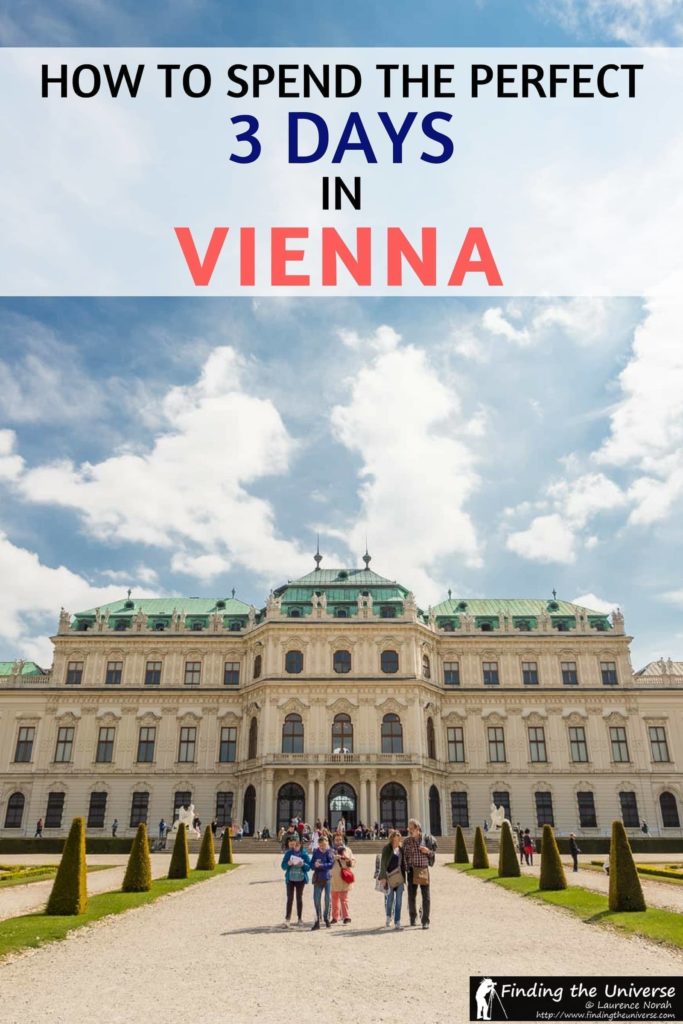
Enjoyed this post? Why not share it!
There are 46 comments on this post
Please scroll to the end to leave a comment
Marianna says
13th September 2023 at 9:42 pm
Hello there ! currently planning an (almost) 3-day city break to Vienna with my partner and stumbled upon your post.. it’s really very helpful, especially when (like us) , you don’t have enough spare time to plan trips ahead! thank you 😃 About Vienna pass, does it provide skip-the-line/fast-track access to the sights it includes? And would you need to book a slot separately to visit each sight, or you can just drop by, show your Vienna pass and get into the sight?
Laurence Norah says
14th September 2023 at 6:11 pm
Hi Marianna!
Thanks very much 🙂 So the Vienna Pass currently (September 2023) includes skip the line access to the following attractions:
Belvedere 21 – Museum of Contemporary Art Albertina Belvedere (Upper and Lower Belvedere) Desert Experience House Gloriette, Maze, Privy Garten, Orangery Garden and Children’s Museum at Schönbrunn Palace Gardens Hofmobiliendepot · Imperial Furniture Collection Imperial Palaces Schloss Hof and Schloss Niederweiden Imperial Treasury Vienna Kunsthistorisches Museum Vienna (Museum of Art History) Leopold Museum mumok (Museum of Modern Art Ludwig Foundation) Museum of Natural History Museum of Technology Schönbrunn Zoo Vienna Giant Ferris Wheel State Hall of the Austrian National Library
As far as I know you don’t need to pre-book with the Vienna Pass, you should just be able to turn up 🙂
Have a great time in Vienna and let me know if you have any more questions! Also, if you have any feedback about this guide after you have visited feel free to let me know 🙂
1st September 2023 at 8:20 am
I will be in Vienna on a business trip for 3 days. The hotel is in the center (Stephansplatz), I will use the metro twice a day. What card will be profitable to buy or single tickets. There will be no time to visit museums.
3rd September 2023 at 7:54 pm
Honestly, only using the metro twice a day I think buying single tickets will make more sense. A single ticket is currently €2.4, so two rides will be €4.8. A 24 hour metro card is €8. So unless you will be riding more, single tickets will make more sense.
Have a great time in Vienna!
Rachna says
20th July 2023 at 5:33 am
Love the itinerary. We are going from August 7- Aug 10. Do you think we can cover eveything in this. We also have a concert that we pan to see in one of the days. if u had to suggest 2 museums which one would you suggest n what will u leave .
24th July 2023 at 9:00 am
Thanks! Yes, you should be able to see everything on the itinerary. The Wien Museum is still mostly closed other than some temporary exhibits. In terms of which museums to visit, it really depends on what you are interested in seeing. If you prefer natural history (dinosaurs etc), then obviously the Natural History Museum would be a pick. But there are museums covering art, psychology, etc. So it really depends on what you want to see and what interests you 🙂
Enjoy Vienna!
Lea Tufford says
4th July 2023 at 9:55 pm
Hi Laurence and Jessica,
Thank you for this wonderful information. My family and I are leaving for Vienna this Friday. We are visiting a few other places in Europe. Do you have any blogs on other cities?
5th July 2023 at 10:10 am
We certainly do! It will depend on where you are going but we have content on a number of European cities and destinations, including Rome, London, Paris and Barcelona. You can see all the areas where we have content on our destinations pages:
https://www.findingtheuniverse.com/category/destinations/europe/ https://independenttravelcats.com/category/travel-destinations/
Let me know if you have any questions, and have a great trip!
5th July 2023 at 1:40 pm
Hi Laurence,
Thank you for this. I see you have information on Munich and Berlin, which we are also visiting so I will check out those cities. Do you have any information on Salzburg and Prague? Those are the other two cities on our trip.
Kind regards, Lea
6th July 2023 at 11:44 am
I don’t unfortunately, I have visited both those cities but it was a very long time ago so my information is not up to date. I do hope you have a lovely trip though!
6th July 2023 at 2:09 pm
Thank you Laurence,
Belle Wong says
19th May 2023 at 9:35 am
Thanks for the Info. For the Spanish Riding schools, to visit with the Vienna Pass, do you need to pre-book ? Can you go any time or need to go at specific timing ?
20th May 2023 at 2:24 pm
So with the Vienna Pass you can only visit the training which takes place in the morning. It should be between 10am and 11am, with the entry time is 15 minutes before that. You don’t need to pre-book as far as I know. Hopefully this answers your question!
Have a great time in Vienna and let me know if you have any more questions 🙂
30th August 2022 at 8:02 am
Thanks for this wonderful info
30th August 2022 at 11:16 am
My pleasure Anu, have a great time in Vienna!
John Wong says
11th July 2022 at 10:35 pm
Hello, Can you explain how to book the MS Blue Danube 75 min Boat Cruise ahead of time, with the Vienna Pass? E.g. Do I buy the Vienna Pass now, then the pass will give me some coupon code, and then I can use the code to book the Boat Cruise?
12th July 2022 at 11:23 am
As far as I know the Vienna Pass doesn’t currently allow for advance bookings in this way. Other city passes do allow this for sites with reservations, such as the Paris Pass for reservations to places like the Louvre, but this isn’t currently supported. What we did was we just went to the ticket office with our pass and booked our tour in person.
30th October 2021 at 7:55 pm
Thanks for all the good suggestions, but did I miss something? What about the Kunsthistorisches Museum?
31st October 2021 at 10:35 am
Thanks very much for your comment! So I also like the Kunsthistoriche Museum, which I included in my 2 day Vienna itinerary . I didn’t want to overfill this itinerary, but you are right in that it does warrant an inclusion. So I’ve made a note about it in the Natural History museum section.
26th February 2020 at 8:33 am
Thank you for this! One of the best blog posts about a city I’ve honesty ever read. You’ve given me plenty of ideas for our upcoming trip!!
26th February 2020 at 10:42 am
Thanks very much Anna – that’s appreciated! Have a great time in Vienna, and do let me know if you have any questions!
stuart rosen says
30th October 2019 at 9:09 am
Very informative
Looking to go in May is this a good time ? Also Saltzburg day trip can it be done in one day have limited time?
30th October 2019 at 11:00 am
Thanks very much. May would be a great time, the weather is likely to be fairly warm but it won’t be as crowded as the summer months. It’s one of our favourite months to travel in Europe.
It would be possible to visit Salzburg from Vienna as a day trip, although be aware it’s around a 2.5 hour train ride each way, so you will want to get an early morning train to make the most of your time in Salzburg.
Have a great trip!
David Lynn says
16th September 2019 at 7:17 am
Just read your blog and took some good notes. I will be in Vienna for just three days; 5 Oct – 7 Oct. 2019. Your blog was very helpful. Thank you very much! David
16th September 2019 at 8:23 am
Our pleasure David – have a great trip to Vienna 🙂
Mohini says
7th June 2019 at 5:14 am
Thank you for sharing such valuable information Lawrence Norah. We are travelling to Wien today and will be there for 4 days. Your blog has been of great help!!
7th June 2019 at 8:35 pm
My pleasure, have a great trip Mohini!
Jennifer Kates Ramlo says
27th May 2019 at 4:55 pm
Just read your blog regarding things to visit in Vienna. Thank you for the wealth of information! We will be there in a few weeks and I now have a better idea as to how to spend my time. I’ll be sure to look for other posts regarding some of the other cities we will be visiting. Thanks again.
27th May 2019 at 6:40 pm
Our pleasure Jennifer. Do let us know if you have any questions, and have a great trip!
26th May 2019 at 9:26 am
Very happy to stumble across your blog. Heading to Vienna on Jun 8th for 3 full days and will definitely use your travel tips to plan our itinerary. Thank you
26th May 2019 at 10:52 am
Our pleasure Helen! Have a great trip 😀
3rd March 2019 at 4:13 am
We will be going to Vienna end of March, thank for the helpful tip. If you don’t mind, can you tell us which apt you stayed at as we are looking for one with Airbnb Much appreciated
3rd March 2019 at 9:27 am
I don’t mind at all. To be honest though, we rarely share our AirBnB apartments as we find that many hosts don’t stay on the platform for more than a few years, and so our recommendations can go out of date very quickly. Our apartment was this one , however you’ll notice they are not currently taking reservations until July 🙁
1st March 2019 at 5:46 pm
Will be following this itinerary on our upcoming trip this weekend!
Thank you for sharing this…. looking forward to all that Vienna has to offer
2nd March 2019 at 8:00 am
Have a fantastic time Eddy, and do pop back to let us know how it went!
Vandana says
20th September 2018 at 6:14 am
We will be visiting Vienna on 4th October for 3 days this article is a big help .Laurence and Norah.We will follow it as it is .Thanks for sharing.
21st September 2018 at 2:21 pm
Thanks Vandana! Have a great trip, and let us know how it goes!
franklin says
31st August 2018 at 3:16 am
just found out your blog about Vienna in 3 Days. Enjoyed reading it very much. will be visiting Vienna in Mid-March 2019.
31st August 2018 at 10:27 am
Have a great trip Franklin 🙂
Kristall Spaces says
20th August 2018 at 3:12 pm
Fantastic article, thanks for sharing this 🙂
I have been to Vienna loads of times and loved every single visit.
The city is rich with culture and incredible architecture.
Other notable places in Austria I would visit are Salzburg, Berwang and Otztal.
George Tod says
27th May 2018 at 10:15 pm
Hi. We went to Wien last September and now plan a trip to Salzburg this September. Do you have anything recommendations on Salzburg accomodation, where to stay/ things to do and trips tp Halstadd
28th May 2018 at 2:08 pm
Hi George – unfortunately not, we’ve not travelling in Salzburg and we only share information from personal experiences. Have a good trip though!
Valdenio says
21st May 2018 at 5:28 am
Going to. Vienna for our 25th anniversary, Thanks for your itinerary and tips
21st May 2018 at 1:31 pm
My pleasure – happy anniversary and have a wonderful trip!
HiCinko says
17th April 2018 at 1:08 pm
Vienna seems to be quite an iconic place to visit.
18th April 2018 at 6:20 am
Leave a Reply Cancel reply
Your email address will not be published. Required fields are marked *
Let me know when there's a reply to my comment (just replies to your comment, no other e-mails, we promise!)
Subscribe to our monthly Newsletter where we share our latest travel news and tips. This also makes you eligible to enter our monthly giveaways!
We only ask for your e-mail so we can verify you are human and if requested notify you of a reply. To do this, we store your data as outlined in our privacy policy . Your e-mail will not be published or used for any other reason other than those outlined above.

25 Easy Vienna Tips To Make Your First Trip Flawless
Vienna is an welcoming, elegant, clean and beautiful city for travelers. Resplendent with gorgeous architecture and monuments at every turn, it is easy to imagine this artistic and intellectual capital in the times of Mozart and Freud. Navigating Vienna is fairly easy but if you want to plan a seamless trip, follow these Vienna tips for travelers.
Vienna (or Wein, pronounced veen, in German), still ranks as one of the best cities we have visited in Europe. Since this Central European capital is not as well covered as some of its Western counterparts, I wanted to provide a few of my top Vienna tips for tourists. Read on for practical tips on when to go , getting around , eating out , and more >>>>
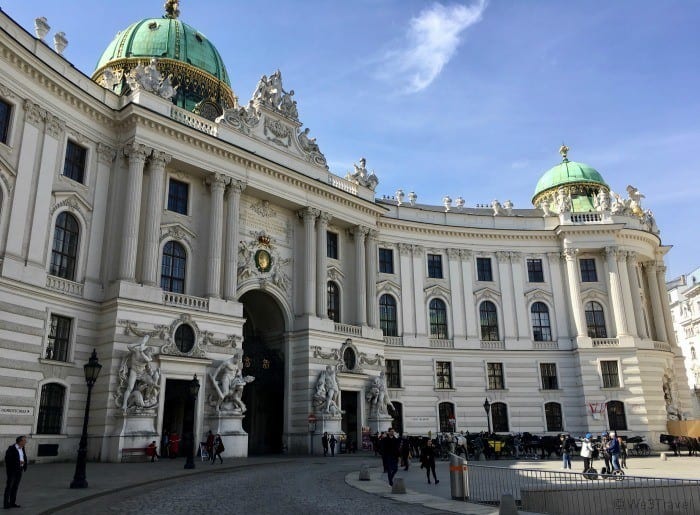
VIenna Tips: When to Visit
Vienna, Austria is such a lovely city that it can be a year-round destination. Many choose to visit the Austrian capital when the Christmas Markets are up and running and everything looks magical. Summer is the most popular time to visit Vienna when weather is warm and kids are out of school. If you want to avoid the crowds but still have pleasant weather, the best time to visit is in the shoulder season of April to May or September to October.
If you are visiting Vienna for the first time, use these following Vienna travel tips to pick when to visit:
- Expect rain if you visit in November or March and possibly snow during the winter months. It was pretty windy and rainy a couple of days that we were there in March, but we also had some lovely warm days as well.
- Vienna ball season begins in mid-November and peaks in January and February.
- Check a special events calendar on the Vienna tourism official website in advance so you know if there are any big festivals or events going on that may make the city more crowded than usual (such as annual events like Carnival and Opera Ball in February, Classical Music concert festivals in March, the OsterKlang Festival around Easter, etc.) You can also check for public holidays in Austria when many businesses would be closed.
- Austrian school holidays begin in July so if you are going in summer, June would be the month to go.
- Christmas Market season runs from mid-November to Christmas Day.
Tips for Getting Around Vienna
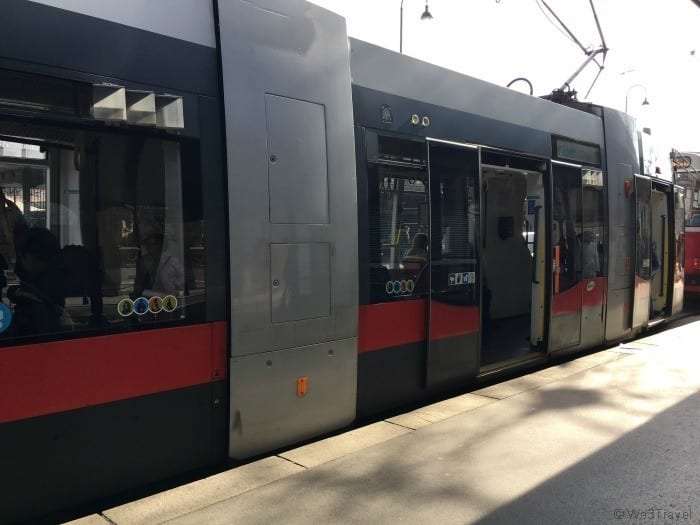
Plenty of visitors arrive in the City of Music on Danube River cruises or other tour groups, but it is easy to visit as an independent traveller too.
If you are arriving at the Vienna International Airport, the easiest way to get to the city centre is using the City Airport Train . The train takes 16 minutes to get from the Vienna airport to central Vienna and leaves the airport every 30 minutes. You can buy a single ticket or return tickets online, at the counter, or from the ticket machines.
However, with a family of four or more, it is going to be cheaper and easier to take an Uber, which should cost about 45 euros with standard pricing, and take about 30 minutes.
The main train station is Vienna Hauptbahnhof, offering local train service to main train stations in other European cities. I’d recommend giving yourself at least 45 minutes to one hour from the city center before your train departure time. The train station is extremely easy to find your way around and tracks/trains are clearly marked.
Getting around Vienna is easy. If you stay within the inner ring (Innenstadt or Innere Stadt) of the city center in the 1st District, you can easily walk just about everywhere. However, your feet can get tired so there are other options:
- Underground – the U-Bahn (underground) is easy to use to get to main attractions. You can purchase tickets in the station at machines or ticket windows. Simply VALIDATE your ticket at the entrances before boarding the train. If you have a multi-trip/day pass, you only need to validate it once when you first use it. As an added bonus, children under 15 are free and don’t need a ticket! Just look for your line, which are labeled by color and number, and the end point of the direction you are traveling. It is easy to tell which stations are next and the stations are labeled on the platform so you know when you have arrived. There are also LED signs to let you know when the next train is arriving.
- Trams – these operate the same as the underground, but they are above ground and offer a better view, although they are a bit slower. Both are clean and easy to use. There is also a ring tram that you can use as a cheap tour of the inner city. When you get on the tram for the first time, just validate your ticket in the little ticket validator. It is a little harder to track your route as the stations aren’t as clearly marked but there should be an LED display inside the tram to let you know what station you are approaching. There are both modern and old-fashioned trams. Children under 15 are also free on trams.
- Uber – Uber drivers are plentiful and it is cheap! We found it easier than taking a taxi because you didn’t need to worry about how much cash you had or if they took credit cards. You also can call them from anywhere, versus trying to hail a cab or find one waiting outside of major attractions/hotels. Check out these tips for using Uber or Lyft with kids.
Vienna Travel Tips: Eating in Vienna
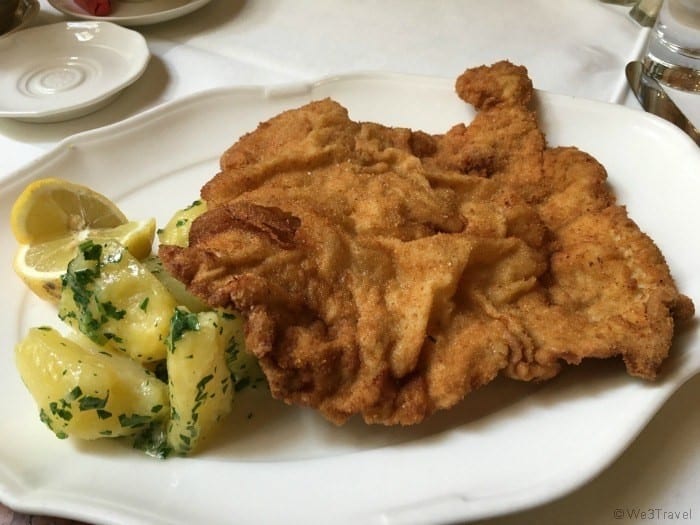
Eating out is one of the joys of a trip to Vienna. The wiener schnitzel is unsurpassed and you may also want to try Vienna’s favorite sacher torte (personally I preferred all the other pastries around the coffee houses in Vienna .)
- Reservations are highly recommended!
- Many restaurants will accept reservations online through their website or booking sites like The Fork, if not, contact your hotel concierge before arrival and they can help you book reservations.
- Tipping is expected, although it is more modest than what you would do in the United States. At a café, round up and leave a few coins on the table. At other restaurants, they may make a point of telling you that service is not included and you can add a gratuity (I’d recommend about 10%) when they bring the credit card payment terminal to the table.
- Some restaurants do not accept credit cards, so be prepared with some Euro on hand.
- Coffee culture reigns supreme in Vienna but the most famous ones are going to be crowded. To avoid the wait, get there before 12pm or see if you can make a reservation.
- You are unlikely to find a children’s menu and many portions are large and/or hearty so you may want to share. When you have had your fill of traditional food such as Wiener schnitzel, boiled beef and goulash, there are plenty of great restaurants of all cuisines available.
- Check out my recommendations on where and what to eat in Vienna and our favorite coffee houses.
- Be sure to try some of the local beer and wine. Austrian wines are very affordable and delicious. I was surprised to find that restaurants didn’t mark up alcohol nearly as much as what you find in the States.
What you Need to Know Before Visiting Vienna
Note: This post may contain affiliate links. If you click a link and make a purchase, I may receive a small commission. All opinions are my own.
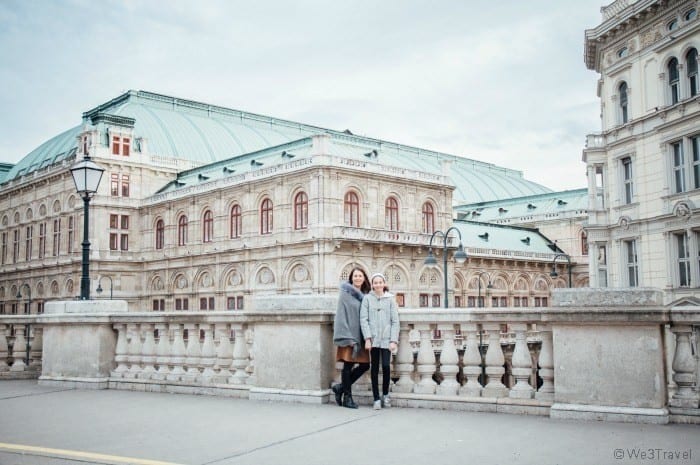
- Plan to spend at least 2-3 days in Vienna if you are visiting other cities in Central Europe, such as Prague or Budapest . If Vienna is your primary destination, five days in Vienna is not too much. It is the perfect amount of time to explore Old Town, learn the history of Vienna, take a walking tour of Vienna, and visit all the tourist attractions. You would even have time for a day trip or more time to soak up the arts and culture.
- Vienna is an elegant city and its Viennese people dress appropriately. Shorts are certainly frowned upon. For nicer dinners, plan to dress up and certainly if you are going to the opera house. During the day, you can get away with nicer jeans, pants, skirts or appropriately accompanied leggings.
- You will need to book tickets to performances of the opera, Vienna Boys Choir, and Spanish Riding School in advance.
- Austria use 230 V electrical outlets, so be sure to bring a standard EU adapter/converter like this one that has four USB ports.
- Free WiFi is plentiful in cafes, restaurants and museums. Occasionally, there will be time limits but it is usually more than enough to jump online and check email, request an Uber, start Google Maps, etc. so you can get away with not using an International Data plan.
- English is pretty widely spoken, even if not proficiently it is at least enough to get by in most restaurants. It never hurts to learn a bit of German (the official language in Austria) before you go though.
- Almost all shops are closed on Sundays. So if you are checking in to an Airbnb on a Saturday, be sure to stock up before the grocery stores close, and if you are arriving on a Sunday, be forewarned that you won’t be able to get basic supplies very easily.
Vienna Money Saving Tips
The Vienna Pass offers options for 1, 2, 3, or 6 days of sightseeing with free admission to many attractions and unlimited hop on and hop off bus privileges.
The Vienna Pass gives you free entry to 70 of the city’s top attractions, sights, and museums like the Albertina, apple strudel show at the Schonbrunn Palace, House of Music, Jewish Museum, Sisi Museum Hofburg, Giant Ferris Wheel, Upper Belvedere (where you can see Gustav Klimt’s The Kiss) and other museums. You will also get fast track entry and many attractions, as well as a Hop On/Hop Off Bus tour and even a boat cruise.
There are a few free attractions that the whole family will enjoy, like a walk through the Schönbrunn Palace gardens (but you won’t be able to enter the Gloriette without a ticket) or the Prater (but you’ll need tickets for the rides in the amusement park.) You can also enjoy walking around the Hofburg and Museum Quarter, and admission is not required to walk into St. Stephen’s Cathedral.
Where to Stay in Vienna
I would recommend staying in the First District, but avoiding the more touristy area by the Opera House. We loved our stay at the Palais Hansen Kempinski . It had a lovely location just within the ring road but in a quiet area, with easy access to the tram or underground. This elegant luxury hotel has spacious rooms, excellent service, and the best breakfast buffet.
There are also many affordable Airbnbs and vrbo apartment rentals in the city center.
Find other places to stay in Vienna:
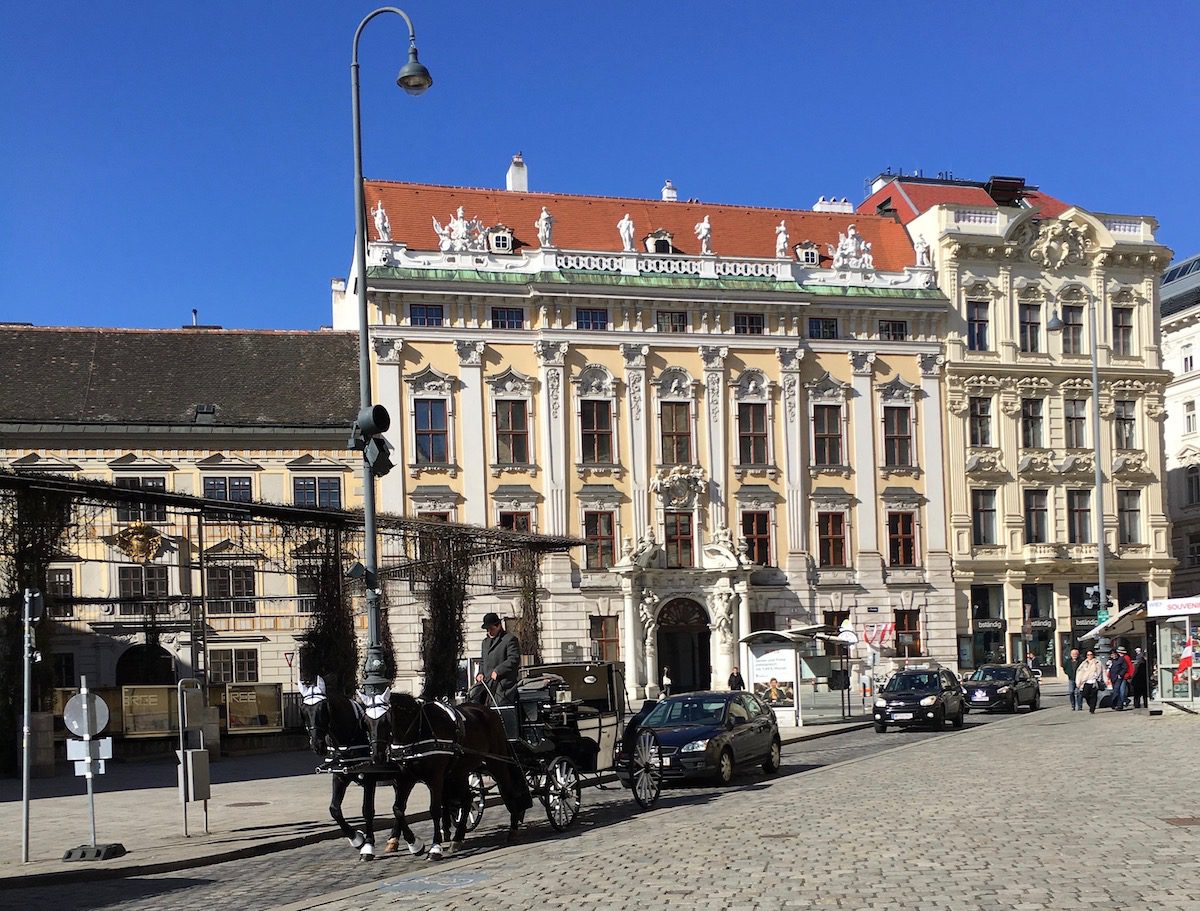
PIN THIS FOR LATER
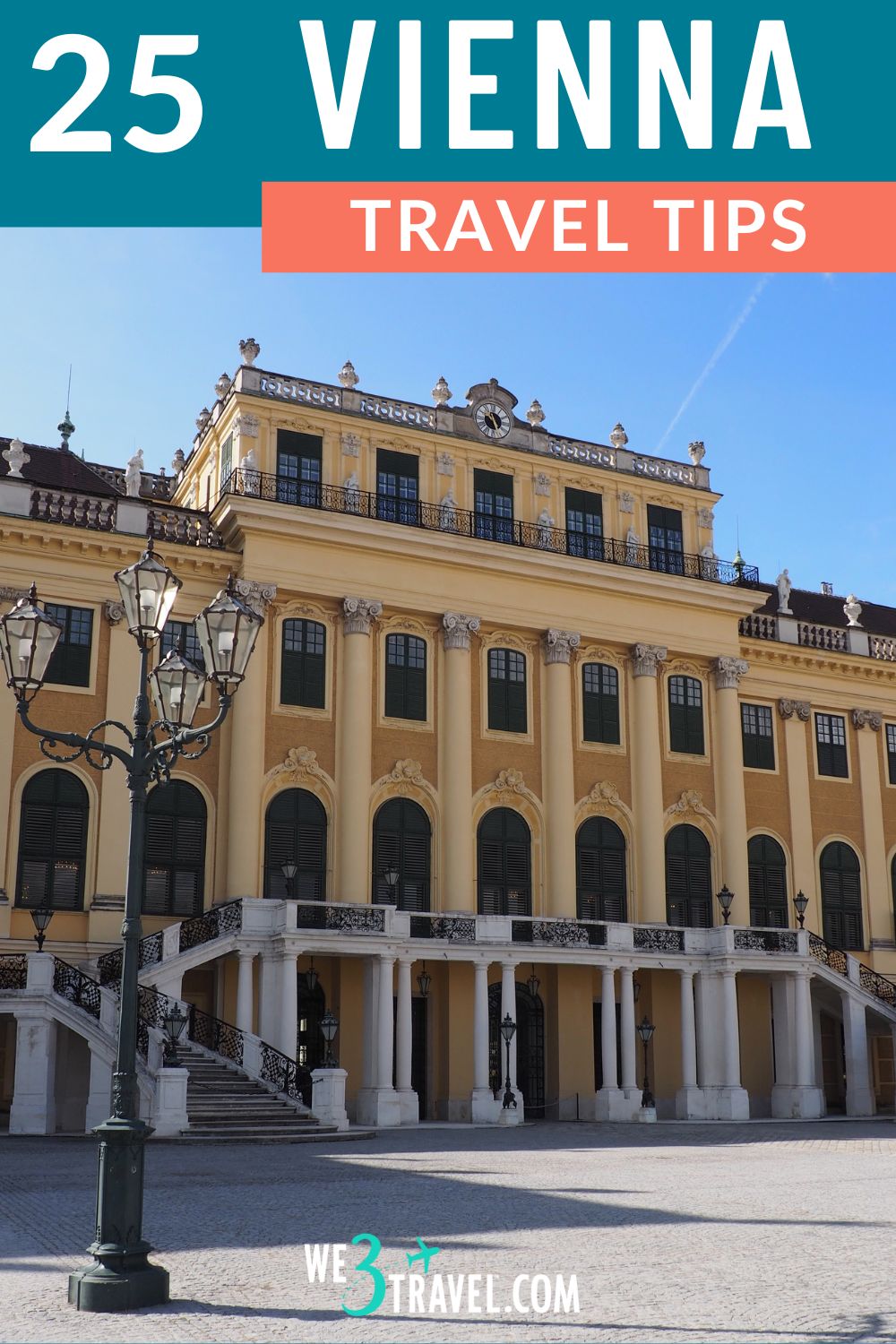
Tamara Gruber is the Founder and Publisher of We3Travel. A former marketing executive and travel advisor, Tamara is an award-winning travel writer and recognized expert in family travel. Tamara is a member of SATW and the Adventure Travel Trade Association, and serves on the Board of the Family Travel Association. She is also the publisher of YourTimetoFly.com and the co-host of the Vacation Mavens travel podcast.
Find this useful? Share it!
Publish Date: December 14, 2022
Comments are closed.

SIGN UP FOR OUR NEWSLETTER & RECEIVE A FAMILY VACATION PLANNING KIT!
We3Travel.com will use the information you provide on this form to send you newsletters. You can unsubscribe at any time by clicking the link in the footer of any email you receive from us, or by contacting [email protected] . By clicking below, you agree that we may process your information in accordance with these terms.

Start typing and press enter to search
Vienna Travel Guide

Courtesy of Christoph Hetzmannseder | Getty Images

Why Go To Vienna
History is at the heart of Vienna both literally and figuratively. The narrow streets of the Innere Stadt (Inner City) snake through antiquated buildings, providing an atmosphere so authentic that you almost expect a Vienna native like composer Wolfgang Amadeus Mozart or psychologist Sigmund Freud to round a cobblestone corner and greet you with " g uten tag ." Extravagant baroque palaces from the Habsburg Monarchy loom over the city, just as Mozart's classical arias pour from contemporary cafes. If it's culture you seek, you'll find it here.
But there's more to this city than just music and monarchs. Vienna is also a great place to spend some cash, with independent bookstores competing for business alongside haute couture. There are also a surprising number of attractions for young ones, including an amusement park and a top-notch zoo . And although many Viennese retire early in the night, that doesn't mean you have to; sneak out to one of the bars in the city's Bermuda Triangle neighborhood, or drop by one of the wine taverns skirting the Vienna Woods.
Find Flight and Hotel Deals
Navigate forward to interact with the calendar and select a date. Press the question mark key to get the keyboard shortcuts for changing dates.
Navigate backward to interact with the calendar and select a date. Press the question mark key to get the keyboard shortcuts for changing dates.
- # 8 in Best Cheap European Honeymoon Destinations
- # 8 in Best Winter Vacations in Europe
- # 10 in Best Family Vacations in Europe
See All 7 Rankings
Best of Vienna
Best hotels in vienna.
- # 1 in Hotel Sacher Wien
- # 2 in Park Hyatt Vienna
- # 3 in The Ritz-Carlton, Vienna

Best Things to Do in Vienna
- # 1 in Hofburg Palace
- # 2 in Schönbrunn Palace
- # 3 in MuseumsQuartier Wien

Popular Tours

Private Day Tour of Hallstatt and Salzburg from Vienna
(139 reviews)
from $ 786.07

Vienna's Highlights: Food, Coffee and Market Walking Experience
(775 reviews)
from $ 143.62

Private Day Tour Trip Salzburg Hallstatt and Melk from Vienna
(156 reviews)
from $ 828.66
Vienna Travel Tips
Best months to visit.
The best time to visit Vienna is from April to May or September to October. The mild weather in spring and fall brings mild crowds. Most visitors aim to enjoy the warm, sunny weather that Vienna experiences in the summer months. Between June and August, you can expect the city to fill up and room rates to skyrocket. December also sees a spike in tourism since many Europeans flock to the city for a taste of Christmas spirit served Viennese-style, but chilly temperatures can be a deterrent.
Weather in Vienna
Data sourced from the National Climatic Data Center
What You Need to Know
Don't forget your dictionary German is the official language of Austria, and while it is possible to find English speakers in touristy areas, a dictionary or phrasebook will help lower the language barrier.
Forget the car Driving in Vienna can be a nightmare thanks to narrow streets, heavy traffic and limited parking. Unless you are planning to explore the Austrian countryside, you're better off forgoing the car in favor of public transit.
Sample the street food Street vendors in Vienna are known to offer exceptional quality food. Try a Viennese sausage – you won't regret it.
How to Save Money in Vienna
Widen your hotel search Avoid properties within the Ringstrasse since they are the priciest. You'll find plenty of affordable digs scattered throughout the inner and outer suburbs.
Spring for the Vienna City Card The Vienna City Card gets you discounted entry at more than 100 sites in Vienna, plus discounts at theaters, restaurants and accommodation. Discounts are available for seven days, and cards will get you free public transport for 24, 48 or 72 hours. The Vienna City Card costs 17 to 29 euros (about $18 to $31), depending on how long you want access to public transit. For an additional amount you can add on airport transfers and/or a hop-on hop-off sightseeing tour.
Night of the Museums On the first Saturday in October, many of the city's museums open late into the night (until 1 a.m.), and one ticket (usually around 15 euros, or $16) gets you into as many of them as you can cram into your evening. Museums often put on one-off events and tours.
Culture & Customs
You will find that most Viennese tend to dress conservatively. If you are traveling on business, make sure to wear proper business attire, such as a dark-colored suit or dress. If you are dining alongside Austrians, do not begin eating until the host says " Gesegnete Mahlzeit " (bless this meal, generally abbreviated to simply " Mahlzeit ") or " Guten Appetit " (enjoy your meal). It's not polite to leave food on your plate; however, if you're full, make sure to leave your knife and fork side by side on your plate. If you are invited to dinner, don't fight for the bill. Your host expects to pay. If you are paying the bill, gratuity – normally 10% – is usually already included. However, it is polite to round the bill up or leave an extra 5% for good service.
What to Eat
Dining on delectable Viennese cuisine is one of the city's major must-dos. But vegetarians beware: Much traditional Austrian cuisine centers on meat. However you can increasingly find plenty of vegetarian dishes, and there's a vegan food festival in August. Traditional Austrian taverns (known as beisls) serve up hearty portions of Tafelspitz (boiled beef), g o ulash (a rich stew made primarily from beef and potatoes) and W iener schnitzel (deep-fried, breaded veal). If you're looking to save some coin, though, you may want to avoid the Innere Stadt neighborhood. Instead, check out the streets just beyond the city center. Over the past few years, Vienna has seen the rise of international cuisines, ranging from Asian to Italian fare. No matter where you decided to dine, carry cash: some restaurants do not accept credit cards.
When it's time for dessert, cafes cater to customers with a sweet tooth, serving wide assortments of delicious cakes and pastries like Sachertorte (Austria's most celebrated variety of chocolate cake), gugelhupf (marbled bundt cake) , Kaiserschwarrn (chunks of fluffy pancake, caramelized and served with fruit compote) and apple strudel. The Viennese are also big fans of wine – around 1,700 acres of vineyards exist within the city limits and the wine can be enjoyed in over 180 taverns as well as tasting rooms, bars and eateries – and strong beer.
Vienna is considered one of the safest capitals in Europe and it often appears highly on many best quality of life rankings. Still, travelers should use common sense and keep an eye out for petty theft. The Prater amusement park and mass transit are popular hunting grounds for pickpockets.
Getting Around Vienna
The best ways to get around Vienna are on foot and by public transportation. Many historic attractions can be found within the compact Innere Stadt and are easy to reach with just a sturdy pair of walking shoes. But if you are interested in exploring some of the more remote districts, the city's subway, bus and streetcar routes will get you where you need to go. Taxis are abundant as well. There are also several methods of public transportation connecting Vienna to the Vienna International Airport (VIE) – about 12 miles southeast of the city center – including the City Airport Train to Wien Mitte station (which takes 16 minutes and costs about 15 euros for a one-way ride) and the Railjet to Wien Hauptbahnhof (which takes just 15 minutes and costs less than 5 euros one-way). Both stations are central, though Wien Mitte is closer to the Innere Stadt .
Entry & Exit Requirements
U.S. citizens can enter the country for up to 90 days without a visa. If you plan to stay longer, you must obtain the proper visa from the Austrian Embassy prior to departure. You will need a passport that is valid for at least three months after your return, though six months is recommended. For more information concerning entry and exit requirements for Austria, visit the U.S. State Department's website .
Beautiful Vienna is full of historic churches, insightful museums and colorful markets.
Explore More of Vienna

Things To Do
Best hotels.

You might also like

# 2 in Best Eastern Europe Travel Spots

# 6 in Best Christmas Vacations

# 9 in Best Winter Vacations in Europe
If you make a purchase from our site, we may earn a commission. This does not affect the quality or independence of our editorial content.
Recommended
The 28 Best Water Parks in the U.S. for 2024
Holly Johnson|Timothy J. Forster May 8, 2024

The 18 Best Napa Valley Wineries to Visit in 2024
Lyn Mettler|Sharael Kolberg April 23, 2024

The 25 Best Beaches on the East Coast for 2024
Timothy J. Forster|Sharael Kolberg April 19, 2024

The 50 Best Hotels in the USA 2024
Christina Maggitas February 6, 2024

The 32 Most Famous Landmarks in the World
Gwen Pratesi|Timothy J. Forster February 1, 2024

9 Top All-Inclusive Resorts in Florida for 2024
Gwen Pratesi|Amanda Norcross January 5, 2024

24 Top All-Inclusive Resorts in the U.S. for 2024
Erin Evans January 4, 2024

26 Top Adults-Only All-Inclusive Resorts for 2024
Zach Watson December 28, 2023

Solo Vacations: The 36 Best Places to Travel Alone in 2024
Lyn Mettler|Erin Vasta December 22, 2023

26 Cheap Beach Vacations for Travelers on a Budget
Kyle McCarthy|Sharael Kolberg December 4, 2023

Travelling is ultimately a tool for growth. If you want to venture further, click this banner and take the leap 😉
- Meet the Team
- Work with Us
- Czech Republic
- Netherlands
- Switzerland
- Scandinavia
- Philippines
- South Korea
- New Zealand
- South Africa
- Budget Travel
- Work & Travel
- The Broke Backpacker Manifesto
- Travel Resources
- How to Travel on $10/day
Home » Europe » Austria » Vienna
EPIC 3-DAY VIENNA ITINERARY (2024)
Vienna is not only Austria’s capital, but it is also a hub for artistic and intellectual genius! This vastly beautiful and sophisticated city was once the home of Mozart, Beethoven, and Sigmund Freud. Even Einstein was known to enjoy the splendor of Vienna!
It’s easy to see how people worldwide flock to enjoy the exquisite glory that Vienna provides, as well as explore the many historical and fascinating sites it boasts.
Our complete three day Vienna itinerary will take you on an unforgettable journey, leading the way and making sure that your trip is overflowing with non-stop beauty. Let the stress of planning ease, and keep this guide with you to ensure you have yourself an amazing three days in Vienna!
This ancient city lies on the banks of the Danube River and is known for being the birthplace of free-thinking and artistic advancement! Vienna’s cafes are set within an inspiring ambiance, and it is said that you will feel as if you have consumed both time and space, yet only coffee will be found on your bill!
A Little Bit About this 3-Day Vienna Itinerary
Where to stay in vienna, vienna itinerary day 1: innere stadt and neubau, vienna itinerary day 2: schönbrunn, weiden, and mariahilf, vienna itinerary day 3: leopoldstadt and landstrabe, what to do with more than three days in vienna, best time to visit vienna, how to get around vienna, what to prepare before visiting vienna, faq on vienna itinerary, final thoughts.
You can see Vienna’s gorgeous sites walking along the streets, and exploring this picturesque city on foot is a must! Take in the upbeat rhythm of Vienna’s streets as you enjoy many statues and imperial architecture. There are cafes everywhere, as well as art galleries and plenty of museums. Walking is one of the best ways to get around Vienna as a lot of the attractions can be found close to each other.
However, Vienna is huge and there can be times when you will need a faster and less strenuous way to get around! The train stations and underground subways are wonderful ways to get from A to B in Vienna, and they can be found in most of the big cities.
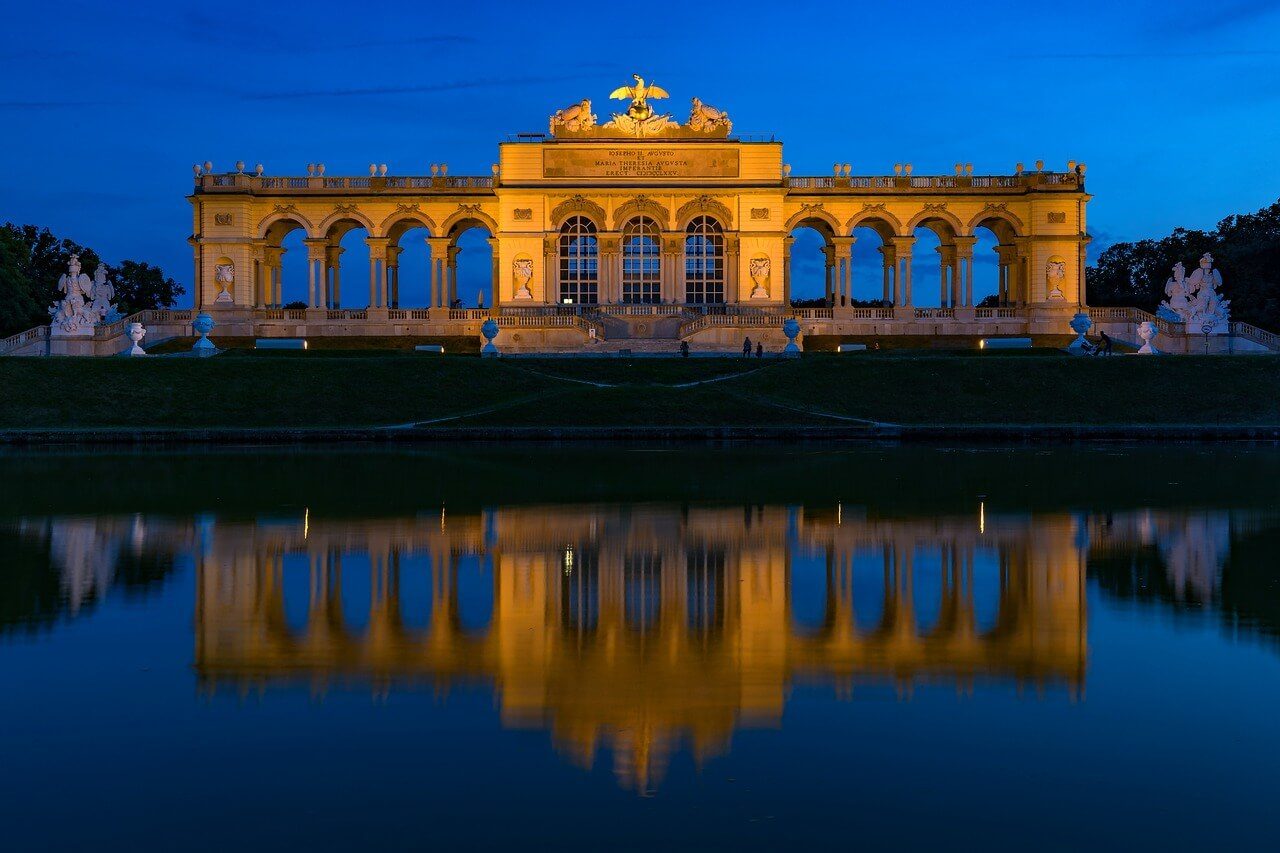
The Broke Backpacker is supported by you . Clicking through our links may earn us a small affiliate commission, and that's what allows us to keep producing free content 🙂 Learn more .
You can also book tickets with U-Bahn metro systems. You can see the places for these buses quite easily as they are marked with a blue cube that has a white ‘U’ on it. You can save money with these by booking a day pass online or getting Vienna’s local travel card. There are also buses and taxis found within Vienna, and this makes for a quick way to travel.
If you are wanting to travel in your own time, you can also hire a car or bike in Vienna. This is a great option when travelling, and it gives you a lot more freedom. If you don’t trust your GSP, you can hire a private driver to take you from place to place and show you some of the best streets!
If need be, the airport also offers reasonable ticket prices for a flight from one part of Vienna to the next.

Unlock Our GREATEST Travel Secrets!
Sign up for our newsletter and get the best travel tips delivered right to your inbox.
3-Day Vienna Itinerary Overview
Day 1 in Vienna: Kunsthistorisches Museum Wien , Austrian National Library , St. Peter’s Catholic Church , St. Stephen’s Cathedral , Vienna Opera House
Day 2 in Vienna: Schönbrunn Palace , Naschmarkt , Secession , Karlskirche , Albertina , Mariahilf
Day 3 in Vienna: Volksgarten , Rathaus , Prater , Museum of Applied Arts , Hundertwasser Apartment House and Museum , Danube Canal
More Places to See in Vienna: Central Cemetery , Wien Museum Mozart Apartment , Belvedere Palace , MuseumsQuartier

With a Vienna City Pass , you can experience the best of Vienna at the CHEAPEST prices. Discounts, attractions, tickets, and even public transport are all standards in any good city pass – be sure invest now and save them $$$ when you arrive!
A huge part of planning a trip to Vienna is knowing which neighborhood you want to stay in! Ask yourself what kind of place you are looking for – peaceful or bustling? Do you want to be close to Vienna points of interest or do you enjoy long journeys? Would you like to experience the luxurious side of Vienna, or are you more interested in the quirky parts? All of this comes into play, but we will share some of the best options of where to stay in Vienna!
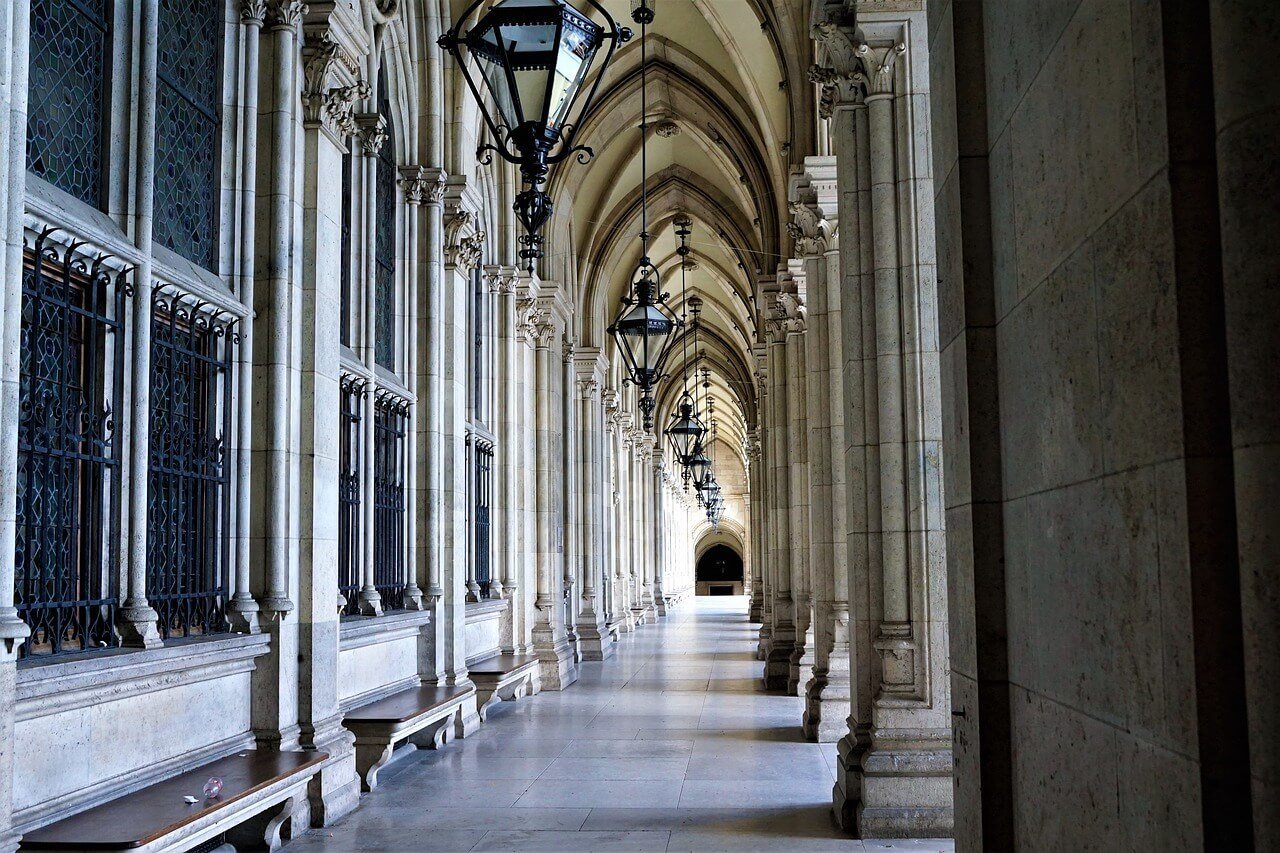
If it’s your first time in Vienna, then the area of Innere Stadt is the best place for you to stay. This neighborhood is central and is also where most of Vienna’s beautiful historical sites can be found. You can see all of the best architecture and do some magical sightseeing without having to travel far. One of the best parts about this neighborhood is that it is surrounded by the Ringstrasse wall, which once used to be the city’s official wall.
Neubau is by far the coolest place to stay in Vienna! This is where Vienna showcases its trendy art galleries, cafes with unique character, and plenty of designer clothing shops. The restaurants in this area are also well worth checking out and provide tasty cuisine set in unusually decorated buildings.
If you want to learn more, be sure to read our awesome guide on the COOLEST areas in Vienna !
Best Hostel in Vienna – Hostel Ruthensteiner Vienna
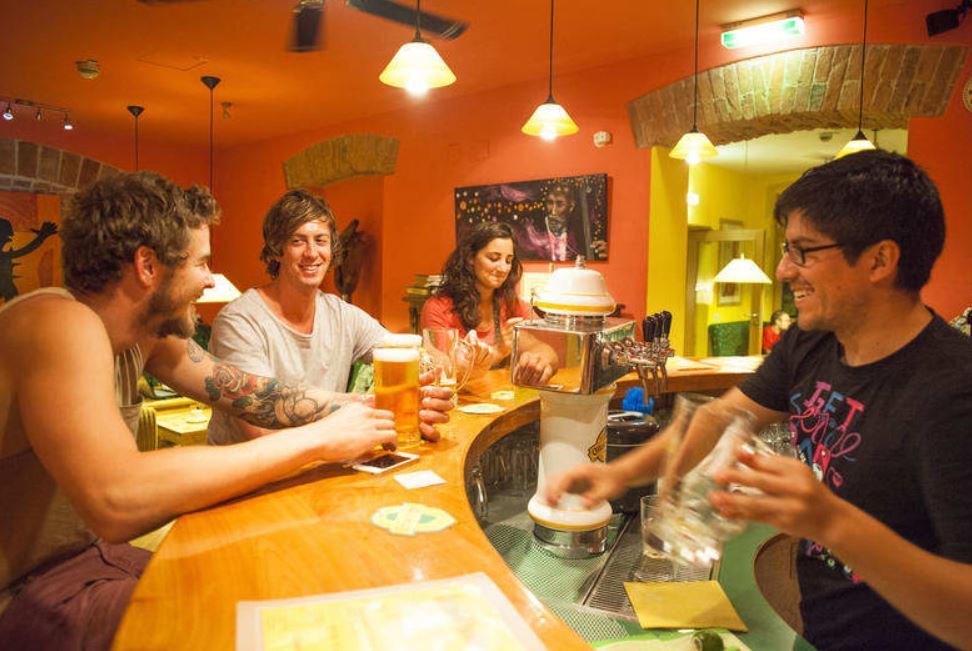
This remarkable hostel provides spotless accommodation that is also conveniently close to the Wein Westbahnhoff station. The hostel members pride themselves on the cozy and friendly vibe that exudes from their establishment. There is also an amazing garden and music area for you to put your feet up and relax after a long day of adventuring!
Best Airbnb in Vienna – Unbeatable Home in Prime Location
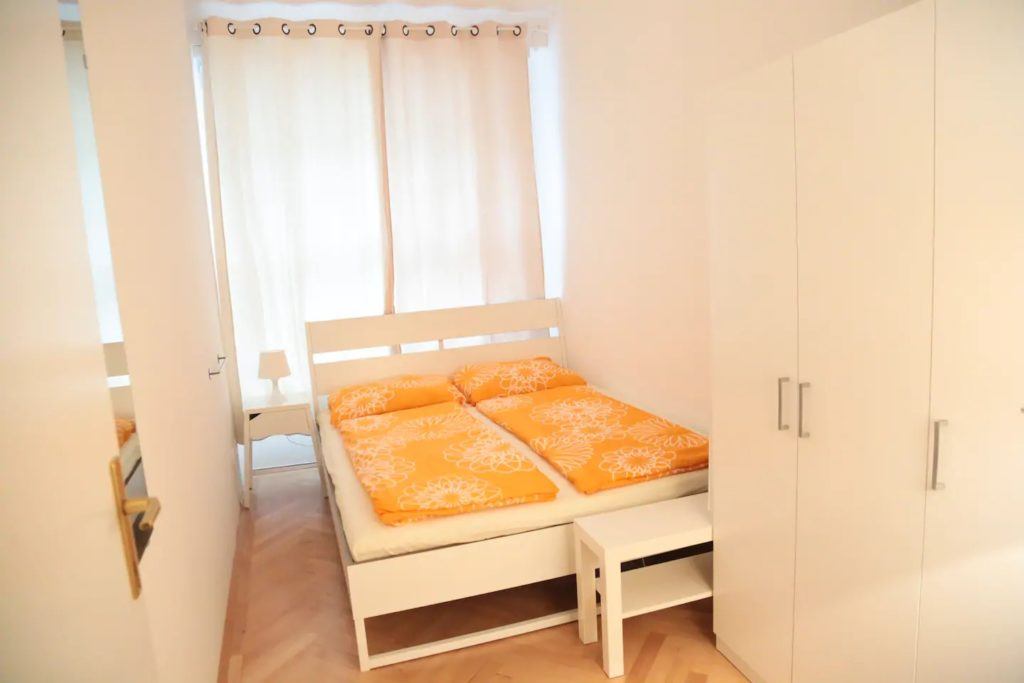
Discover Vienna on foot while staying smack dack in the city center in this modern but cozy apartment. And if you do plan to venture out, this home is footsteps from the bus station.
Do you like meeting new people on your travels? If that’s you, this is the spot to be; the private room is in a huge home where you share the space with a few people that will quickly feel like family you may end up going o future adventures with during your time here.
Not to mention, even with a house full of people, the place continues to stay immaculate. With a full kitchen to use whenever you please as well as a cozy living area that has an organized space to play board games or cards, you may not even leave home!
Best Budget Hotel in Vienna – Pension Wild
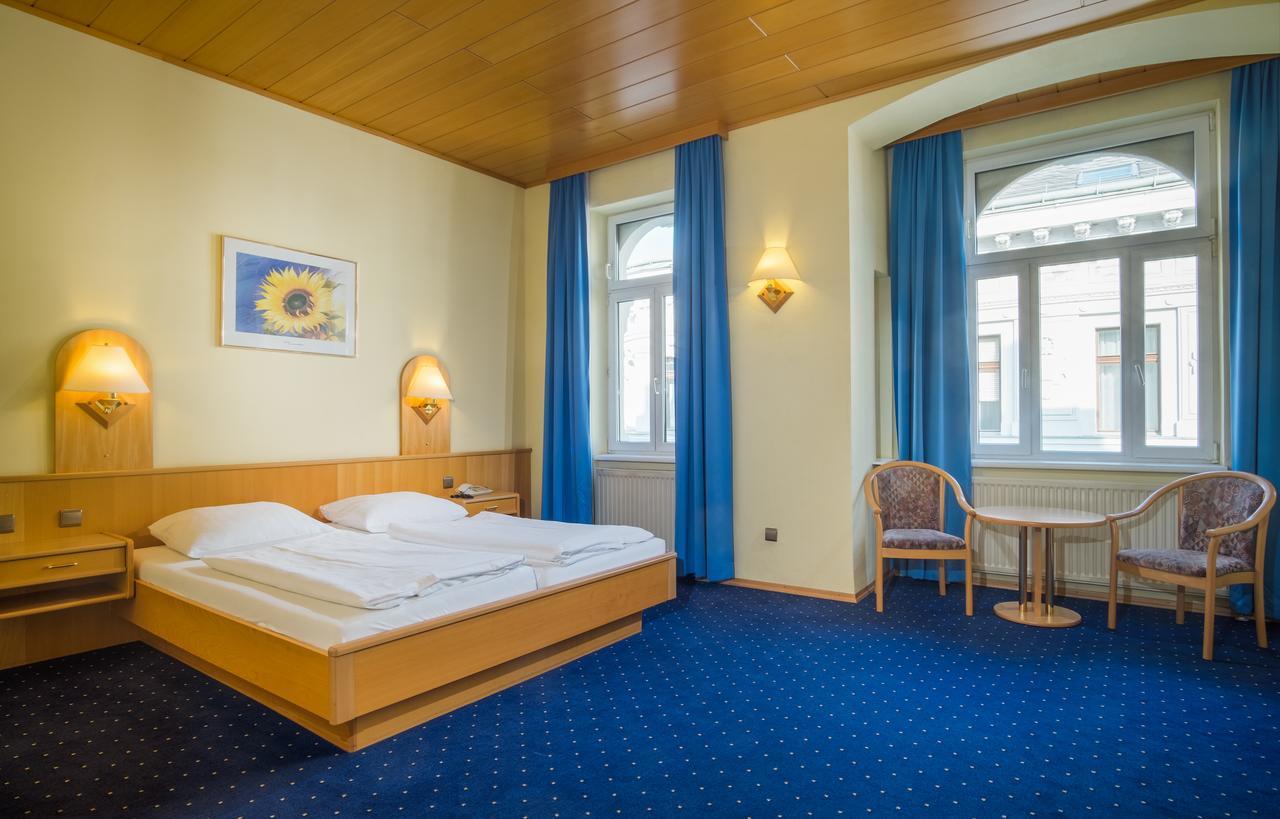
This budget-friendly hotel also happens to be a historical building in Vienna dating back to 1904! It has been renovated and provides elegant accommodation for those in Josefstadt. The hotel is close to two subways, both the Rathaus and Volkstheater Underground Stations. The rooms are comfortable and the staff is always smiling. This may be the best place to stay in Vienna during your visit!
Best Luxury Hotel in Vienna – House of Time
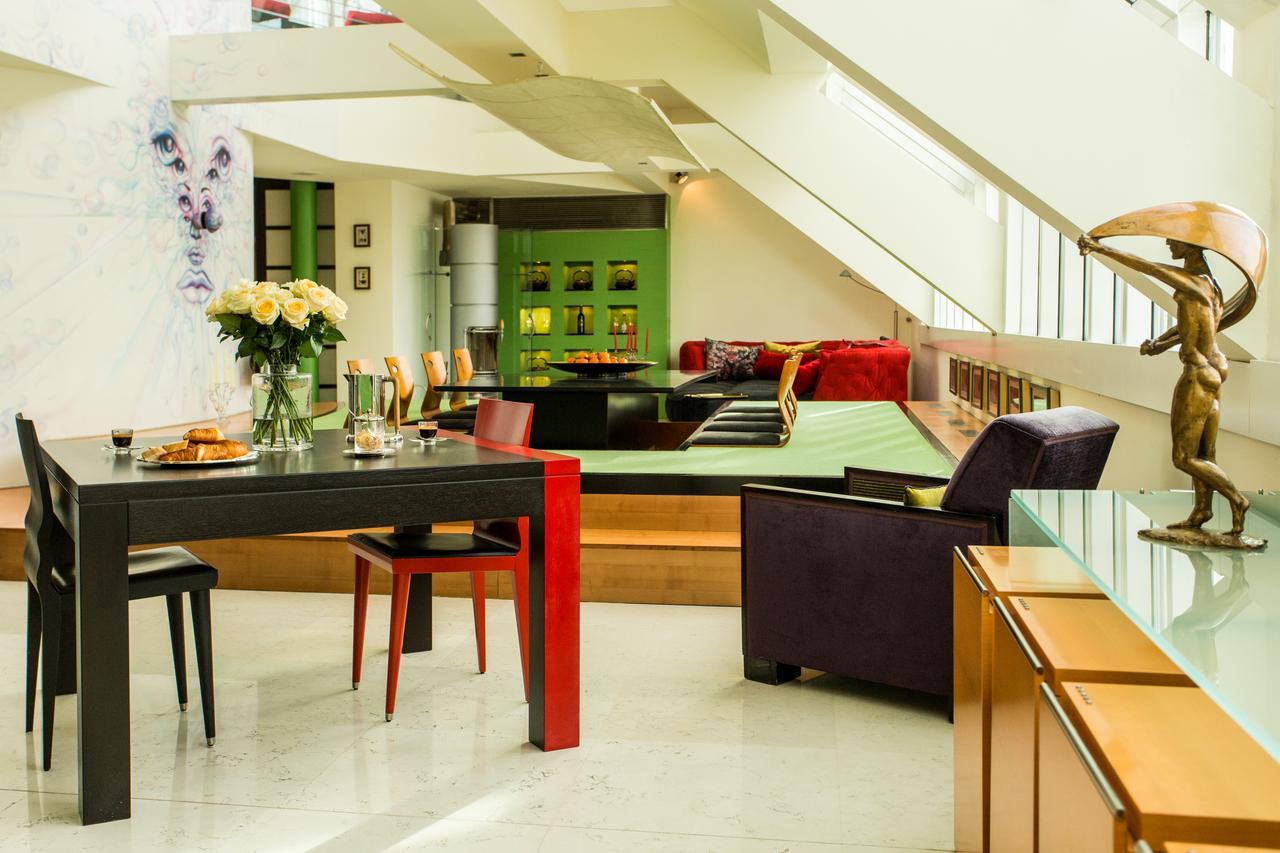
Enjoy 5-star treatment with an incredibly charming, artistic touch at The House of Time. These fancy suites are exquisite, each with their own theme. The hotel offers not only luxury accommodation, but style and an unforgettable hotel ambiance like no other. You can even book a room that has its own private room service, onsite bar, mini bar, and so much more are offered at the House of Time.
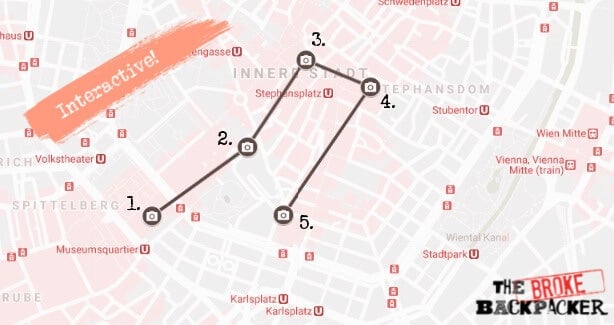
We’re going to spend our first day in Vienna admiring some of the finest landmarks in the city.
9:00 AM – Kunsthistorisches Museum Wien
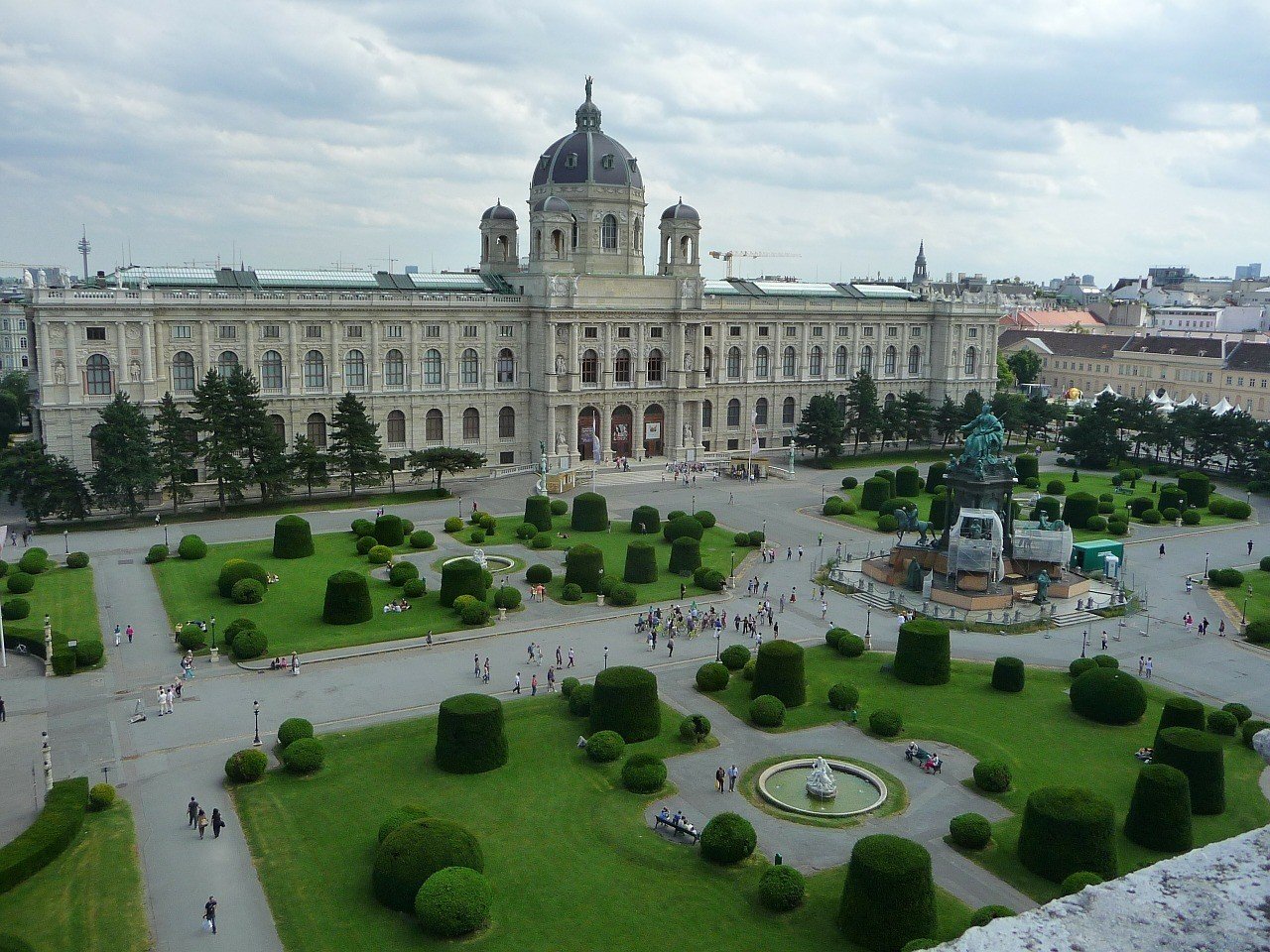
One of the best things about Vienna is its unique and rich artistic history; we’re going to start the largest art museum in the country on our first day in Vienna! The Kunsthistorisches Museum Wien is a magnificent building that hosts many priceless artworks, but its very structure is also a masterpiece.
It showcases excellent architecture with an artistic ambiance! Stroll the gardens and admire the external features of the building, then make sure to tour its interior. One of the most unforgettable parts of this museum is the signature octagonal dome.
Enjoy remarkable exhibitions, displays, and breathtaking artwork from the Viennese masters.
By the time you finish with the museum, you’re probably going to need a jolt of energy. Sit down for a relaxed meal and a cup of fresh coffee or a hot cup of tea at the museum’s cafe before leaving.
- Cost: €16.
- How long should I stay here? 2-3 hours.
- Getting there: There are two U-Bahn stops nearby: Volkstheater (Line 3) and the Museumsquartier (Line 2).
12:00 PM – Austrian National Library
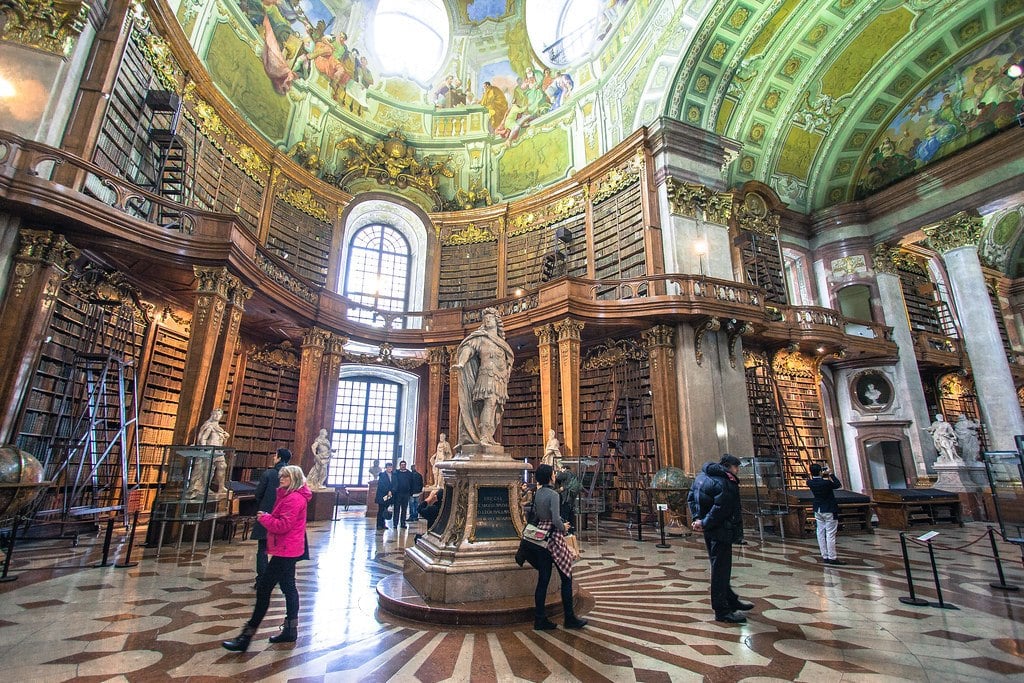
The Austrian National Library is the largest library in the country so expect a library that oozes with grandeur of a whole new kind! There are over twelve million items in its enormous collection. The library building itself has been standing since the fifteenth century and carries a beautiful history of its own (that you can read up about when you are there). It was originally built as a part of the glorious Hofberg Palace and Sisi Museum.
The Austrian Library is also made up of three wonderful museums, the Papyrus Museum, the Globe Museum, and the Esperanto Museum. The oldest book in the entire library is a medieval clerical scripture called ‘Evangeliar of Johannes of Troppau’, from 1368. It’s worth looking at because it is full of coloured drawings and beautiful calligraphy!
The impressive baroque State Hall is an immeasurable beauty! Marvel and stand in the middle of the cathedral-like oval dome, which is suspended by marble columns that are entirely covered in magnificent frescoes. There are also galleries of carved wood where you will find over 200,000 books that have been meticulously bound with precious leather.
There are wooden stairs on wheels to cross over the two stories of books! You will also see historic personalities that have been sculpted from pine marble and plenty of earth globes that are over 400-years-old.
When you’re ready to move on and/or you’re feeling a bit hungry, head over to Café Hawelka for some lunch!
- Cost: €8. Free for those nineteen and younger.
- How long should I stay here? 1-2 hours.
- Getting there: It’s a 10-minute walk to the Library from the Kunsthistorisches through the Burggarten.
3:00 PM – St. Peter’s Catholic Church
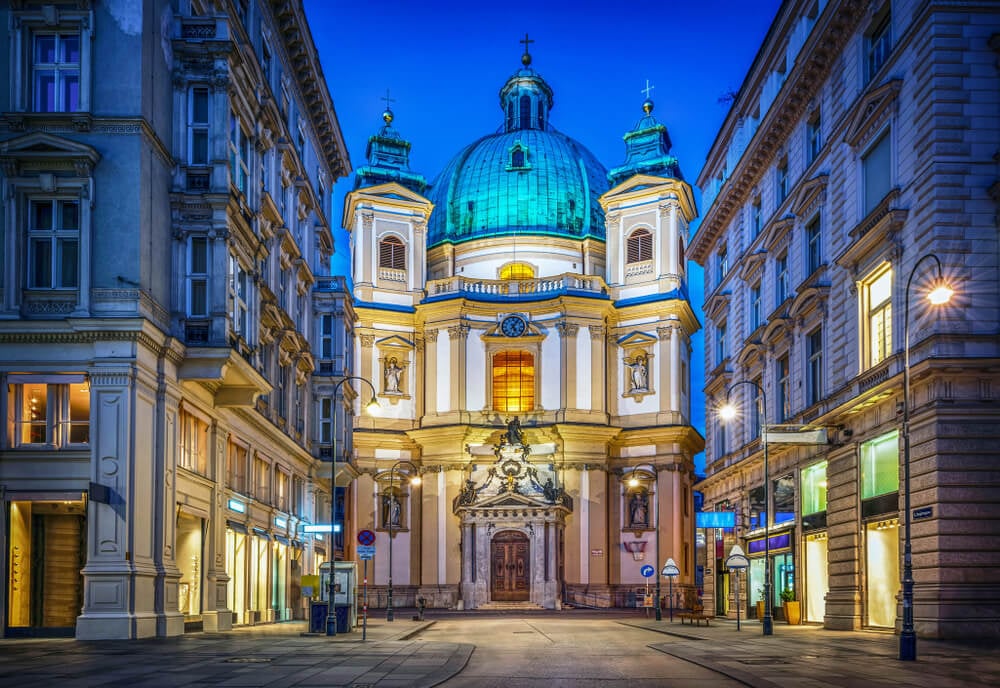
Also known as the Peterskirche, this Roman Catholic Church is one of the major Vienna landmarks and a highlight for any Vienna itinerary! Even from its exterior, it boasts a magnificent amount of classic domes, reliefs, and exquisite statues. Once you open those doors and step inside, you will have your breath taken away by this church’s uniquely colorful interior and form.
St. Peter’s Church was originally built in the 18th century, and it embodies all the architectural design qualities of that time. You can catch free concerts and recitals, so there is always a chance to enjoy an extra bit of fun when you visit!
This church is a captivating Baroque structure and has so much to offer everyone who visits! From gorgeous domes and artwork to well-designed interior details, there is a lot of magnificence fitted into a small space.
Begin your trip in Vienna with a place that captures the soul of this wonderful city!
Insider Tip: You won’t need to go inside the church to marvel at its beauty, and most of its best features are seen from outside. Be sure to ride the elevator to experience one of the best views in Vienna!
- Cost: €8-10 depending on if you want to go up to the dome by elevator or by foot.
- How long should I stay here? An hour or less.
- Getting there: If you dropped by Café Hawelka for a bite, St. Peter’s is less than 5 minutes away by foot via Graben Street.
4:00 PM – St. Stephen’s Cathedral
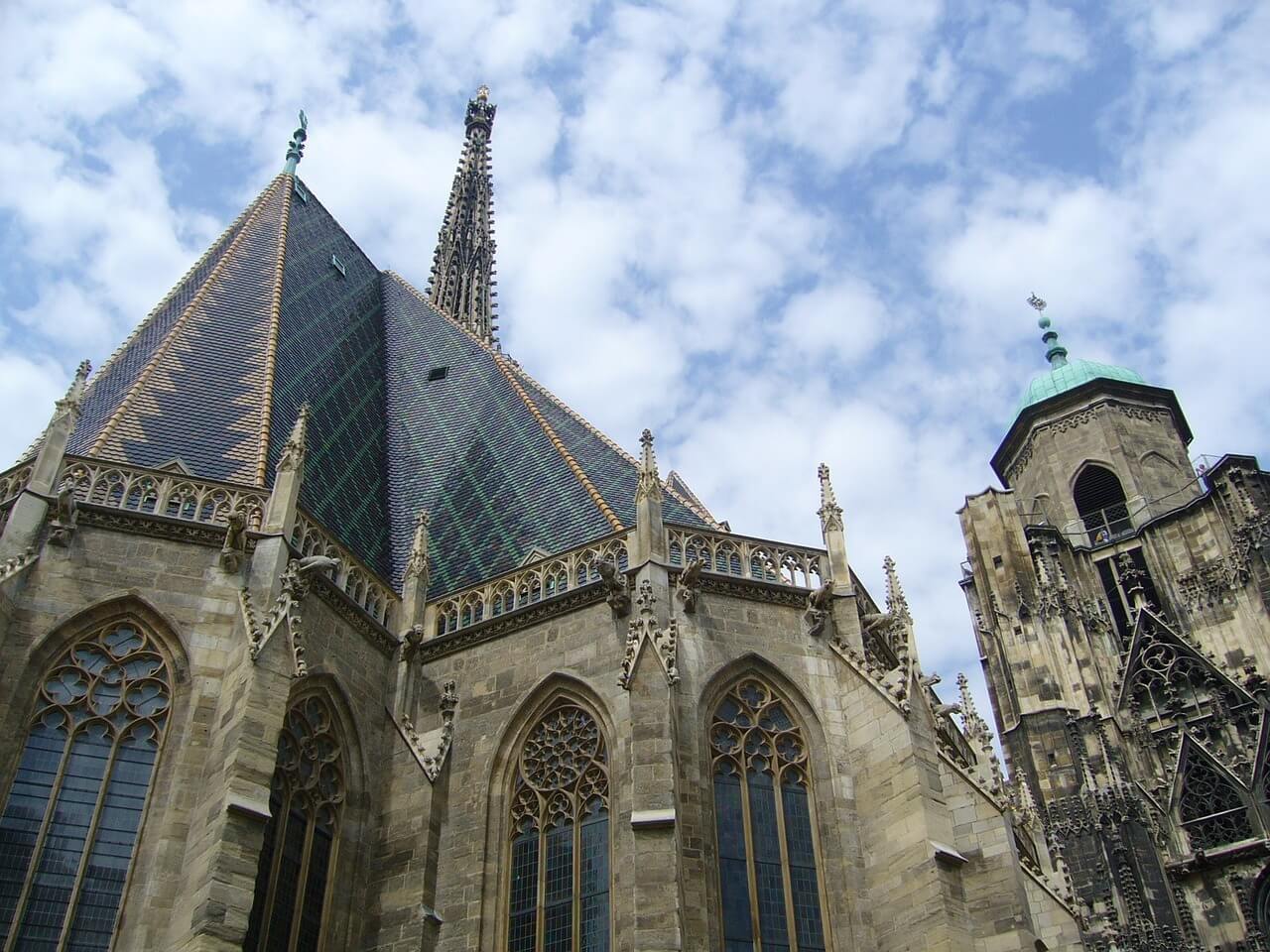
- Food Recommendation: Enjoy a luxurious meal at Cantinetta Antinori Gastronomie GmbH and be sure to try one of the many delectable wines made on the family estate!
Vienna has a host of fascinating and significant buildings, and St Stephen’s Cathedral is one of the most revered! It is the main mother church of the Roman Catholic Archdiocese and is where the seat of the Archbishop is, therefore, it is the most important Roman Catholic church in the whole of Austria!
The exterior of the church is made of impressive limestone walls and boasts a variety of intricately detailed statues of both Romanesque and Gothic architectural styles. The most eye-catching and enchanting part of St. Stephen’s Cathedral is the decorated and colorful mosaic roof that has been made of 230,000 tiles and its intimidating Imperial Double-Headed Eagle that pops out in the black tiles!
The church’s tallest tower is known affectionately as ‘Steffl’, and it stands at a staggering 136 metres (446 feet) high. It is now renowned as an icon of the city’s skyline! The interior of the church is even more breathtaking, and your eyes might very well pop out in sheer amazement as you take in the luxurious and detailed design and artwork!
NOTE: We’re going to end our first day in Vienna at the Opera and shows usually start at 7:00 pm. We can either a) have a small snack before the show and then another at intermission or b) have a proper dinner before. If we choose plan b then we’ll need to leave St. Stephens by 5:00 at the latest. There are plenty of (expensive) restaurants around Innerstadt to choose from – just make sure you make reservations ahead of time.
- Cost: Free! But it is €5.50 to enter the towers.
- How long should I stay here? Depends on how much you want to eat before the next destination. If you just want to eat a bit, you can spend more time at the church.
- Getting there: St. Stephen’s is practically across the square from St. Peter’s.
7:00 PM – Vienna Opera House
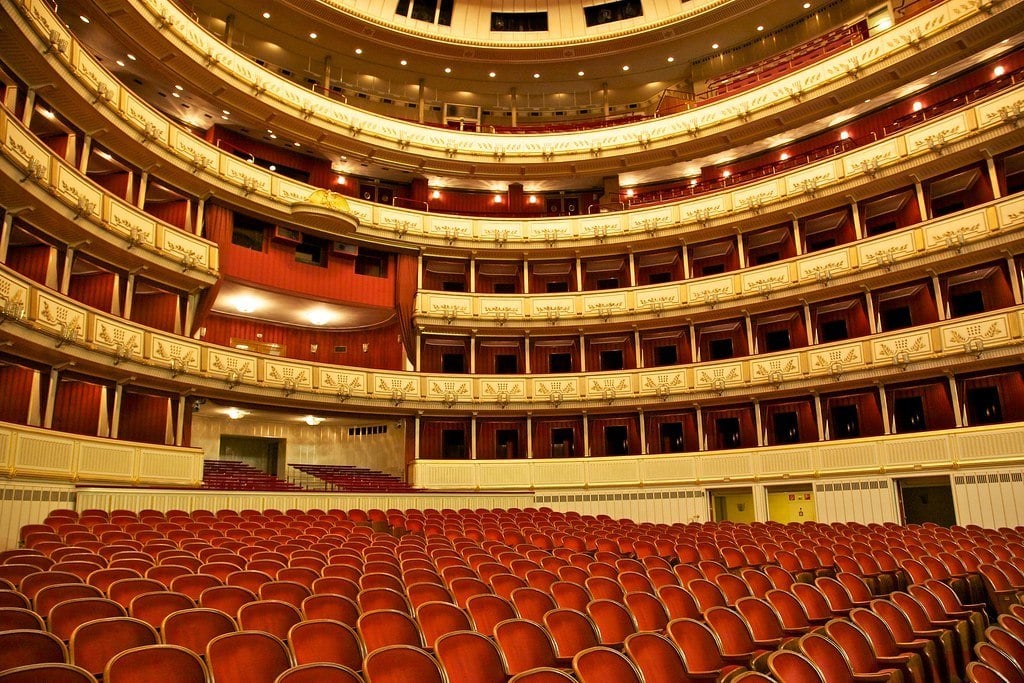
The Vienna State Opera House is one of the most famous and revered opera houses in the entire world, and it hosts a large variety of performances that are rich with culture and tradition. It is a true legacy of Vienna’s artistic accomplishments.
Each season, the schedule will feature 350 shows of more than 60 different operas and ballets! Every night there is a world-class artist among a permanent ensemble of Vienna Opera House members, accompanied by an orchestra. The orchestra is also impressively made up of the same artists from the Vienna Philharmonic Orchestra.
Enjoy world-class performances for a dazzling night out in Vienna! You can also enjoy events at the Vienna Opera House, such as special banquets and balls.
- Cost: Tickets can be anywhere from €2-315 depending on where you sit and what show is being performed.
- How long should I stay here? A typical opera is usually around 2.5-3 hours long.
- Getting there: The Vienna Opera is less than 10 minutes walk from St. Stephen’s.

Wanna know how to pack like a pro? Well for a start you need the right gear….
These are packing cubes for the globetrotters and compression sacks for the real adventurers – these babies are a traveller’s best kept secret. They organise yo’ packing and minimise volume too so you can pack MORE.
Or, y’know… you can stick to just chucking it all in your backpack…
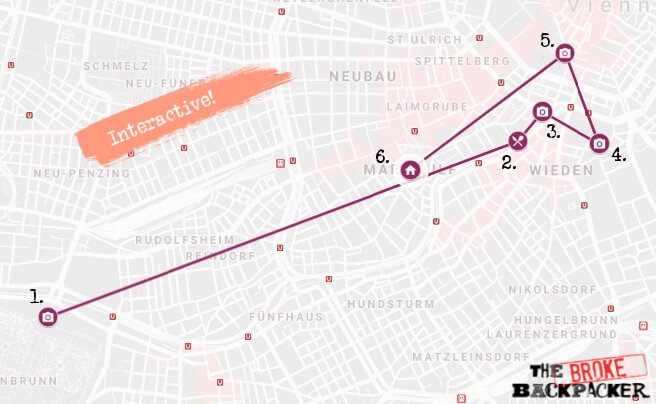
When you travel to Vienna, there are some places that you can’t miss! Enjoy your second day in Vienna with these amazing sights and beautiful places.
9:00 AM – Schönbrunn Palace
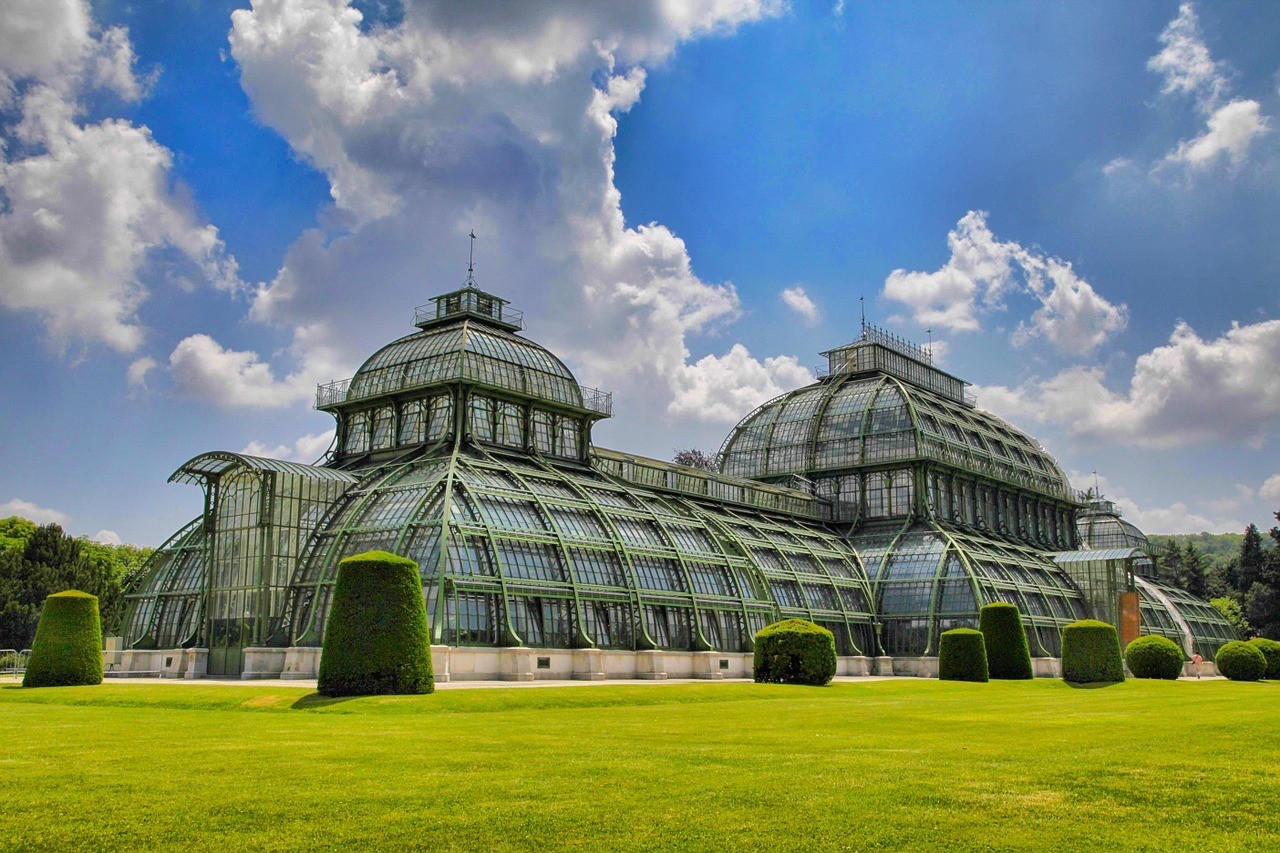
The jaw-droppingly exquisite and extravagant Schönbrunn Palace is a treasure trove of Viennese history and a place of opulent luxury! The palace, once the home of the famous Habsburg rulers, has 1,441-rooms and an unending amount of excellent features and displays throughout both the gardens and indoors. This palace was
The palace itself boasts a Baroque architectural design and is sure to make you feel like royalty as you stroll through the many halls and enjoy the mesmerizing gardens! Feast your eyes and take in one of Vienna’s most significant cultural, historical, and architectural landmarks.
Insider Tip: You can sometimes end up waiting in lines for hours and hours, so be sure to book your ticket online before arriving, so that you can skip the queue and have a guided tour!
- Cost: €16-52 depending on which pass you want.
- How long should I stay here? 1.5 hours inside and 1.5 hours in the park.
- Getting there: Schönbrunn and Hietzing are the two nearest metro stops; both are served by Line 4.
12:00 PM – Lunch at Naschmarkt
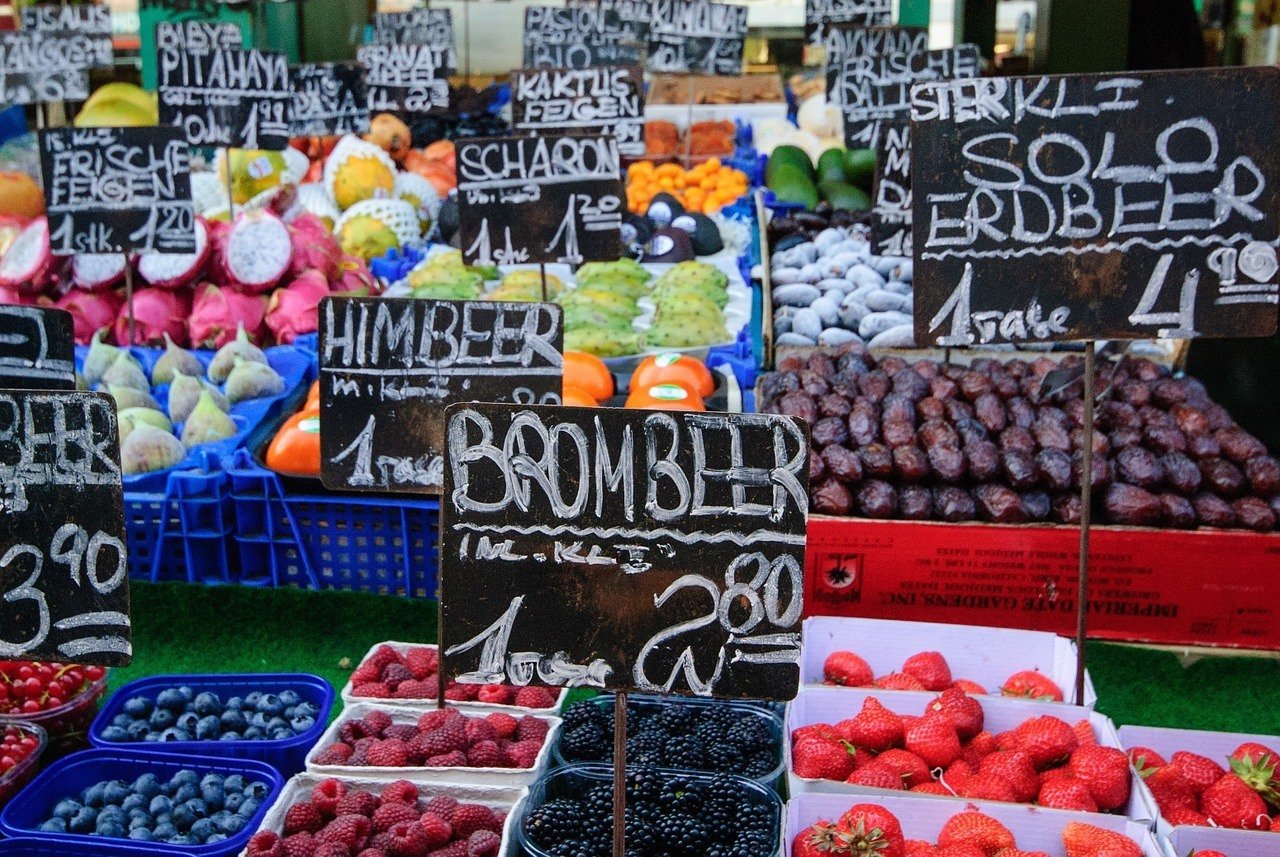
Can you imagine a market that could be described as luxurious? Vienna is probably the only place in the world where there is a luxurious authentic market. There is an endless variety and range of products. Whilst strolling, you will never cease to find something new to see, taste, and simply enjoy!
Opened in the 16th century, the market has a history and used to serve as a marketplace for the Austrian empire to sell goods to farmers from overseas and outside of the city. In today’s time, the Naschmarkt provides a vast array of services! It is a priceless place to enjoy Viennese cuisine and experience the language and culture of the local people.
Each stall is set up with the intention of catching your eye, so expect grand appearances, bright colors, and impressive displays. Fresh fruits are arranged to dazzle, food is cooked with flavorsome spices, and many ingredients are laid out. There is no better place to indulge in Viennese food! Be sure to add this onto your three day itinerary in Vienna!
The city’s melting pot of culture is showcased here in a truly fantastic way, and people-watching is one of the things you will find yourself doing. There are families that have been in Austria for centuries who make cheese and baked goods, as well as ethnic vendors who have come from all over the world to live and trade in Vienna.
The Naschmarkt is open every day of the week, except for Sundays. If you’re visiting Vienna in December, be sure to come for the Christmas markets as well!
- Cost: Varies. Meals usually cost around €15.
- How long should I stay here? 2 hours give or take.
- Getting there: Take Line 4 from Schönbrunn Palace and get off at the Kettenbrückengasse stop.
2:00 PM – Secession
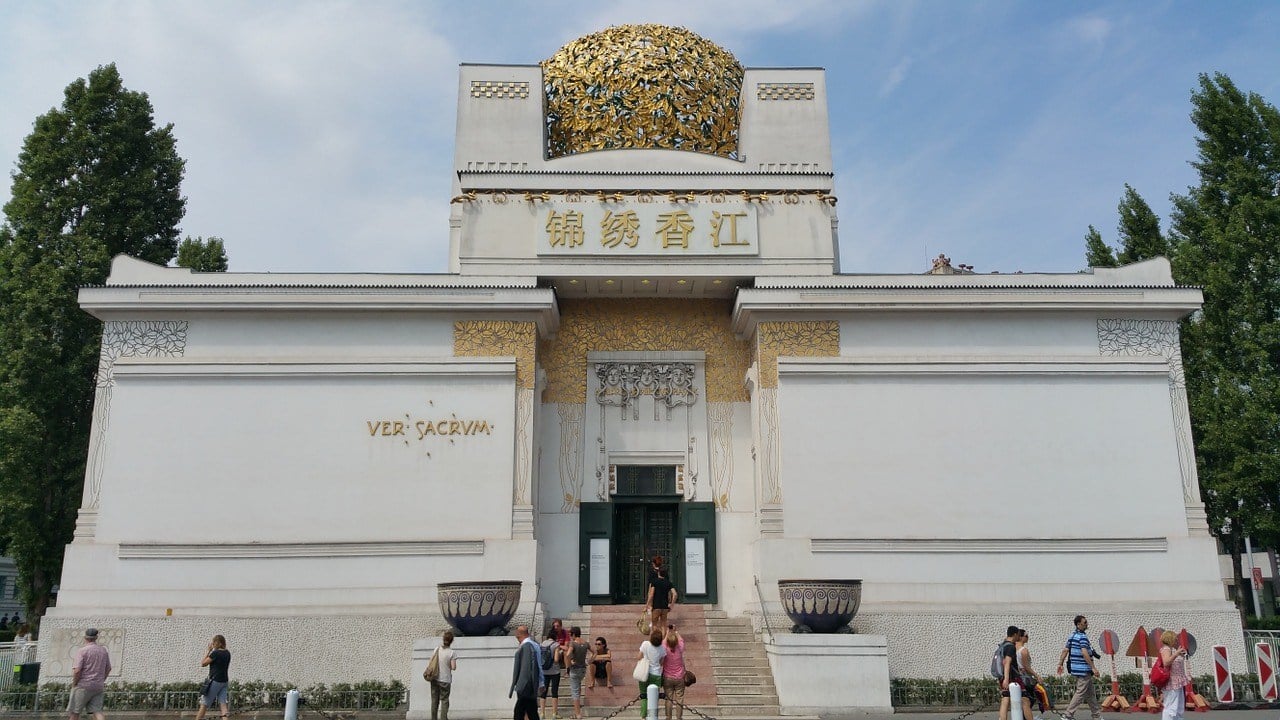
The Secession is a fascinating exhibition and structure of huge significance. Built in 1897, it marks the beginning of modern art in Vienna and pays homage to the powerful movement. When it was first introduced, it was highly controversial and clashed with the extremely traditional and conservative idea of art in that era.
Secession is a monument that honors the first designers and artists who were devoted to their forward-thinking and internationalist view of art! This is one of the very best and most interesting places to visit in Vienna !
- Cost: €9.50
- How long should I stay here? Less than an hour.
- Getting there: The monument is around 5 minutes walk from the Naschmarkt via Wienzeile Street
3:00 PM – Karlskirche
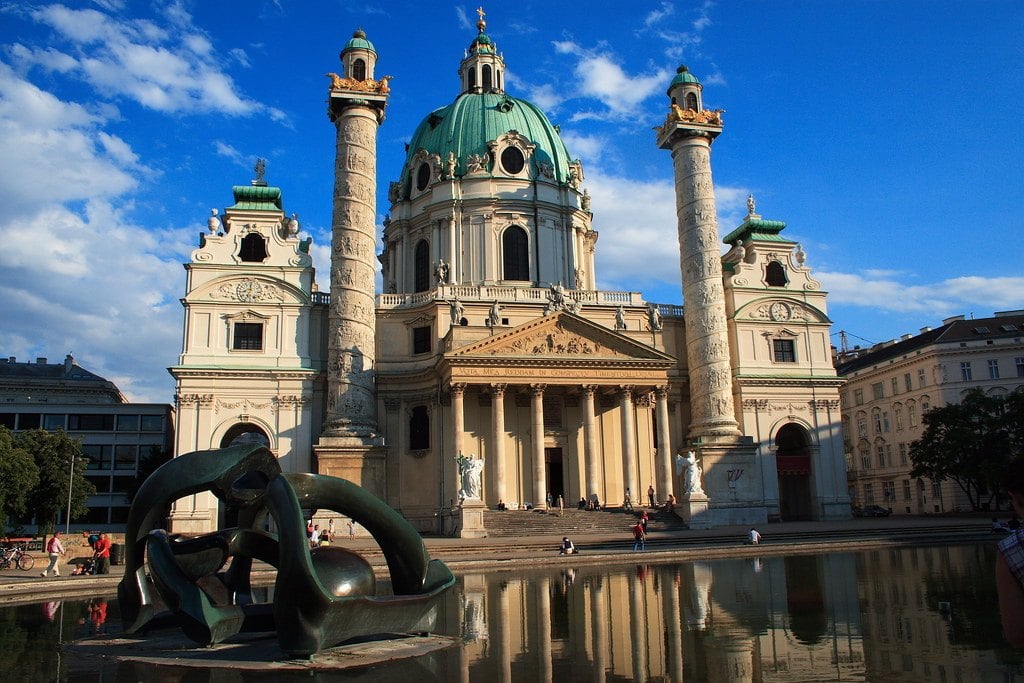
Also known as St. Charles Church, Karlskirche is a fascinating, religiously significant marvel in Vienna! One of the main features of this magnificent church is its massive cupola, which was the last piece of work done by an eminent Viennese architect, Johann Bernhard Fischer von Erlach.
Karlskirche was built in the seventeenth century, and it was constructed because of a vow taken by Emperor Charles VI during a plague epidemic in Vienna. The church pays homage to the patron saint, Saint Charles Borromeo, and you can even find exhibits in the church that display his now very old traveling clothes!
The High Altar has been renovated but maintains its original design and captivating appearance. This is one of the best places to visit in Vienna on your second day!
Insider Tip: If you are a lover of classical music and gospel, be sure to check out the church concerts performed on a regular basis.
- How long should I stay here? An hour; maybe longer if you go inside.
- Getting there: Cross the main street and Resselpark; the church is less than 10 minutes walk from the Succession.
4:00 PM – Albertina
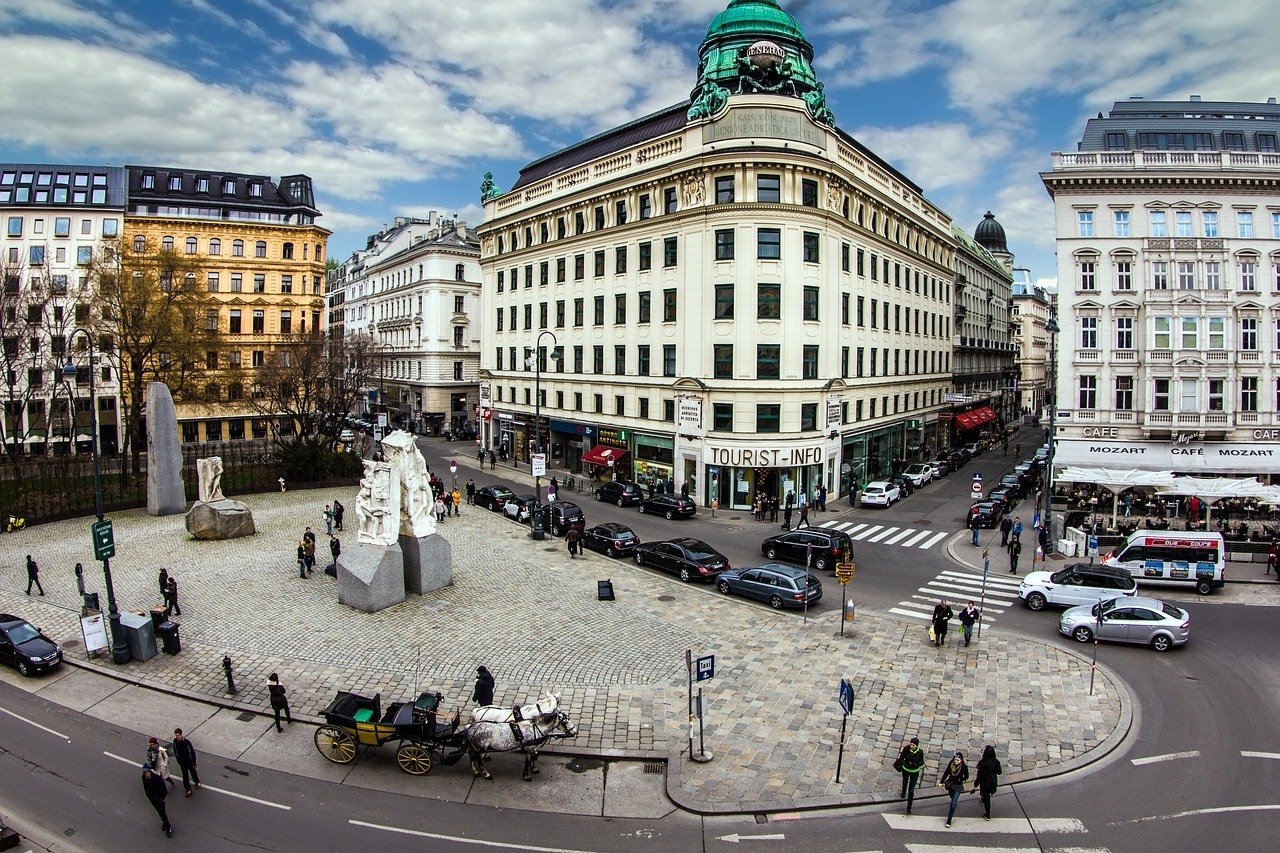
If you love all things art and drawing, then you MUST visit the Albertina during your three days in Vienna! This museum is home to over 65,000 drawings and approximately one million old master prints. In fact, it has one of the largest and most important print rooms in the whole world!
The museum is special to Vienna, but it is also a monument that holds heralds of history from days long past and can give insight into the world’s artistic past.
You can also enjoy a host of majestic graphical words from the modern era, as well as impressive photographs and architectural designs.
- How long should I stay here? Until closing (1-2 hours).
- Getting there: The museum is located back in Inner Stadt and it’s about a 15-minute walk from Karlskirche.
7:00 PM – Mariahilf Neighborhood
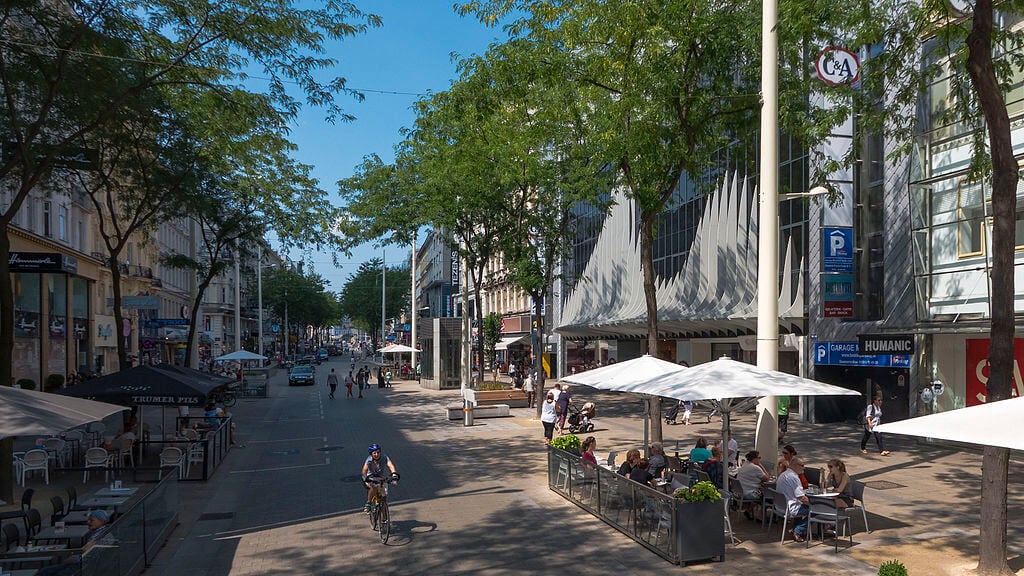
After a long day of exploring Vienna, it’s time to sit down and have a nice meal and tall stein of beer. The best area to unwind in the city is definitely the district of Mariahilf.
Mariahilf is currently one of the trendiest neighborhoods in Vienna is very popular with younger crowds. Some of the coolest Viennese cafes and bars are located around this quarter so it makes for an excellent place to blow off some steam and get stuck in a long conversation. There are a lot of students around so the conversations may veer towards the academic what’s currently ailing society.
Cafe Kafka is one of the most notorious coffee house in the area and worth dropping by for a quick drink. Fair warning though: it can be noxious inside as smoking is allowed indoors here.
Secret Garden is a very charming vegetarian restaurant tucked away in an even more charming back alley of Mariahilf.
Finally, Stehbeisl is one of the best bars in Vienna thanks to the ambiance – imagine fancy dive with cheap beers and pictures of American rockers.
- Cost: €3-4. €10-15 for an affordable dinner.
- How long should I stay here? As long as you want!
- Getting there: You’ll need to backtrack past Kunsthistorisches and beyond the MuseumsQuartier. A bit of a walk from the Albertina but still less than 20 minutes away.
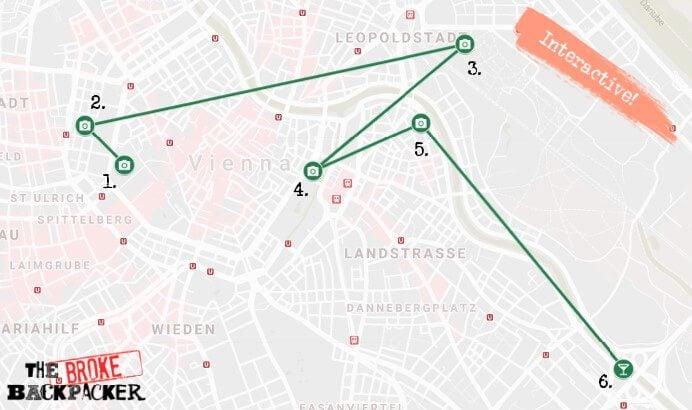
Are you wanting to know which places to visit in Vienna? Well, our itinerary covers a variety of places to go and things to do during your visit. If you plan on spending a weekend in Vienna , three days, or even a week, these activities will guarantee that you have an amazing time!
9:00 AM – Volksgarten
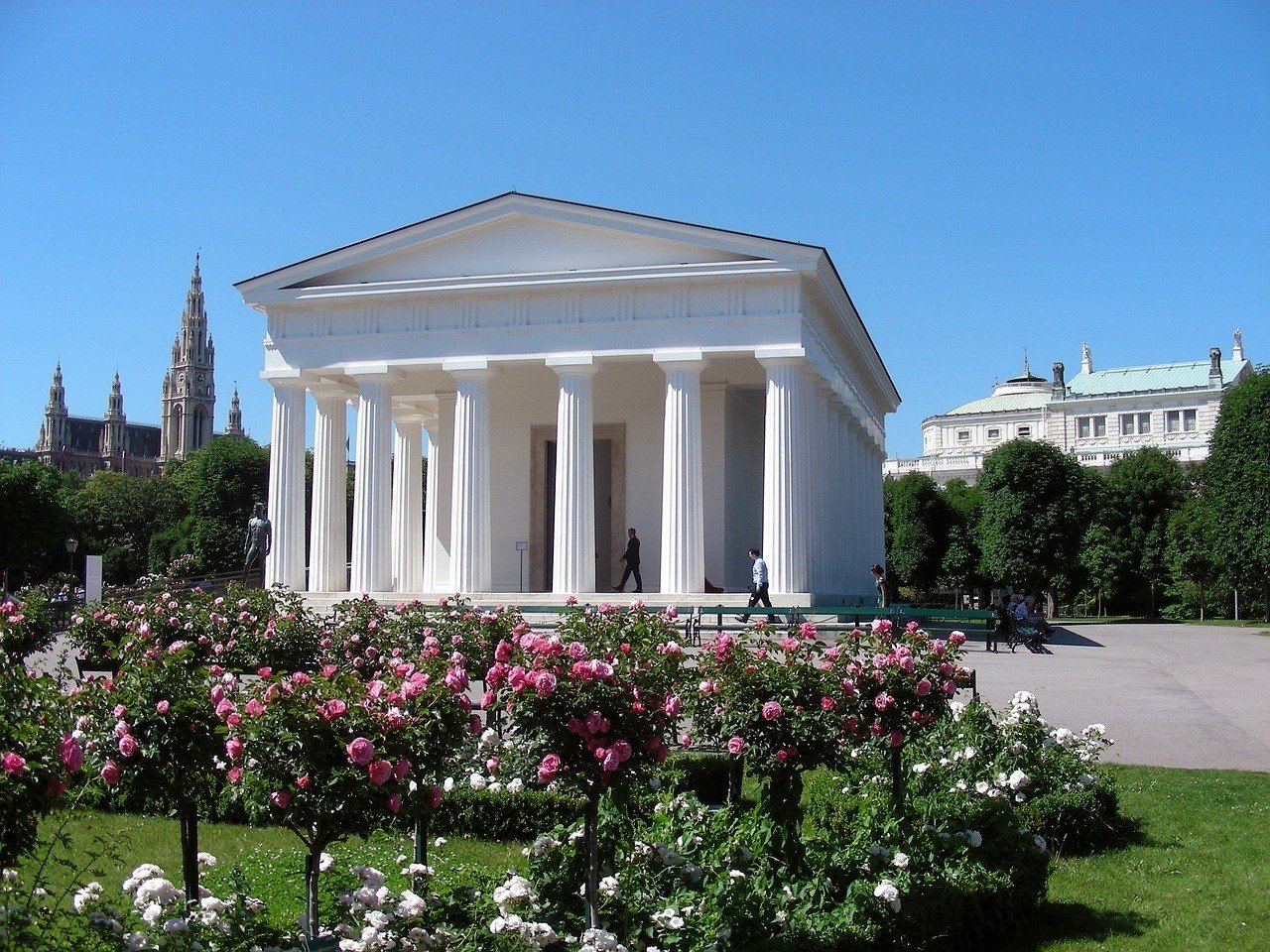
The Volksgarten is an extremely scenic public park that is apart of the Hofberg Palace, and it is well worth seeing! The park itself was built over the historical site of the city fortifications that got destroyed by Napoleon in 1809.
The park boasts historical value, pristine gardens, soothing fountains, and a gorgeous place to stroll about and enjoy one of Vienna’s most sculpted flower and bush formations. Start your morning easy and get the cobwebs out of your eyes before we start day 2 of our Viennese itinerary.
After you finish your walk in the park, be sure to drop by Café Landtmann in front of the Rathaus. It is one of the most famous coffee houses in Vienna and was one of Sigmund Freud’s favorite places to frequent.
- Cost: Free.
- Getting there: Take Line 2 and get off at Volkstheater.
10:00 AM – Rathaus
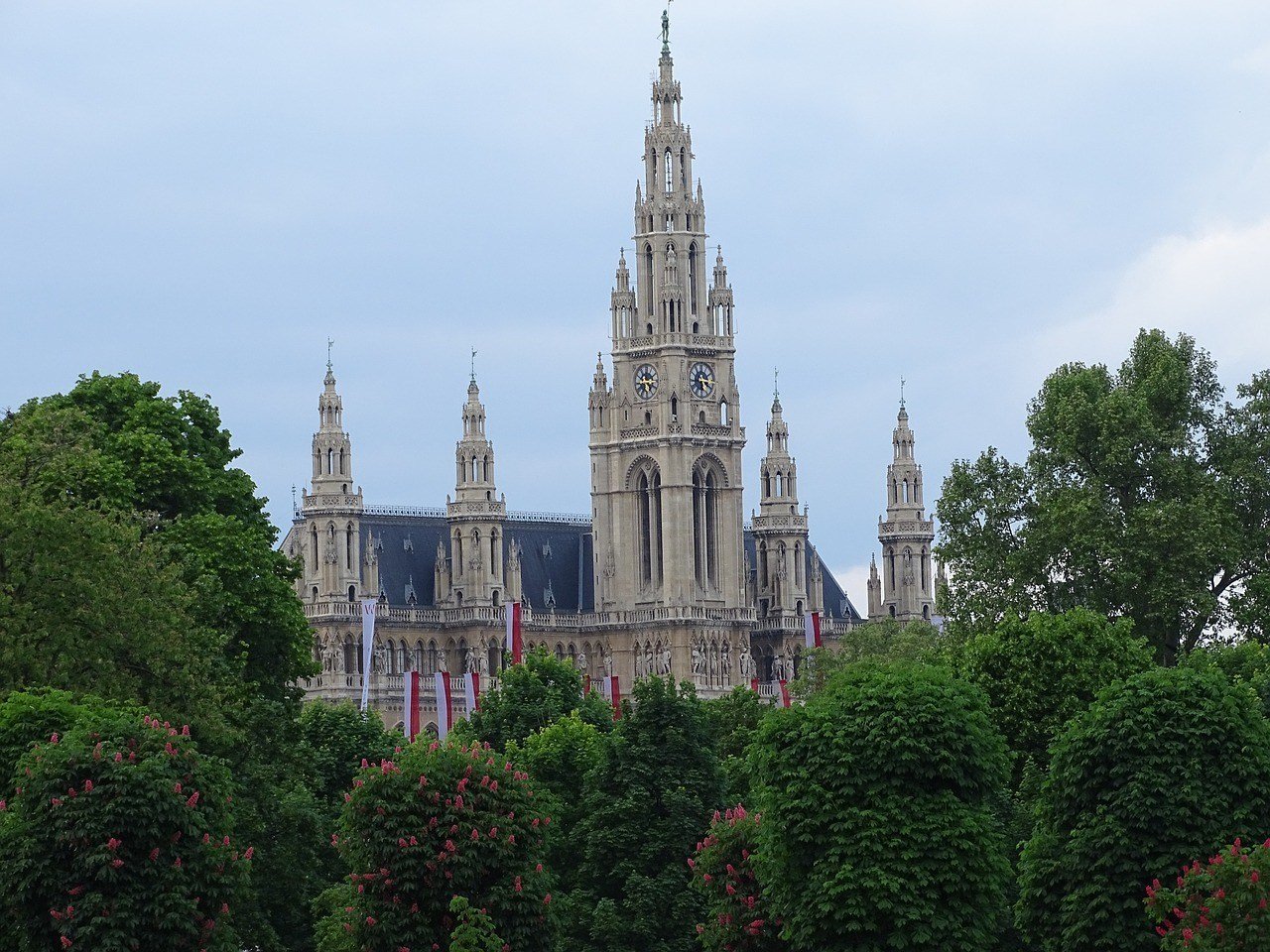
The Rathaus is Vienna’s City Hall. It is also the most expensive monument that has been built in Vienna during the 19th century! It was originally constructed between 1872 to 1883 and has an incredible neo-gothic design.
There is a lovely 100-meter tall tower that resembles a cathedral bell tower, and it sticks out like an oddly beautiful sore thumb! The tower is topped by a significant statue of a regal armored knight holding a lance. In fact, you will find statues of Viennese nobels all over the Rathaus grounds.
One of the must-see sights is found on the eastern side of the building, and it is a wonderful loggia that leads you into the interior of Rathaus. From here, you can walk up a sleek staircase to view the extravagant banquet hall.
- Cost: Guided tours can be bought on-site to see the halls but there’s not much time today.
- How long should I stay here? An hour.
- Getting there: The Rathaus is across the street (Universitätsring) from the Wolksgarten.

12:00 PM – Prater
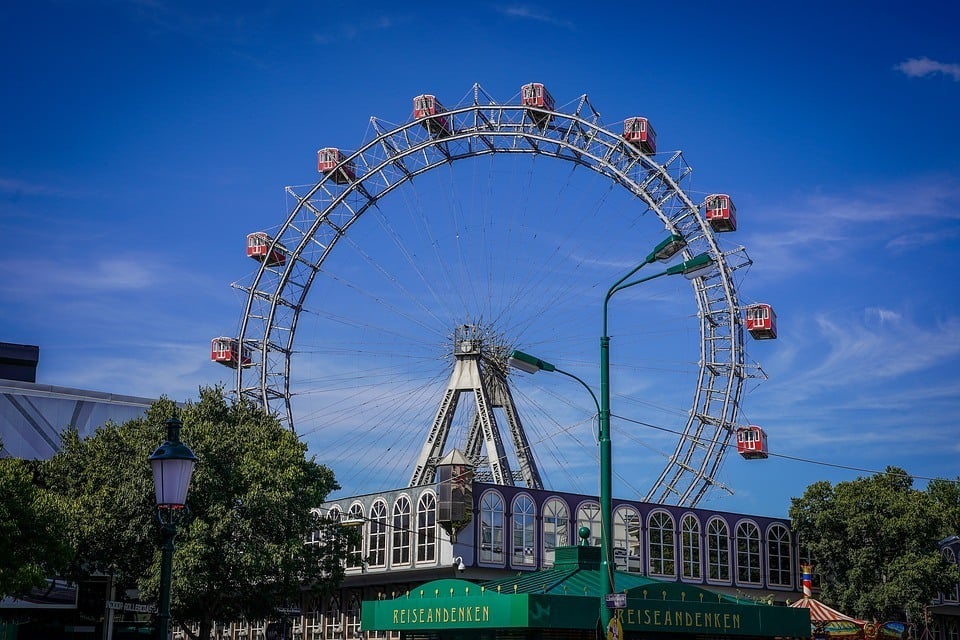
Officially known as Wurstelprater , Prater is one of the most fun and exciting amusement parks in Vienna! Not only will you find a host of incredible sites, rides, and uncanny food stalls, but you can also enjoy an iconic ride on Vienna’s most popular and world-renowned symbol – the Wiener Riesenrad Giant Ferris Wheel. Movie buffs will also interested to hear that this Ferris wheel is where one of the most famous scenes from The Third Man – an iconic movie starring Orson Welles and made in Vienna – was filmed.
For those who are not interested in the theme park, there’s still plenty of green space to wander around. We suggest grabbing a wurstel (sausage) or something else to go from one of the stands back at Wurstelprater and then having a little picnic on a hill somewhere.
- How long should I stay here? 3-4 hours.
- Getting there: Take the U-Bahn (Line 2) from the Schottentor stop near the Rathaus and get off at Messe-Prater.
3:00 PM – Museum of Applied Arts
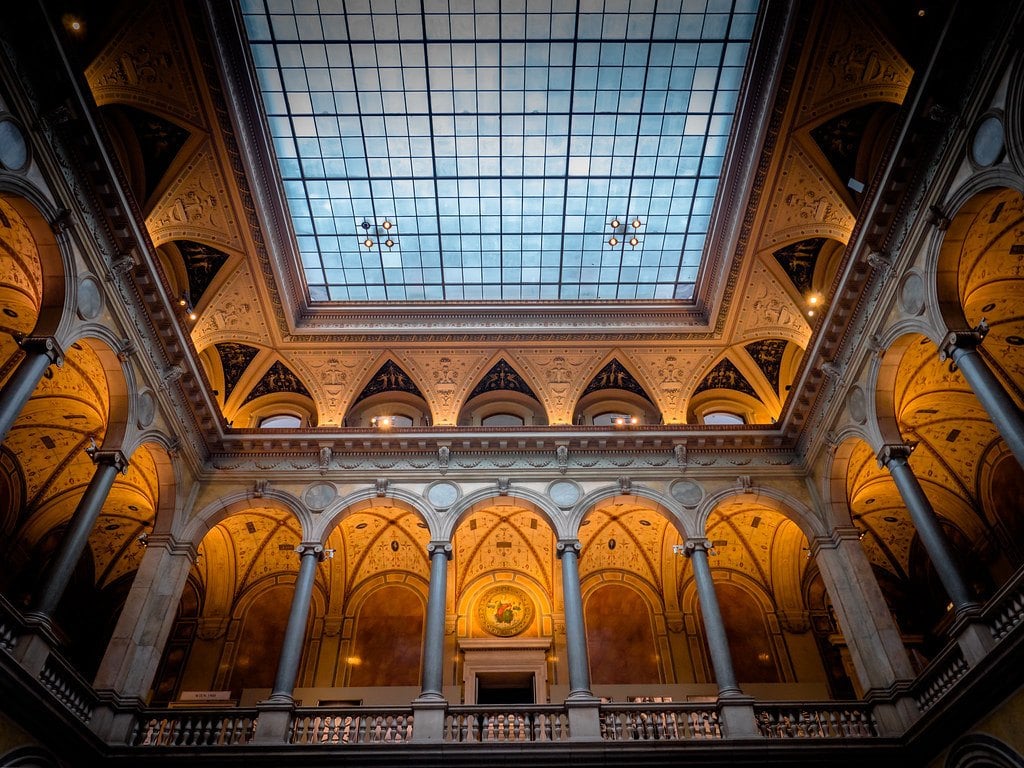
Also known as MAK, the Austrian Museum of Applied Arts is an extraordinary museum and one of the most fabulous structures in Vienna! One walk around here will have you feeling inspired and invigorated with a fresh new set of eyes to lay on the world. It has been around since the eighteenth century and has a lot to boast about in terms of its function and architectural properties!
The museum traces the artistic history of Austria and emphasizes current art accomplishments. You will find every kind of exhibition displayed here, from baroque glassware to industrial design awards. The museum is also known for hosting remarkable temporary exhibits. It will be sure to add a sense of excitement to your visit, and you may be lucky enough to see one!
The building of the Museum of Applied Arts is a masterpiece in itself, and you could spend plenty of time admiring the ceiling, which is a gorgeous neo-renaissance design. This one-of-a-kind museum is a museum of Austrian art, design, and also history. It offers a huge variety of insight into all of these fascinating areas!
- Cost: €12.
- Getting there: From the beginning of Wurstprater, it’s about 10-15 minutes walking back across the Danube Canal.
5:00 PM – Hundertwasser Apartment House and Museum
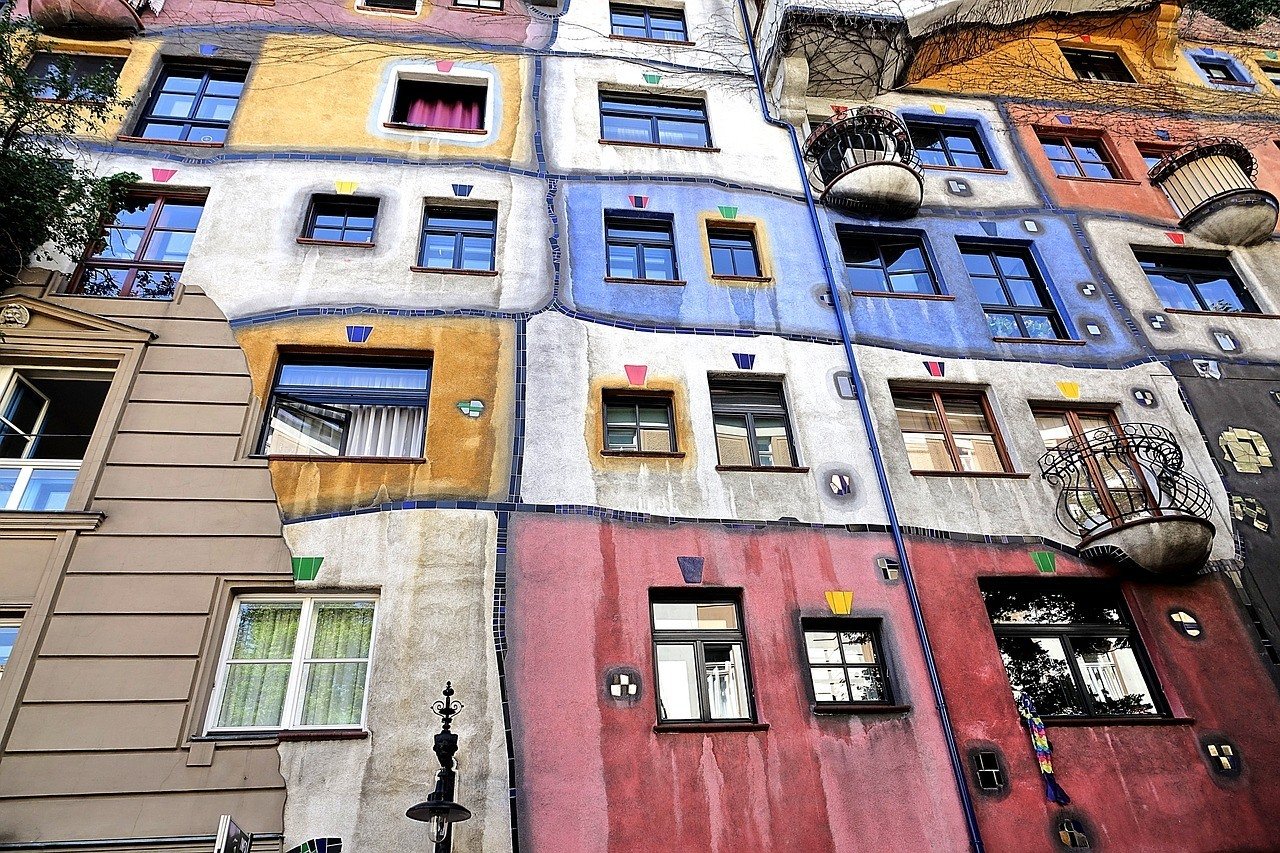
The artist in which this entire adventure pays homage to is Friedensreich Hundertwasser, and -although his name might be a tongue twister- it is well known to all Viennese households. The Apartment House is one of his very first and very influential designs. He was an architect with a love for out-of-the-box thinking and a dream to inspire people all over the world to create their own paradise on earth!
The apartment is one of Vienna’s highlights and shows off remarkable Antoni Gaudi style architecture. It is a real sight to behold and an eye-catching gem on your three day itinerary in Vienna.
The Hundertwasser Village is found just opposite the house, and there is a building that has an entire forest for a roof! The village itself is a small shopping center, complete with a handful of beautiful souvenir shops.
The museum is a short walk from the apartment and provides excellent insight into the world of this famous Viennese artist! The museum building has a beautiful interior design and is worth having a look at. You can also enjoy a selection of his artwork and become inspired by someone who has left a magnificent footprint of love and art as his legacy.
The Hundertwasser Apartment House can be seen from outside all day every day, however, the infoshop is only open from 9 am to 5 pm. You can see the village every day from 9 am to 6 pm and the museum from 10 am to 6 pm.
- Cost: €11.
- How long should I stay here? 1 hour is fine.
- Getting there: From the Kunsthaus, it’s a 5-minute walk to Hundertwasser.
7:00 PM – Danube Canal
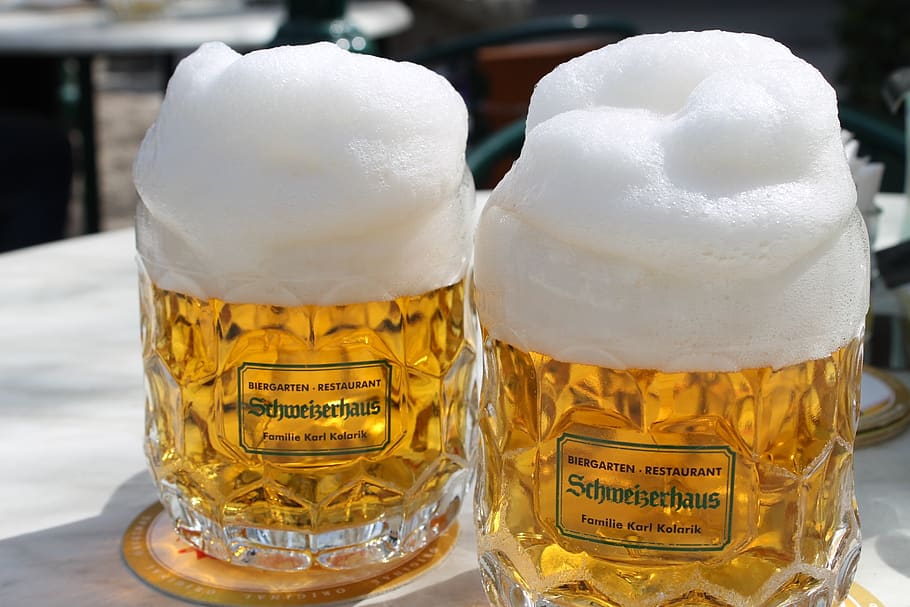
Spend your last day in Vienna lounging by the lazy Danube Canal. Whilst a fairly unremarkable sight on its own, during the summer the canal can get pretty busy with pedestrians. Lots of people come here at the end of the day to relax and drink beers with friends!
There are lots of bars and restaurants around the Danube Canal. Strandbar Herrmann is probably the best of the bunch and features some excellent DJ sets. There’s also Badeschiff Wien, similar to Strandbar, as well as Motto am Fluss, which is a bit fancier. Regardless of which you end up choosing, relaxing with a large beer and some chips is the best way to end your Vienna itinerary.
- Cost: €4-7 for a drink. €10-15 for a dinner.
- How long should I stay here? The rest of the night!
- Getting there: Find Lowengasse street and then grab Tram 1 at Hetzgasse stop. Ride for a couple stops on then Strandbar will be on the right.
Need a place quick? Here’s the best neighborhood in Vienna
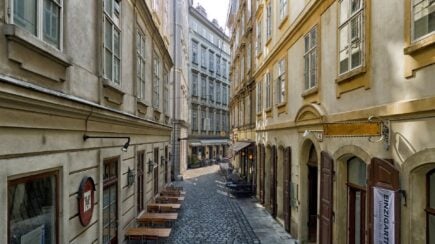
Innere Stadt
Innere Stadt is the most central neighbourhood in Vienna, and where most of the historical sights are located. It is your best option to stay there if you are visiting the city for the first time, as you will be close to everything and in the centre of the action.
- Get a slice of Austria’s most famous cake at the Sacher Hotel
- Get a glimpse of the Habsburg’s family life at the Hofburg
- Visit Stephansdom, Vienna’s most famous religious building
Ready to go BEYOND our three day Vienna itinerary? Here some other places to check out around the city!
Central Cemetery
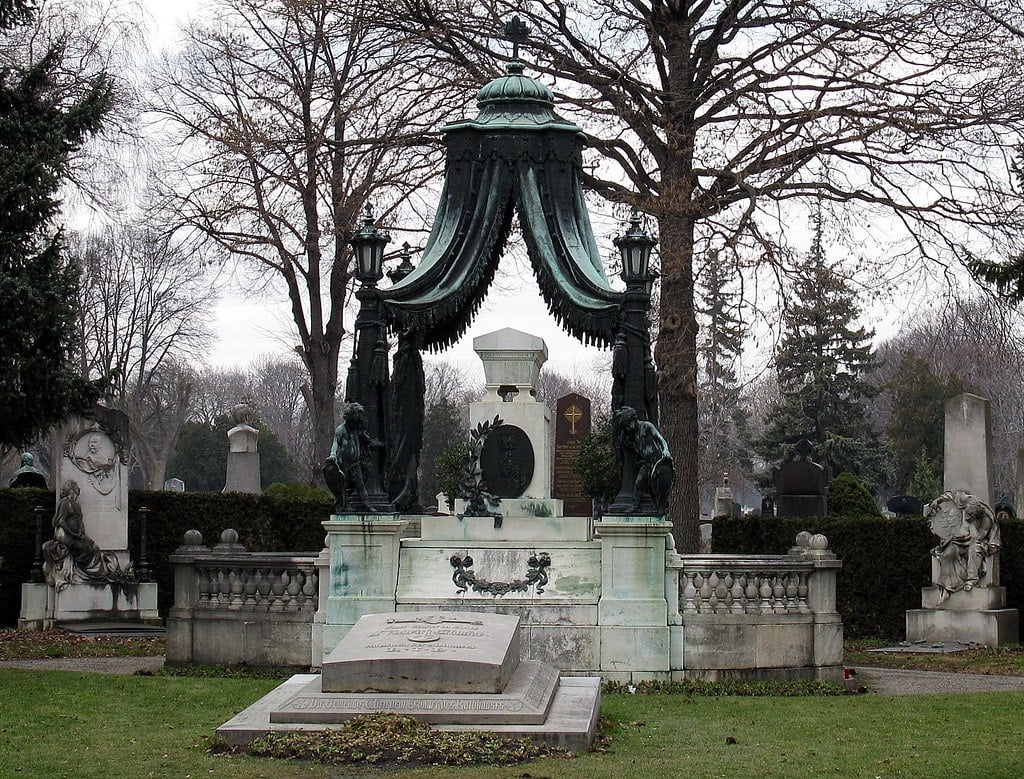
If you want to know what to see in Vienna that is unusual and mysterious, then the Zentralfriedhof (Central Cemetery in English) definitely falls into that category! Some may not be comfortable with it, and therefore you can skip this option if that is the case, however, there is a serene atmosphere and a sense of beauty found at this cemetery that is unique to Vienna.
The Central Cemetery’s origins have a rich history, and it was built due to the overwhelming jump in population (approx. one million inhabitants) in 1874. It is the largest and most beautiful cemetery in Austria and one of the largest in the world.
The cemetery is full of ancient monuments and gorgeous statues. You will also find a beautiful church through the main gate, known as the Church of St. Borromeo.
Take the chance to relish your life whilst in a place that honors the dead and enjoy the way this cemetery has found a way to celebrate the lives of those who have passed.
Insider Tip: To get the full spectrum of the Central Cemetery, it’s best to book a tour!
- How long should I stay here? 1-2 hours.
- Getting there: The Central Cemetary is pretty far away from the city center. To arrive, you’ll need to take commuter train S7/S2 or tram 71, not the U-Bahn.
Wien Museum Mozart Apartment
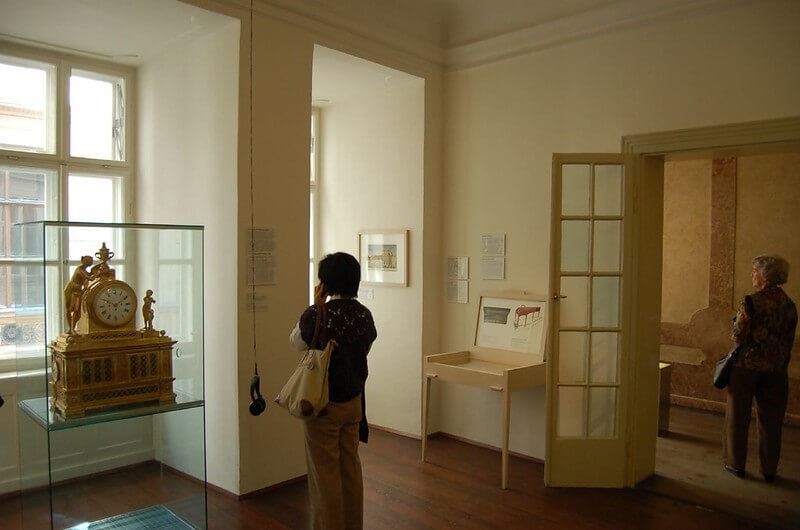
One of the best things to see in Vienna in three days for all history and classical music lovers is to visit Mozart’s Apartment at the Wien Museum. You can walk in the footsteps of this iconic, revered, and gifted musician.
Feel the ambiance of this special place, a place where Mozart once sat and wrote his world-famous music! You can even glimpse the very same views he had and feel the inspiration that came forth from it all.
The apartment has been untouched since 1787 when Mozart last lived here, and it is a true monument of the composer’s long and rich legacy.
There is also a Mozart Museum onsite that has incredible historical knowledge about the life Mozart lived in Vienna, as well as insight into his musical masterpieces.
Dive into this beautiful, significant spot and learn about one of the world’s most gifted musicians ever to grace us with his talent!
- How long should I stay here? Around 1 hour.
- Getting there: Mozart’s apartment is located very near to St. Stephens Cathedral. Stephansplatz is the nearest U-Bahn stop (Line 1 and 3).
The Belvedere Palace
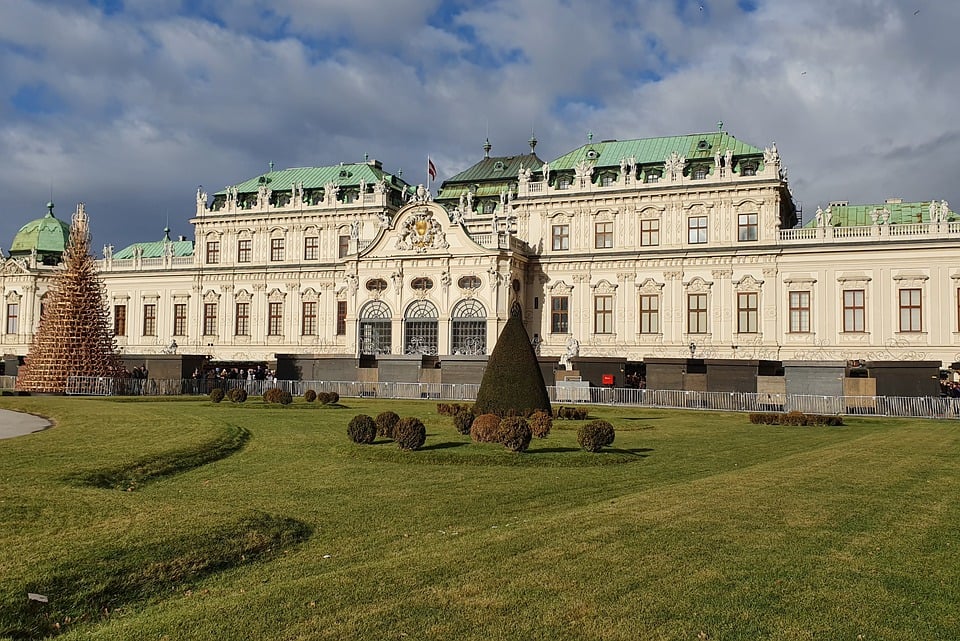
The Belvedere Palace is very similar to the Schönbrunn Palace: both are formally royal estates turned museums, both are opulently designed, and both are quite massive (though the Schönbrunn is bigger).
What The Belvedere offers that the Schönbrunn Palace does not though is one of the finest collections of art in Vienna, including one of the most hyped paintings in the modern era: The Kiss by Gustav Klimt. Considered by many to be a tour-de-force and even greater than the Mona Lisa , buying a ticket for the Belevedere Museums is worth seeing The Kiss alone.
There’s more to the Belvedere than just Klimt’s masterpiece though. The museum features other works of art by Klimt’s contemporaries and predecessors and the halls of The Belevedere itself are still remarkable. Be sure to find the Marble Hall in Upper Belvedere and then look up at the ceiling.
- How long should I stay here? 2-3 hours.
- Getting there: The D Tram will drop you off right in front of The Belvedere.
MuseumsQuartier
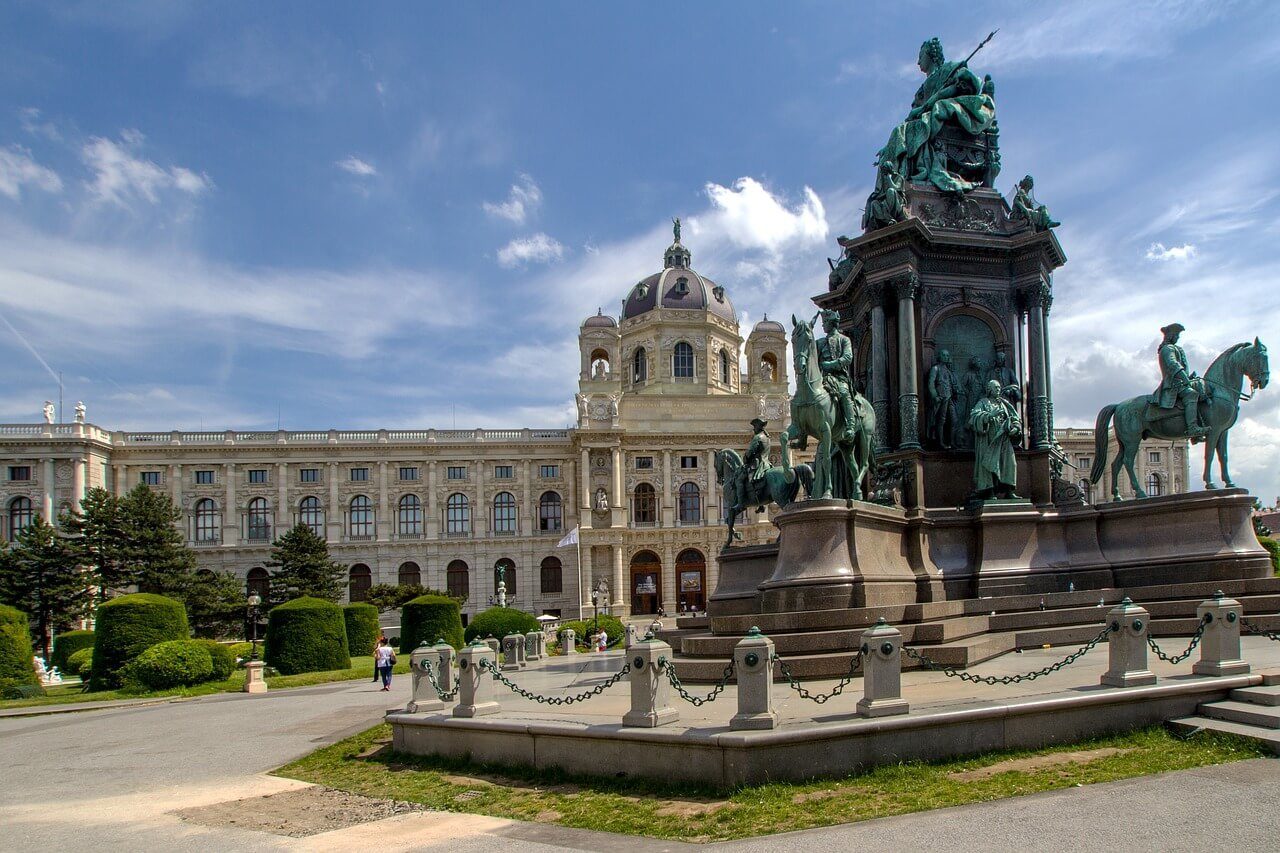
The MuseumsQuartier is a semi-enclosed area of Vienna that is made up of 4-5 different museums. It’s a good place to visit in Vienna if you want to see a couple of different exhibitions in a row without having to walk around the city.
The Leopold Museum is probably the most popular attraction in the district as it features the most impressive collections. Dedicated mostly to the modernists and the Succesionist movement, this museum features works of art from many of the greatest Viennese painters, including Schiele, Klimt, and more. The Schiele is particularly impressive and shouldn’t be missed by anyone interested in his work.
The MUMOK located across the plaza from the Leopold. This is one of the leading contemporary art museums in Vienna and features much more modern pieces from recent decades. It’s a bit more minimal and less crowded than the Leopold and is best for those who like both art and technology together.
Other institutions of note in the MuseumsQuartier are the Architekturzentrum Wien (architecture) and the ZOOM Kindermuseum (children’s).
- Cost: €20,90 for all four museums. Individual tickets vary.
- How long should I stay here? Depends on how many museums you visit.

Stash your cash safely with this money belt. It will keep your valuables safely concealed, no matter where you go.
It looks exactly like a normal belt except for a SECRET interior pocket perfectly designed to hide a wad of cash, a passport photocopy or anything else you may wish to hide. Never get caught with your pants down again! (Unless you want to…)
When traveling the world, it’s vital that you choose a time of year that suits your individual travel needs and desires. Knowing when to plan a trip to Vienna depends on what you want to see, how you want to experience it and whether or not you want to visit during peak season. Our Vienna itinerary will share some options to help you plan your trip!
Vienna has an oceanic climate, with pleasantly warm summers and icy dry winters. Peak season in Vienna is during spring and summer, with summer falling between the warm months of June to September. This is when most people flock to enjoy the good weather and get all of their sightseeing done in the sunshine.
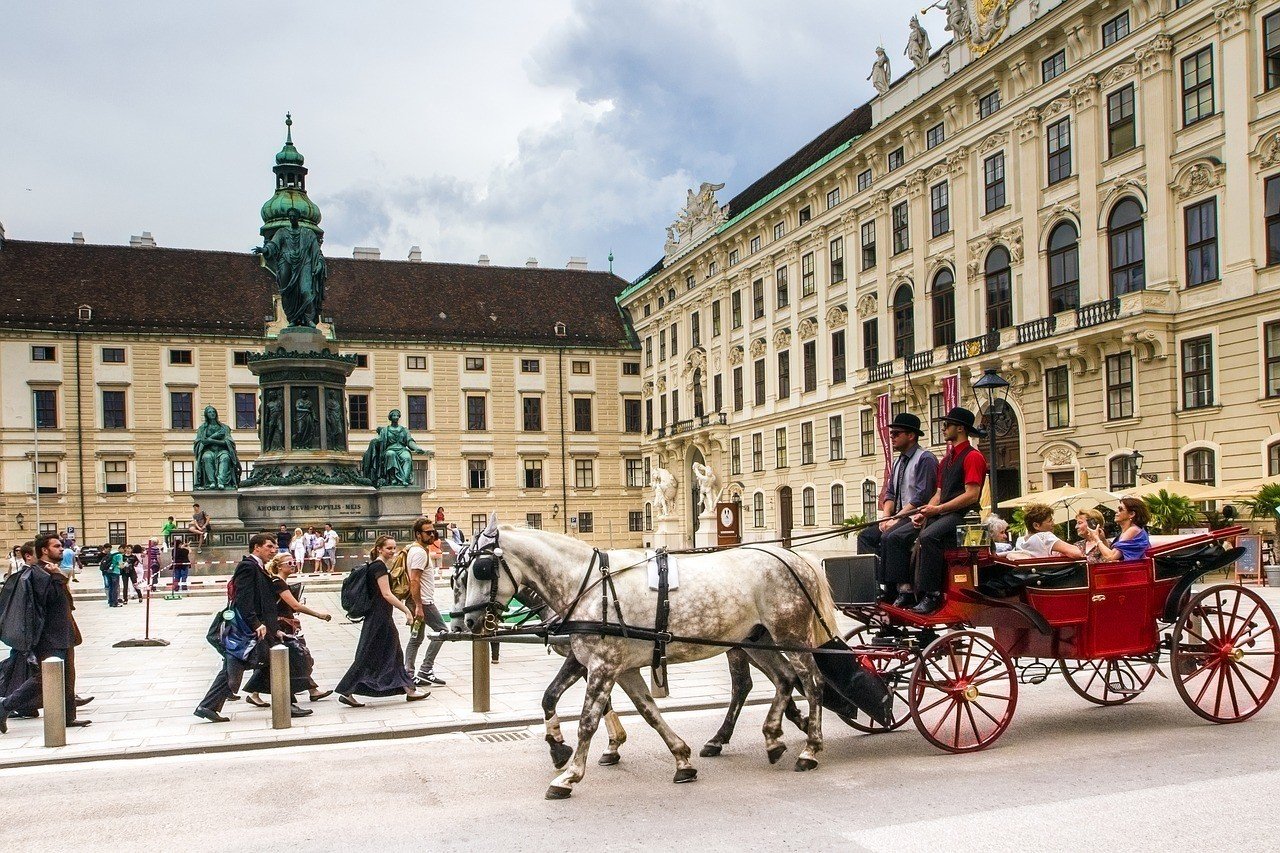
If you want to experience a winter wonderland (complete with snowfall and Christmas markets ) then visiting Vienna in December is perfect. If rainy days spent in coffee houses sounds like something you want to make the best of, then visit in June, as this is when Vienna has the most rainfall on average.
The best periods to visit Vienna are typically between April and May, or September and October. The weather is delightful and mild, with no extremes of any kind during these months. The upside of visiting during these months- as opposed to peak season- is that the prices of accommodation stay reasonable and don’t skyrocket.
Vienna has a truly impressive public transport network. Practically every part of the city is serviced by some sort of transit whether it be by bus, tram, or metro. Such connectivity makes backpacking in Vienna extremely easy.
For a city of its size, Vienna’s underground metro network is very impressive. The metro, or U-Bahn , is composed of six different lines that pretty much cover all of the top sights in Vienna . Even if you’re staying in the middle-of-nowhere Vienna like Donaustadt, you can still be in the city center in a half hour.
When using the metro, note that there are no turnstile kiosks where you would validate your ticket to gain entry BUT you still need to stamp it at a separate machine like it was back in the Industrial Fuckin’ Revolution.
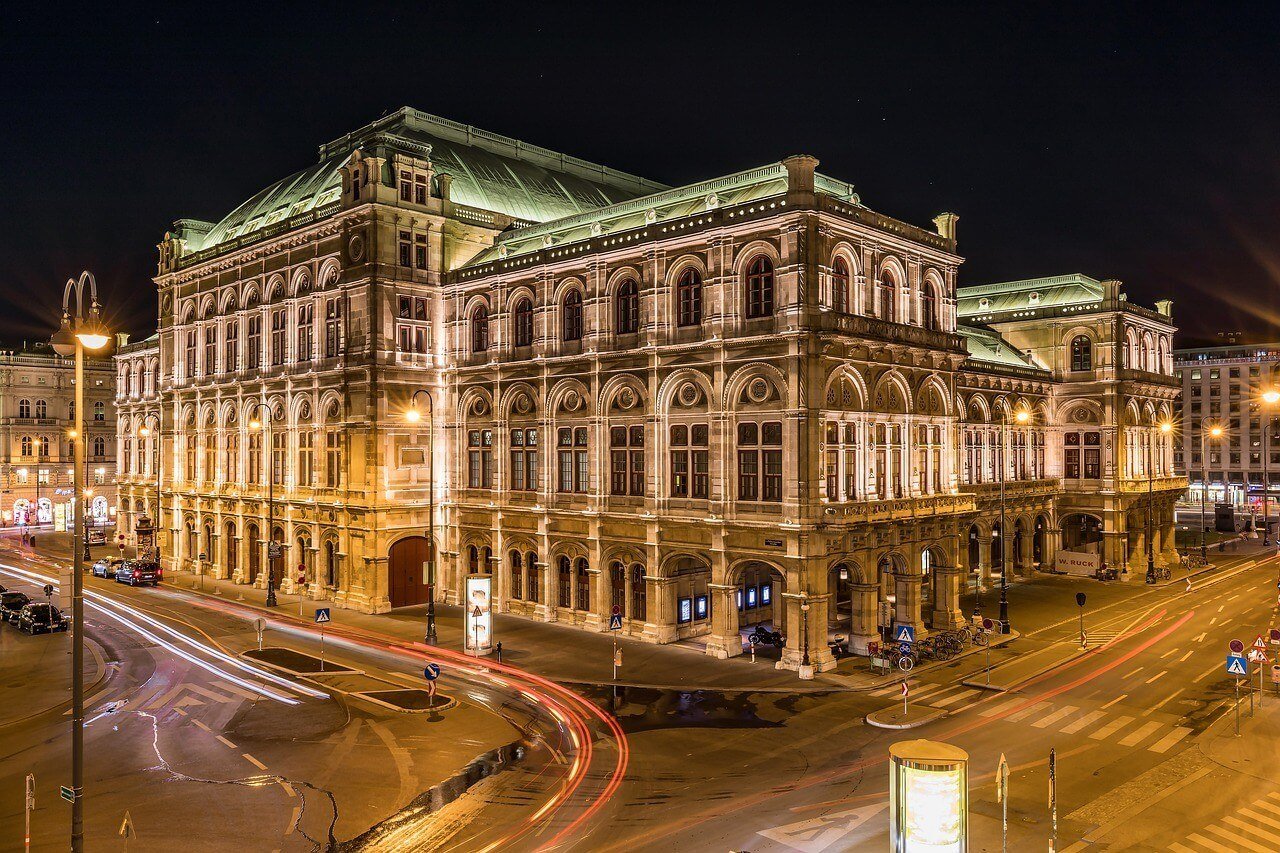
What the U-Bahn doesn’t cover, trams and buses do. The tram network extends very far out into the outer neighborhoods of Vienna -. Ottakring, Funfhaus, and Wahring all have dedicated lines. So, again, don’t feel cut-off if you’re staying further outside the city center.
At 2.40 euro, tickets for public transport are a bit on the expensive side. They’re only good for one ride as well, which is a bit annoying. Since there are very few if any places that require to show a ticket, some people take a risk and ride without one. I’ll let you make that call yourself whether or not it’s worth dodging the occasional tram cop.
If you’re spending more than three days in Vienna and think that it would be worth it, buy a transit pass. You can buy a 48-hour pass for 14.10 euros or a 72-hour pass for 17.10 euros.
Depending on when you visit Vienna, you’ll need to pack accordingly i.e. warm clothing in the winter and lighter clothing in the summer; perhaps some outdoor gear as well if you plan on going to the Austrian Alps. For information on what to pack, refer to our general backpacking packing list article.
Although Vienna is not a prime spot for crime, it is always good to know some general knowledge about keeping yourself and your belongings safe while enjoying our Vienna itinerary. In fact, Vienna is a preferred travel destination because of it’s low crime rate, so we don’t expect you will run into trouble, but it is always better to be safe than sorry.
You may come across a lot of “Mozarts” dotted around Vienna, and these are typically panhandlers trying to sell tickets to concerts or performances. To get them to back off, simply state a strong ‘no’ and move on. You should be left alone. Buy your tickets from companies directly, as you don’t want to fall prey to a scam.
While traveling in Vienna, be aware of the cyclists. The cyclists in Vienna are super fast, and it can be easy to bump into them if you don’t look where you are going. Avoid this by keeping vigilant on the roads. There is a section clearly marked on the roads for cyclists, so this isn’t a major issue, but just make sure not to veer into this section by accident.
Keep in mind all of the general safety rules, such as not leaving your belongings unattended in a public space and making sure you don’t walk around with your handbag open wide. Try to avoid walking alone at night, as it is always safer to have a trusted company with you whilst walking.
For more information about keeping safe during your travels, read our list of crucial safety tips !
Don’t Forget Your Travel Insurance for Vienna
ALWAYS sort out your backpacker insurance before your trip. There’s plenty to choose from in that department, but a good place to start is Safety Wing .
They offer month-to-month payments, no lock-in contracts, and require absolutely no itineraries: that’s the exact kind of insurance long-term travellers and digital nomads need.

SafetyWing is cheap, easy, and admin-free: just sign up lickety-split so you can get back to it!
Click the button below to learn more about SafetyWing’s setup or read our insider review for the full tasty scoop.
Find out what people want to know when planning their Vienna itinerary.
How many days are enough in Vienna?
Having 2-3 full days to explore Vienna will allow you to visit all the top attractions.
What should you include on a 3 day Vienna itinerary?
No trip to Vienna is complete without exploring these top places to visit: – Kunsthistorisches Museum – Schönbrunn Palace – Naschmarkt – Hundertwasser Apartment House
Where should you stay for a weekend in Vienna?
The Innere Stadt is the best area to stay in for a short trip. The heart of the city, it provides easy access to top attractions and is well connected to other areas.
What are the best day trips from Vienna?
Got time to explore further afield? Check out these top day trips: – Vienna Woods and Mayerling – Carnuntum – Salzburg – Hallstatt
Your trip to Vienna will be full of blissful galavanting, aesthetic scenery, unending historical knowledge, gorgeous imperial buildings, and plenty of priceless gems! Vienna has so much magic, and with our three day Vienna itinerary in hand, you will know all the best places to go and soak it all in!
The memories made on this adventure will be kept for an entire lifetime, and you will have stories to share with loved ones forever.
To make sure you can visit every hotspot, you need to have the right travel budget. Find out how expensive Vienna is , and how to use a couple of tips and tricks to keep a bit of money in your pocket. Even if you’re pushed for time then there are still some great day trips to take from Vienna too.

Share or save this post

Thank you sooooooo much for this detailed guide
Leave a Reply Cancel reply
Your email address will not be published. Required fields are marked *
Save my name, email, and website in this browser for the next time I comment.
Notify me of followup comments via e-mail.

Practical Tips for Visiting Vienna
Last Updated on February 20, 2024 by gregor
Vienna is a great city that can never disappoint. You can keep on visiting Vienna again and again and there is always something fantastic to experience, something to see that you haven’t seen before and eat food you haven’t tried yet.
The overwhelming amount of things on offer can be a real challenge for first-time visitors. That’s why everyone needs some practical tips for visiting Vienna and how to avoid mistakes when traveling to Vienna.
10 Tips Things to Know Before Visiting to Vienna For Tourists
Before any trip, it is always good to have some essential information. Check out these tips to be prepared for your trip to Vienna:
1. Weather Considerations
Planning a visit to Vienna necessitates a thorough understanding of the city’s climate. Vienna experiences a diverse weather pattern throughout the year, with warm summers and cold winters. To make the most of your trip, consider the best times to visit, factoring in your preferred weather conditions. Spring and fall are generally mild, offering pleasant temperatures for outdoor exploration.
2. Currency and Payments
Navigating Vienna’s financial landscape requires knowledge of the Euro, the official currency. Understanding the basics of Euro denominations and coin values facilitates seamless transactions. Additionally, weigh the pros and cons of using cash versus cards. While many places accept cards, having some cash on hand is advisable, especially in smaller establishments.
3. Language Tips
German is the predominant language in Vienna, and while many locals speak English, learning a few basic German phrases enhances your travel experience. Polite greetings, common expressions, and simple questions go a long way in fostering positive interactions with locals. Embracing the local language adds a personal touch to your journey.
4. Transportation Efficiency
Efficient transportation is key to exploring Vienna with ease. Understanding the city’s public transport system, including buses, trams, and the U-Bahn (subway), is crucial. Consider acquiring the Vienna Card for added convenience, offering unlimited public transport and discounts on various attractions. This not only saves money but also simplifies your travel logistics.
5.Navigating the City
Vienna boasts several walkable districts, allowing you to immerse yourself in its charm on foot. Strolling through the historic Innere Stadt or exploring the trendy Neubau district offers a unique perspective. Additionally, consider renting a bike for a more active exploration, providing flexibility and a chance to cover more ground.
6. Cultural Etiquette
Respecting local customs is essential for an enriching travel experience in Vienna. Familiarize yourself with Austrian traditions and etiquette to engage respectfully with the local culture. When visiting cultural sites, adhere to attire guidelines, especially in places of worship or formal settings. This ensures a seamless and respectful interaction with Vienna’s rich heritage.
7. Dining Dos and Don’ts
Vienna’s culinary scene is a treat for food enthusiasts. Dive into local delicacies such as Wiener Schnitzel and Sachertorte. Understanding dining etiquette, such as making reservations and tipping practices, enhances your gastronomic experience. Embrace the city’s café culture, savoring delightful pastries while enjoying the relaxed ambiance.
8. Museums and Attractions
Vienna’s rich cultural heritage is reflected in its museums and attractions. Plan your visit strategically by exploring ticket options and potential discounts. Consider whether guided tours or self-exploration aligns better with your preferences. Engaging with Vienna’s history and art in a way that suits your interests ensures a fulfilling experience.
9. Safety Measures
Prioritizing safety is paramount when visiting any city. Familiarize yourself with secure travel practices, such as safeguarding valuables and being aware of your surroundings. Keep emergency contacts and local services handy, ensuring a swift response in case of unforeseen situations. This proactive approach enhances your overall peace of mind during your stay.
10. Souvenir Shopping
Souvenir shopping allows you to take a piece of Vienna’s charm home with you. Seek out authentic keepsakes, such as handmade crafts or local specialties, to capture the essence of your visit. When bargaining, approach it with a friendly demeanor, respecting local customs. This not only ensures fair transactions but also creates positive interactions with local vendors.
As seen above, Austria uses the Euro therefore, if you need to change currency, be aware of the exchange rates. The official language in Austria is German , and even though most people can communicate in English, it is always useful to learn a few words or phrases. Some of them are danke, meaning thank you, and bitte, meaning you’re welcome or please. Another useful tip is that in Austria, the standard voltage is 230V while the power sockets are Type F, so be sure to have the right travel adaptor.
10 Vienna Travel Tips for Tourists
Dreaming of waltzing through Vienna’s imperial streets and indulging in its rich culture? Here are 10 essential tips to make your Viennese adventure smooth and unforgettable:
1. Embrace Public Transport: Skip the car hassle! Vienna’s excellent trams, buses, and subway system make getting around a breeze. Plus, a Vienna City Card grants unlimited travel and discounts on attractions.
2. Palace Power: Vienna boasts stunning palaces like Schönbrunn and Hofburg. Explore their opulent interiors, wander through manicured gardens, and even catch a concert in a historic setting.
3. Coffee Connoisseur: Vienna’s cafe culture is legendary. Settle into a grand cafe like Cafe Central, savor a creamy “Melange” coffee, and soak up the atmosphere. Remember, pastries are for later!
4. Museum Magic: From the Kunsthistorisches Museum’s art treasures to the quirky Haus des Meeres aquarium, Vienna’s museums cater to every interest. Many offer free entry on specific days, so plan your visits accordingly.
5. Step Back in Time: Immerse yourself in Vienna’s imperial past. Visit St. Stephen’s Cathedral for breathtaking architecture, wander through the Hofburg Palace complex, and admire the grandeur of the Spanish Riding School.
6. Danube Delights: Take a cruise along the majestic Danube River for stunning cityscapes and a unique perspective. Enjoy a meal onboard or simply relax and watch the world go by.
7. Schnitzel Savvy: Don’t miss Vienna’s signature dish, the Wiener Schnitzel. Sample it at a traditional restaurant like Figlmüller, or grab a casual version from a “Beisl” (local pub).
8. Market Marvels: Immerse yourself in Vienna’s vibrant markets. Naschmarkt offers fresh produce, local delicacies, and souvenirs, while the Samstagmarkt (Saturday market) features antiques and flea market finds.
9. Park Perfection: Vienna boasts beautiful parks perfect for picnics, relaxation, or people-watching. Explore the Stadtpark, relax in the Volksgarten, or climb the Gloriette for panoramic views.
10. Waltz into the Night: Experience Vienna’s musical heritage. Attend a classical concert in a historic venue, catch an opera at the Vienna State Opera, or simply enjoy live music in a cozy bar.
Plan your Trip to Vienna?
- 🏨 Find the perfect accommodation on Booking.com
- 🎡 Book the Best Guided Tour on GetYourGuide
- 😍 Get more emotions from your trip with Tripadvisor
- 🚘 Rent a car on Rentalcars
- ✈️ Buy the cheapest flight tickets with WayAway
- 🚂 🚌 ✈️ Best prices for Train, Buses, Cars, Ferries, and flights Omio
Vienna’s Weekend Tips
Leisure and culture.
Experience Vienna’s vibrant weekend scene by exploring local markets, attending cultural events, and indulging in the city’s renowned coffeehouse culture.
Restaurants and Cafés
In Vienna, rounding up the bill or leaving a 5-10% tip is customary. Exceptional service might warrant a slightly more generous tip, but it’s not obligatory.
Here are some valuable Vienna itineraries for visiting Vienna:
- Best of Vienna in 4 hours – Layover in Vienna
- The Perfect 1-Day Vienna Itinerary
- The Perfect 2-Days Vienna Itinerary
- The Perfect 3-Days Vienna Itinerary
When visiting Vienna here is the Vienna Budget Travel Guide , Free Things to do in Vienna, Austria
Vienna Has More Amazing Museums Than Just the Belvedere Museum
The Vienna Pass isn’t only going to save you money, but also time. You won’t need to stand in the long line for every museum and you could skip the ticket line.
If you want to include other attraction in your pass you could look up Vienna pass.
Speaking of the Belvedere Museum… if you’re not an art lover and trying to go to Belvedere just to see The Kiss by Gustav Klimt: DON’T! Don’t be one of the tourists who go in, take a photo of the KISS, and leave. Most people aren’t seeing the painting, but just taking selfies with it.
Here is a List of the Best Museums in Vienna
St. stephens cathedral isn’t a very glamorous experience.
Almost everyone is dreaming of getting to the St. Stephens Cathedral in Vienna. But the moment you start approaching the tower you might realize that it’s not very romantic, as it’s surrounded by a ton of visitors and annoying vendors. The place is crowded, and lines take forever no matter when you visit.
Similar to the Effile Tower in Paris,going to the top of the tower is not worth it. I mean you probably want to see a panorama of Vienna with the actuall St.Stephens Cathedral.
I recommend you to see the city from up high from the top here are the Best Views of Vienna, Austria
Stay only in the City Center of Vienna
I cannot emphasize this more! Pinning down the perfect place to stay depends on budget and location, but quite often the second one is way more important than you think. Vienna is divided into 23 districts and nearly everything is referred to as the 1st district
Before booking your hotel check whether the area is safe and close to the places you want to visit. If you’re in Vienna for a minimal time don’t choose a place on the edge of town, as you definitely don’t want to spend hours commuting to save a few bucks.
Viennese Eat Dinner Time
Viennaians tend to eat dinner early around 6:00 or 8:00 PM. Many good restaurants won’t serve dinner after 10:00ish PM. If you’re planning some Michelin star dining keep in mind that places are booked weeks in advance, especially in the summer and Christmas time. Please refer to my Vienna Food Guide to learn everything about Viennese Food, like Wiener Schnitzel and Sacher Cake
Don’t Think That Vienna is a City Just for Lovers
Many romantic comedies portray Vienna as the city for lovers, with boyfriends proposing in front of the Sisi Chapel and taking girls on romantic walks along the Danube River.
Here are the Most Romantic Things to do in Vienna . Please have a look at this Blog article
Solo Travel to Vienna Tips
Vienna is a great place to travel solo , as you can people-watch and appreciate everything in a different way than you would with your partner. You can also easily meet people in Vienna too as there are many solo travelers in the city and many families as well – my kids have a blast every time they go!
Here is the Blog Post about Vienna Solo Traveler Tips – Top Things to Do and See
Vienna Has More Awesome Coffee Houses than the Cafe Central & Cafe Sacher
Cafe Central is definitely the most iconic Coffee House in Vienna. Especially in the summertime, there are often long waiting lines and the Cafe Central is mostly crowded. There are several other Coffee Houses that offer you a traditional Viennese Coffeehouse experience, including great Viennese Coffee and delicious cakes.
Here is the selection of the Best Coffee Houses in the City Center of Vienna .
Most Viennese People are on vacation in July/August
Viennese people are used to going on vacation in the summer months of July and August and as a result. Tourist attractions are obviously open and very full of people because of the summer, but many local small shops , private stores, and small local restaurants might be closed.
If you’re opting for a mixture of local and tourist experiences, it might not be the right time to visit Vienna in July or August. Personally, I’m not the biggest fan, as I like to interact with locals anywhere I go.
Dedicate a Whole Day to Schönbrunn & Belvedere Palace+ Don’t Go Without a Skip-the-Line Ticket
Schönbrunn Palace and Belvedere Place are incredible places to visit outside the City Center of Vienna. However, especially if you’re visiting Vienna during the summer the palace can get VERY busy.
Combining two places (for instance Schönbrunn & Belvedere) in one day may seem tempting price-wise, but it’s not the best idea. You’ll be rushing and running (literally!) through everything and only get frustrated. Don’t try to do everything and prioritize what you want to do.
I suggest you allow yourself a full day to explore Schönbrunn and purchase skip-the-line tickets , its gardens, and especially the Gloriette. It’s a great place that can’t be missed and you don’t want to be rushed through it.
Please refer to my Schönbrunn Palace Travel Guide :
Belvedere Palace
The second palace you need to see is the Belvedere, it is a grand place and said to be the most visited tourist spot in Vienna. Built back in 1712-23, by Johann Lucas von Hildebrandt.
This masterpiece is considered to be one of his best works. While the place served as a summer home to Prince Eugene of Savoy, it is now open for everyone to explore. Said to be one of Europe’s most important museums, it has a great deal to offer. One that is sure to take hours of your day.
Book your ticket here: Entrance Tickets for Belvedere
Vienna is one of the greatest cities on earth. if you follow my tips for visiting Vienna and do it the right way, you should have a great experience. it will make you want to come back for more!
Frequently Asked Questions (FAQS)
Metro in Vienna (U-Bahn) is very easy and safe to use. It might be slightly intimidating at first due to the huge amount of different lines, but once you figure it out you’ll use it all the time. Keep your Vienna metro ticket until you’ve exited the metro system at your final destination because the police might be checking your tickets inside the station. there are ticket machines at most underground stations points of advance sale Tobacconists also sell tickets Onboard the tram at an increased rate of EUR 2.60 per ticket Buy tickets online: Wiener Linien Online Shop On many Metro lines, the doors to the train do not open unless you press a button or lift a handle. Remember it if you don’t want to miss your station or look funny. My tip: While taxis in Vienna are expensive, Uber & Bolt are definitely affordable and I recommend doing it at least once so you can see Viennaian streets during your ride. Just don’t try to take it to the airport as it would take longer than the train and cost you 5 times as much… on top of getting stuck in traffic for a very long time.
Vienna stands out as an ideal destination for a city break, offering a perfect blend of relaxation and cultural exploration. Its compact layout allows visitors to efficiently explore key attractions, making it feasible to experience the city’s essence even with a short visit.
Vienna, the capital of Austria, is undeniably worth visiting for its rich cultural heritage, historical significance, and artistic contributions. The city stands as a testament to centuries of imperial grandeur, musical excellence, and architectural marvels. Vienna’s cityscape seamlessly blends historic landmarks like Schönbrunn Palace and St. Stephen’s Cathedral with modern cultural spaces and a vibrant arts scene. The city’s museums, concert halls, and coffeehouses collectively create an immersive and captivating experience.
Absolutely! Picking the perfect spot for your first Viennese adventure depends on your personal preferences and priorities. Here’s a breakdown of some popular areas to consider: For the history buff: Innere Stadt (1st district): Immerse yourself in the heart of Vienna’s historical core. Explore iconic landmarks like St. Stephen’s Cathedral, Hofburg Palace, and the Spanish Riding School, all within walking distance. Bustling atmosphere, but expect higher accommodation prices. For the museum enthusiast: MuseumsQuartier (7th district): Modern art lovers, rejoice! This vibrant district houses MUMOK, Leopold Museum, and Kunsthalle Wien, along with trendy cafes and bars. Lively and youthful, with good public transport connections. For the budget-conscious traveler: Neubau (7th district & 8th district): Home to charming cafes and vintage shops, this area offers a mix of budget-friendly guesthouses and modern apartments. Close to the MuseumsQuartier and Neubaugasse shopping street. For the foodie: Naschmarkt (5th district): Immerse yourself in Vienna’s culinary scene at this bustling market offering fresh produce, local delicacies, and international flavors. Lively and multicultural, with excellent public transport connections. For the relaxed explorer: Josefstadt (8th district): Escape the crowds and enjoy a peaceful stay in this elegant district known for its beautiful squares and Baroque architecture. Family-friendly, with parks and playgrounds nearby. For the panoramic views: Grinzing (19th district): Nestled in Vienna’s outskirts, this charming wine village offers stunning views of the city and a laid-back atmosphere. Perfect for day trips and enjoying local vineyards. Remember, Vienna is a relatively compact city, so getting around is easy regardless of where you stay. Consider your priorities, browse accommodation options, and start planning your unforgettable Viennese adventure!
The ideal length of your Vienna stay depends on your travel style and interests, but here’s a quick guide: 2-3 days: Perfect for a whirlwind tour of the city’s highlights, including iconic landmarks like Schönbrunn Palace and Hofburg Palace, exploring charming neighborhoods, and indulging in the cafe culture. 4-5 days: Allows you to delve deeper into specific interests, like visiting multiple museums, attending a concert or opera, taking a day trip to nearby attractions like the Danube Valley, or simply relaxing and soaking in the atmosphere. 6+ days: Ideal for a truly immersive experience, exploring hidden gems, venturing off the beaten path, and enjoying a leisurely pace. You could even consider day trips to nearby cities like Salzburg or Budapest. Ultimately, the best way to decide is to consider your priorities and preferences. If you’re short on time, 2-3 days will give you a good taste of Vienna. But if you have more flexibility, you can truly discover the city’s magic at a slower pace.
Yes, Vienna is excellent for a city break! Immerse yourself in history with grand palaces, indulge in world-class museums and music, and savor delicious food and coffee. From imperial charm to modern vibrancy, Vienna offers something for everyone.
More related Vienna Travel Blog Posts
- WHAT TO BUY IN VIENNA: BEST 15 SOUVENIRS FROM VIENNA
- WHEN IS THE BEST TIME TO VISIT VIENNA, AUSTRIA
- HOW MANY DAYS DO YOU NEED TO VISIT VIENNA?
- THE BEST THINGS TO DO IN VIENNA WITH KIDS – FAMILY HOLIDAYS IN AUSTRIA
- VIENNA SOLO TRAVELER TIPS – SOLO TRAVEL GUIDE VIENNA, AUSTRIA
- BEST WAYS TO GET FROM VIENNA AIRPORT TO THE CITY CENTER
- THE TOP AUTHENTIC VIENNESE EXPERIENCES YOU MUST ENJOY WHEN IN VIENNA, AUSTRIA
- VIENNA BUDGET TRAVEL GUIDE, FREE THINGS TO DO IN VIENNA, AUSTRIA IN 2022
- 15 BEST FOOD TOURS IN VIENNA, AUSTRIA – UPDATED 2022/23
- BEST LUXURY BOUTIQUE HOTELS IN VIENNA
How many days do you need to visit Vienna?
Vienna – best things to do in summer.


Vienna Travel Tips: The Ultimate Guide To Exploring The City
Share this post!

Planning your first trip to Vienna and feeling overwhelmed with everything to consider? It’s one of my favorite cities in the world, and even though it’s huge if you follow a few Vienna travel tips, you’ll have a great time.
Here are a few things I’ll cover in the article:
- The best time to visit Vienna
- How to navigate the city safely
- The must-try foods for an authentic taste of Vienna
- How to use the public transportation in Vienna
Keep reading to make sure your trip to Vienna is the best one yet! (All thanks to these fantastic travel tips)
Last updated: June 18, 2024
Published: December 16, 2023
Some links on this page are affiliate links , meaning I may earn a commission if you click the link or make a purchase through the link. This is at no extra cost to you. This compensation may impact how and where links are placed on this site.
Looking for more Austria travel?
- Tours from Vienna to Hallstatt
- Vienna IG captions
- Vienna Travel Tips
Table of Contents
When Should You Visit Vienna?

Timing can be everything when planning a visit to Vienna. The city has different seasons, each offering something unique and having pros and cons to visiting. Choosing the right season to visit Vienna will help make sure you have a fantastic trip.
Here are the three options you have for visiting Vienna:
- Shoulder season : Spring (March to May) and fall (September to November) are the shoulder seasons in Vienna. If you visit during these months, you will have mild weather and fewer crowds, perfect for both indoor and outdoor exploration.
- High season : The high season of summer (June to August) brings lively festivals and open-air concerts, though it also means higher prices and more tourists.
- Low season : Winter in Vienna (December to February) transforms the city into a festive wonderland, with Christmas markets and New Year celebrations. The city is busy during the holidays but slows down afterwards. You will just have to stay bundled up and find indoor activities to escape the cold.
There is no bad time to visit Vienna; you can find fun things to do in any weather. However, consider what you want to do the most, whether that’s visiting museums, Christmas markets or spending time outside. Then you should have a good idea of the best time to visit Vienna.
Travel Tips For Staying Safe In Vienna

Vienna is renowned for its high safety standards. Still, it’s essential to remain vigilant as you would in any major city. Below, you’ll find some safety travel tips for Vienna to ensure your visit is both safe and enjoyable.
- Common Tourist Scams to be Aware Of: Be cautious of individuals who may try to distract and pickpocket you, especially in crowded areas. Keep your belongings zipped up and in front of you in crowded squares, public transportation, and Christmas markets.
- Emergency Numbers and Helpful Resources: Call 112 if you need immediate help, which is the European emergency number. For non-emergency police assistance, you can dial 133; if you need medical assistance, 144 is the number to call. It’s also a good idea to keep the address and contact number of your country’s embassy and your accommodations with you.
By staying aware of your surroundings and taking the same precautions you would in any urban environment, you will have a safe and fun stay in Vienna.
Foods To Try In Vienna

One of the best parts of traveling is trying all the food in new places. Vienna doesn’t disappoint when it comes to food, as there are many local Austrian dishes you can’t miss.
Below, find essential travel tips for Vienna to satisfy any foodie, with all the foods and restaurants you must try in Vienna.
- Schnitzel: A classic Austrian dish, the Wiener Schnitzel is a must-try. This breaded and fried veal cutlet will tantalize your taste buds and is best enjoyed at traditional Viennese restaurants.
- Sachertorte: For those with a sweet tooth, the storied Sachertorte is a decadent chocolate cake with a layer of apricot jam. Visit the iconic Hotel Sacher to try the original cake, or find it elsewhere in the city.
- Apfelstrudel: This apple strudel, often served with a dusting of powdered sugar, is perfect at one of Vienna’s coffee shops.
- Tafelspitz: Indulge in Tafelspitz, a traditional boiled beef in broth, served with horseradish and roasted potatoes, for a glimpse into the old-world Austrian fare.
- Viennese Coffee: The coffeehouse culture in Vienna is UNESCO-listed for its cultural significance. Take your time and enjoy a Melange, Vienna’s version of cappuccino, in a historic café.
- Heuriger : Visit a traditional Viennese wine tavern, known as a Heuriger, to sample local wines alongside a buffet of Austrian appetizers.
As you explore Vienna, you’ll find many other foods to try. And if you visit in December, head to a Christmas market and try Gluhwein and other yummy holiday favorites.
Travel Tips For Using Public Transportation In Vienna

Navigating a big city like Vienna might seem overwhelming. Still, with these travel tips for Vienna’s public transport system, you’ll be exploring like a local in no time. Vienna has a great public transportation network consisting of buses, trams, the U-Bahn (subway), and S-Bahn (suburban trains).
- Public Transport Network: Vienna’s public transport is operated by Wiener Linien. The U-Bahn is the most convenient way to travel for most tourists due to its speed and network spanning the city’s main attractions.
- Tickets and Passes: You can purchase single tickets, but if you stay longer, consider a 24, 48, or 72-hour pass. The Vienna Card offers unlimited travel and discounts on many tourist attractions. Tickets can be purchased at machines in stations, online, or via the Wiener Linien app.
- Cultural Tip: Validate your ticket before boarding to avoid fines. Slip your ticket into the machines on tram platforms and at the entrance of the subway stations.
- Late-night transportation: Trams and buses run less frequently at night. However, the night subway service is available on weekends and before public holidays, providing safe and convenient late-night travel.
- Apps and Resources: Consider using apps like ‘ Google Maps ‘ for live updates and assistance with route planning to smooth out your travel experience. You can download the maps for offline use, so you always know where you’re going.
With these tips, Vienna’s public transportation system will take you all over the city, giving you plenty of time to explore.
Enjoy Your Trip To Vienna!

No matter when you go to Vienna or what foods you eat there, you’ll fall in love with the city just like I did.
Thanks to these travel tips for Vienna, you’re ready to have a safe and easy trip to Vienna. Prost!
Heading to Austria soon? Here are the resources I use to plan every trip:
- Top travel credit cards
- SafetyWing for travel insurance
- Daily Drop for daily travel tips and tricks in one fun, short newsletter
- Booking.com for a huge variety of hotels, vacation rentals, flights, and more
- HostelWorld for the best hostels around the world
- Vrbo for vacation homes and rentals
- FareDrop and Going for cheap flight alerts
- Skyscanner for the cheapest flights
- Amazon for travel and packing must-haves
- Priority Pass for airport lounge access
- TripAdvisor for the top hotels around the world
Click for the top hotel deals!
Vienna Travel Tips FAQs
What is the best way to get around vienna.
The best way to get around Vienna is through its efficient and extensive public transportation network, which includes the U-Bahn (subway), S-Bahn (suburban trains), trams, and buses. Using a multi-day travel pass can offer unlimited access and is cost-effective. Additionally, Vienna is pedestrian-friendly, and renting a bicycle is another popular option for experiencing the city up close.
Do I Need To Speak German To Visit Vienna?
While German is the official language, visitors do not necessarily need to speak German to visit Vienna. English is widely spoken, especially within the tourism industry, and many signs and menus are available in English. However, learning a few basic German phrases can be appreciated by locals and enhance your overall experience.
Is Vienna A Good Destination For Families With Children?
Yes, Vienna is a fantastic destination for families with children. The city offers numerous fun attractions for people of all ages, such as the Prater amusement park, Schönbrunn Zoo, and the Haus des Meeres aquarium. Additionally, many museums have interactive exhibits designed for children, making Vienna a fun and educational destination.
Can You Drink Tap Water In Vienna?
Tap water in Vienna is of excellent quality and is safe to drink. It comes directly from the Alps through pipelines, providing fresh and clean drinking water. Carrying a refillable water bottle is an environmentally friendly and convenient way to stay hydrated while exploring the city.
Privacy Overview
Privacy Policy - Terms and Conditions
Vienna Travel Guide
Book your individual trip , stress-free with local travel experts
Select Month
- roughguides.com
- Travel guide
- Local Experts
- Travel Advice
Accommodation
Plan your tailor-made trip with a local expert
Book securely with money-back guarantee
Travel stress-free with local assistance and 24/7 support
Most people visit VIENNA (Wien) with a vivid image in their minds: a romantic place, full of imperial nostalgia, opera houses and exquisite cakes. Even so, the city can overwhelm with its eclectic feast of architectural styles, from High Baroque through the monumental imperial projects of the late nineteenth century, to the decorative Jugendstil (Art Nouveau) style of the early twentieth, used to great effect on several of the city’s splendid U-Bahn stations.
The Belvedere
Drinking and nightlife, entertainment, the hofburg, kärntnerstrasse and graben, the kunsthistorisches museum, the museumsquartier, the ring and rathausplatz, the secession, stephansdom, vienna’s heurigen.
Vienna became an important centre in the tenth century, then in 1278 the city fell to Rudolf of Habsburg, but didn’t become the imperial residence until 1683. The great aristocratic families flooded in to build palaces in a frenzy of construction that gave Vienna its Baroque character. By the end of the Habsburg era the city had become a breeding ground for the ideological passions of the age, and the ghosts of Freud, Klimt and Schiele are now some of the city’s biggest tourist draws.
WHAT TO SEE AND DO
Central Vienna is surprisingly compact, with the historical centre, or Innere Stadt, just 1km wide. The most important sights are concentrated here and along the Ringstrasse – the series of traffic- and tram-clogged boulevards that form a ring road around the centre. Efficient public transport allows you to cross the city in less than thirty minutes, making even peripheral sights, such as the monumental imperial palace at Schönbrunn , easily accessible. However, for all the grand palaces and museums, a trip to Vienna would not be complete without spending a leisurely afternoon over a creamy coffee and a piece of cake in one of the grand, shabby-glamorous coffeehouses for which the city is famous.
Travel ideas for Austria, created by local experts
_listing_1640546826392.jpeg)
Capitals of Europe - Berlin, Prague, Vienna and more
This trip is ideal for all city & culture lovers: the Reichstag in Berlin, the castle in Prague, historical Cesky Krumlov, St Stephen's Cathedral in Vienna, the fortress above Salzburg and Schloss Neuschwanstein near Munich - these are just some of the highlights of this incredible roundup trip.
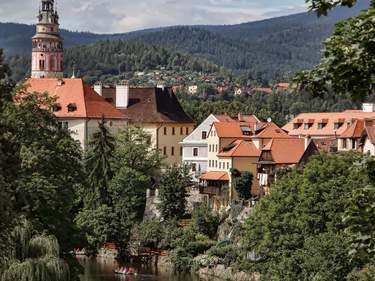
Castles across Austria and Czechia
Austria and Czechia are home to some of the world's most beautiful architecture and culture gems, such as Schloss Schönbrunn in Vienna, Prague castle, the fortress above Salzburg and many more. Finish your tour with a visit to Schloss Neuschwanstein before flying out of Munich.
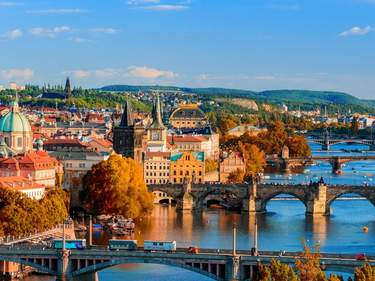
Exclusive trip to Prague and Austria
Explore the main highlights of Central Europe: fascinating Prague & historical Cesky Krumlov, the highlights of Vienna, Salzburg and Innsbruck in Austria and then further on to Germany - get in the Disney spirit at Schloss Neuschwanstein.

Danube capitals
Keen to explore three of Europe's capital cities but short on time? This three-country trip allows you to visit Vienna, Bratislava and Budapest, three remarkable capital cities with a wealth of history and culture at your fingertips.

Oktoberfest in Germany & Beer culture in Austria & Czechia
Oktoberfest is a 2-week festival held in Munich/Germany. The first weekend of October is traditionally the last weekend of the festival, so plan accordingly. Before or after, head to Austria and Czechia for some more insights in to European beer culture.

Remarkable European capitals: Prague, Vienna, Budapest
Start your trip in Czechia before moving on to Austria and then Hungary. Spend 3 nights each in Prague and Budapest, as well as 4 in Vienna to explore not only the capital cities but the surroundings like Salzburg, Cesky Krumlov and the Balaton Lake.
For cheaper accommodation booking ahead is essential in summer. Several hostels are near the Westbahnhof, which is an easy few stops into the centre.
South of the Ringstrasse, the Belvedere (daily 10am–6pm; Oberes €14, combined ticket €20; tram #D from the opera house) is one of Vienna’s finest palace complexes. Two magnificent Baroque mansions face each other across a sloping formal garden. The loftier of the two, the Oberes Belvedere, has the best concentration of paintings by Klimt in the city, including The Kiss, while the Unteres Belvedere and Orangerie show temporary exhibitions.
For a bar crawl or live music the string of clubs under the railway arches around U Thaliastr, Josefstädterstr. and Alser str. are a good bet, while in summer beach bars line the Donaukanal.
The local listings magazine Falter ( w www.falter.at ) has comprehensive details of the week’s cultural programme. The tourist office also publishes the free monthly Programm .

Hofburg palace on St. Michael square (Michaelerplatz), Vienna, Austria © Mistervlad/Shutterstock
A block southeast of Graben is the immense, highly ornate Hofburg palace , housing many of Vienna’s key imperial sights. Skip the rather dull Kaiserappartements in favour of the more impressive Schatzkammer (Mon & Wed–Sun 9am–5.30pm; €12), where you’ll see some of the finest medieval craftsmanship and jewellery in Europe, including relics of the Holy Roman Empire and the Habsburg crown jewels. The Hofburg is also home to two of Vienna’s most enduring tourist images: singing boys and prancing horses. Steps beside the Schatzkammer lead up to the Hofmusik Kapelle (Mon & Tues 10am–2pm, Fri 11am–1pm; free), where the Vienna Boys’ Choir sings Mass (mid-Sept to June Sun 9.15am; t 01 533 99 27): you can obtain free, standing tickets from 8.30am (otherwise €10–36; book in advance).
On the north side of the Hofburg, the imperial stables are home to the white horses of the Spanish Riding School , known for their extraordinary, intricate performances. There are three main ways to see them: book a performance well in advance (mid-Feb to mid-June & mid-Aug to Dec, usually Sat & Sun at 11am, occasionally Fri & eves; standing from €25, seats from €50); attend a morning exercise session (10am–noon: April–June, Sept & Oct Tues–Fri; Nov–March & Aug Tues–Sat; tickets for exercise session and tours from Michaelerplatz visitor centre Tues–Sun 9am–4pm; €15); or join a guided tour
of the school and stables (March to mid-June & Aug to mid-Dec daily, otherwise 5–6 days per week; tours 2pm, 3pm & 4pm; tour €18; combined tour and training session €31). Alternatively, if you just want to take a peek at the horses, look into the stables (Stallburg) from the glass windows on Reitschulgasse.
Finally, at the Hofburg’s southeastern tip, the Albertina (daily 10am–6pm, Wed till 9pm; €12.90) houses one of the world’s largest graphic art collections, with works by Raphael, Rembrandt, Dürer and Michelangelo.
Though one of Vienna’s prettiest little squares, Judenplatz , northwest of Stephansdom, is dominated by a deliberately bleak concrete Holocaust Memorial by British sculptor Rachel Whiteread. The square marks the site of the medieval Jewish ghetto and you can view the foundations of a fourteenth-century synagogue at the excellent Museum Judenplatz at no. 8 (Mon–Thurs & Sun 10am–6pm, Fri 10am-5pm; €10), which brings something of medieval Jewish Vienna to life. The ticket includes entrance to the intriguing Jüdisches Museum of Jewish tradition and culture, at Dorotheergasse 11 to the south of Stephansplatz (Mon–Fri & Sun 10am–6pm).

Stephansplatz, Vienna © Shutterstock
From Stephansplatz, pedestrianized Kärntnerstrasse runs south past street entertainers and shops to the illustrious Staatsoper , opened in 1869 in the first phase of the Ringstrasse’s development. A more unusual tribute to the city’s musical genius is the state-of-the-art Haus der Musik , Seilerstätte 30, (daily 10am–10pm; €13), a hugely enjoyable museum of sound.
Running west of Stephansplatz is the more upscale Graben, featuring an extremely ornate plague column ( Pestsäule ), built to commemorate the 1679 plague.
Of all Vienna’s museums, the Kunsthistorisches Museum on Burgring still outshines them all (June–Aug daily 10am–6pm, Thurs till 9pm; Sept–May Tues–Sun 10am–6pm, Thurs till 9pm; €15). It’s one of the world’s greatest collections of Old Masters – comparable with the Hermitage or Louvre. Highlight is an unrivalled collection of sixteenth-century paintings by Brueghel the Elder, while the Peter Paul Rubens collection is also very strong and works by Vermeer and Caravaggio are worth seeking out. A number of Greek and Roman antiquities add breadth and variety. Set aside several hours at least: there is also an excellent café.
On the Ring’s eastern section, beyond Stubenring, is the enjoyable MAK (Tues 10am–10pm, Wed–Sun 10am–6pm; €9.90, free Tues 6–10pm), an applied arts museum whose eclectic collection spans the Romanesque period to the twentieth century and includes an unrivalled Wiener Werkstätte collection.
Southwest of the Ring is Vienna’s MuseumsQuartier, a collection of museums and galleries in the old imperial stables, where the original buildings are enhanced by a couple of striking contemporary additions. Stylish outdoor seating, plenty of good cafés and an interesting calendar of events make the area a focus for Vienna’s cultural life. The best museum here is the Leopold Museum (Mon, Wed & Fri–Sun 10am–6pm, Thurs 10am–9pm; €13), with fine work by Klimt and the largest collection in the world of works by Egon Schiele.
The Ring, the large boulevard that encircles the Innere Stadt, along with its attendant monumental civic buildings, was created to replace the town’s fortifications, demolished in 1857, many of these buildings now house museums. On the western section is the showpiece Rathausplatz , a square framed by four monumental public buildings: the Rathaus (City Hall), the Burgtheater, Parliament and the Universität – all completed in the 1880s.
The biggest attraction in the city suburbs is the imperial summer palace of Schönbrunn (U4 to Schönbrunn), designed by Fischer von Erlach on the model of residences like Versailles. To visit the palace rooms or Prunkräume (daily: April–June, Sept & Oct 8.30am–5pm; July & Aug 8.30am–6pm; Nov–March 8.30am–4.30pm) there’s a choice of two tours: the “Imperial Tour” (€13.30), which takes in 22 state rooms, and the “Grand Tour” (€16.40 with audioguide, €19.40 with tour guide), which includes forty rooms. The shorter tour misses out the best rooms – such as the Millions Room, a rosewood-panelled chamber covered from floor to ceiling with wildly irregular Rococo cartouches, each holding a Persian miniature watercolour. The palace gets unbearably overcrowded at the height of summer, with lengthy queues, so buy tickets in advance online. The splendid Schlosspark (daily 6.30am–dusk; free) is dotted with attractions, including the Gloriette – a hilltop colonnaded monument, now a café and terrace with splendid views (terrace daily: mid-March to June, Sept & Oct 9am–6pm; July & Aug 9am–7pm; late Oct to early Nov 9am–4pm; €3.60), fountains, a maze and labyrinth (same hours as Gloriette; €5.20) and Vienna’s excellent Tiergarten or zoo (daily: Jan, Nov & Dec 9am–4.30pm; Feb 9am–5pm; March & Oct 9am–5.30pm; April–Sept 9am–6.30pm; €18.50).

Schönbrunn, Vienna © Shutterstock
The eccentric, eye-catching building crowned with a “golden cabbage” by Karlsplatz is the Secession building (Tues–Sun 10am–6pm; €9.50), built in 1898 as the headquarters of the Secessionist movement, whose aim was to break with the Viennese establishment and champion new ideas of art and aesthetics. Designed by Joseph Maria Olbrech, the gallery was decorated by several luminaries of the group, including their first president Gustav Klimt. It still puts on contemporary exhibits today, with Klimt’s Beethoven Frieze downstairs the only permanent artwork.
Mariahilferstr. is best for high-street clothes shops and the big chains, though Neubaugasse, nearby, is more eclectic.
The obvious place to begin exploration is Stephansplatz , the pedestrianized central square dominated by the hoary Gothic Stephansdom (Mon–Sat 6am–10pm, Sun 7am–10pm, except during services; free, but entry fees to most sections, combined ticket €17.90). It’s worth paying to explore the interior more fully, with the highlights of the main section (English tours Mon-Sat 10.30am; €5.50) the Wiener Neustädter Altar, a late Gothic masterpiece, and the tomb of the Holy Roman Emperor Friedrich III. The catacombs (tours every 15–30min, Mon–Sat 10–11.30am & 1.30–4.30pm, Sun 1.30–4.30pm; €5.50) contain the entrails of illustrious Habsburgs housed in bronze caskets. Stellar views reward those climbing the 137m-high (343 steps) south spire; (daily 9am–5.30pm; €4.50). Lower, but with a lift, is the north tower (same hours; €5.50). The warren of alleyways north and east of Stephansdom preserves something of the medieval character of the city, although the architecture reflects centuries of continuous rebuilding.
To sample Austrian wines on a scenic excursion, visit one of the wine-producing villages on Vienna’s outskirts. To the north of the Danube, Stammersdorf (tram #31 from Schottenring; 36min) is surrounded by vineyards and filled with traditional, family-run Heurigen (wine taverns).
Wienhof Wieninger 21 Stammersdorferstr A great place to start, with a pleasant garden, good-value meals (from around €8) and an excellent selection of whites available by the glass (from €1.55). Mid-March to April Fri 3pm–midnight, Sat & Sun noon–midnight, May to mid-Dec Thurs & Fri 3pm–midnight, Sat & Sun noon–midnight.
Discover more places in Austria

- Travel Guide Morocco
- Travel Guide Namibia
- Travel Guide South Africa
- Travel Guide China
- Travel Guide India
- Travel Guide Indonesia
- Travel Guide Japan
- Travel Guide Laos
- Travel Guide Malaysia
- Travel Guide Myanmar (Burma)
- Travel Guide Nepal
- Travel Guide Philippines
- Travel Guide Singapore
- Travel Guide South Korea
- Travel Guide Sri Lanka
- Travel Guide Taiwan
- Travel Guide Thailand
- Travel Guide Australia
- Travel Guide Fiji
- Travel Guide New Zealand
- Travel Guide Belize
- Costa Rica Travel Guide
- Travel Guide Cuba
- Travel Guide Guatemala
- Travel Guide Honduras
- Travel Guide Jamaica
- Travel Guide Nicaragua
- Travel Guide Panama
- Puerto Rico travel guide
- Travel Guide Trinidad and Tobago
- Travel Guide Albania
- Travel Guide Austria
- Travel Guide Belgium
- Travel Guide Bosnia-Herzegovina
- Travel Guide Bulgaria
- Travel Guide Cyprus
- Travel Guide Czechia (Czech Republic)
- Travel Guide Denmark
- Travel Guide England
- Travel Guide Estonia
- Travel Guide Finland
- Travel Guide France
- Travel Guide Germany
- Travel Guide Greece
- Travel Guide Hungary
- Iceland Travel Guide
The Rough Guides to Austria and related travel guides
In-depth, easy-to-use travel guides filled with expert advice.

Find even more inspiration here

Planning your own trip? Prepare for your trip
Use Rough Guides' trusted partners for great rates
written by Rough Guides Editors
updated 26.04.2021
Ready to travel and discover Austria?
Get support from our local experts for stress-free planning & worry-free travels.
- Where to stay
- Travel advice
- Search Please fill out this field.
- Manage Your Subscription
- Give a Gift Subscription
- Newsletters
- Sweepstakes
- Destinations
20 Best Things to Do in Vienna, Austria, From Palace Strolls to Sachertorte
Here's how locals recommend exploring the capital city.
:max_bytes(150000):strip_icc():format(webp)/LydiaMansel-5ab4b42bbd2845b780ec4494d76f81f7.jpg)
StockFrame/Getty Images
Vienna (or “Wien” in German) is a must-visit city for many travelers, whether you’re visiting Europe for the first time or returning for a new adventure. The capital of Austria is a rich cultural hub, boasting museums, Baroque architecture, and a legacy closely tied to classical music — hence its nickname, the City of Music. Vienna is also the birthplace of Wiener schnitzel, and it continues to hold the title of “most livable city,” as determined by the Economist Intelligence Unit’s Global Liveability Index .
Tina Haselbacher, the owner of Almanac Hotels — which opened Almanac Palais Vienna in March 2023 — describes Vienna as “a place where tradition meets the contemporary.” While the city is, in many ways, visually defined by its historic structures, Haselbacher explains that there are “interesting and contemporary concepts living behind these traditional facades, such as modern art, cutting-edge culinary innovations, and interactive experiences with today’s creators.”
To discover both sides of Vienna, you’ll want to fill your itinerary with a combination of the old and the new — a stop by the Hofburg Palace followed by an afternoon exploring the Kunsthalle Wien in the Museumsquartier, for example. Read on to discover the best things to do when visiting Vienna, according to locals.
Visit the famed Schönbrunn Palace.
Alisha McDarris/Travel + Leisure
According to Julija and Wolfgang Rigon of Good Vienna Tours, you “can't visit Vienna without [seeing] Schönbrunn.” The summer residence of the Habsburgs, Schönbrunn Palace is a UNESCO World Heritage Site and one of the most popular tourist attractions in the city. While you’ll inevitably experience lines, particularly if you’re there during the weekend, there’s still plenty to do while you wait. “You get [your ticket] relatively quickly and see what time you are allowed into the castle. While you're waiting, you can grab a bite to eat or visit the gardens,” says the couple.
Enjoy a slow morning at a coffee house.
Mathias Kniepeiss/Getty Images
“Viennese coffee house culture is an integral part of the Viennese lifestyle, so much so that UNESCO placed it on its intangible cultural heritage list ,” says Michael Gigl, head of market USA for the Austrian Tourist Office . Don’t expect a fast-paced, Starbucks-like morning, though. “The true secret to the Vienna coffee house experience is the lack of time pressure. No one will bat an eye if you decide to read every single newspaper and magazine on hand," he says. "Opening a laptop, however, is rather frowned upon.” Gigl’s coffee house recommendations include Café Sperl , Café Hawelka , Café Korb , Café Ritter , and Café Schwarzenberg .
Stop by St. Stephen's Cathedral.
Viktor/Getty Images
At its tallest point, St. Stephen’s Cathedral reaches 136 meters, making it the tallest church in Austria and one of the most recognizable sights in Vienna. Visiting the main entrance is free, but you’ll need to purchase a ticket to see the cathedral in its entirety. “The view from the top, whether by foot or by elevator, is highly recommended in good weather,” says Wolfgang Rigon.
Snap a photo of the Majolikahaus (Majolica House).
BrendanHunter/Getty Images
“Otto Wagner’s Majolikahaus is a Viennese Art Nouveau-styled building famous for its colorful tiles with a floral motif," says Haselbacher. "It is such a special place to see an icon of the Art Nouveau style." Designed by the Austrian architect in 1898 and 1899, Majolikahaus can be found at Linke Wienzeile 40 in the Laimgrube neighborhood.
Fill up on Wiener schnitzel.
bhofack2/Getty Images
“Without having eaten [Wiener schnitzel] in its hometown, you have not been to Vienna,” says Julija Rigon. Made of thinly pounded veal, dipped in flour, egg, and breadcrumbs, and fried until golden brown, Wiener schnitzel is said to have been introduced in Vienna in the 1850s. It’s not hard to find the dish here; a few restaurant options include Schnitzelwirt , Skopik & Lohn , and Salzamt .
Take a dip in the Krapfenwaldlbad swimming pool.
If you grow tired of walking around Vienna and find yourself in need of a refreshing swim, make your way out of the city center. “ Krapfenwaldlbad is an outdoor swimming area in the woods of Vienna, overlooking the entire city," says Haselbacher. "Head there in the summertime to cool off and mix with locals and families."
Attend a performance at the Vienna State Opera.
Ursula Schmitz/Travel + Leisure
“About 10,000 people enjoy a classical music performance somewhere in the city every day, so go grab a ticket to the opera or a concert performance,” says Gigl. The Vienna State Opera House features 350 performances each season — both operas and ballets — and tickets can be purchased online . To learn more about Vienna’s musical history and tradition, Gigl suggests visiting the Haus der Musik (House of Music) “for an engaging interactive experience.”
Get an insider’s view of the city via a walking tour.
kolderal/Getty Images
Unless someone in your party already has a solid understanding of the city — including its layout, history, and lesser-known facts — a walking tour is a great way to get your bearings. Good Vienna Tours offers tours in English every day at 10 a.m. and again at 2 p.m.
Learn about Vienna’s past and present at the Jewish Museum.
Courtesy of the Jewish Museum Vienna
With an emphasis on the time period encompassing the two World Wars, this museum educates visitors on Jewish history, culture, and religion. Though it is split into two locations, a single ticket grants you access to both Museum Dorotheergasse and Museum Judenplatz . The latter is home to the Judenplatz Holocaust Memorial, a memorial designed by Rachel Whiteread that honors the Austrian victims of the Holocaust.
Indulge in a slice of Sachertorte.
tupungato/Getty Images
Sachertorte, which Gigl calls “the world’s most storied cake," should be on your must-try list while in Vienna. Invented in 1832 by pastry chef Franz Sacher, Sachertorte is a rich chocolate sponge cake made with layers of apricot jam and a chocolate ganache topping. Café Demel and Café Sacher have had a rivalry over the treat for centuries, so you may need to try both and see which one you prefer.
Relax in Vienna’s green spaces.
Creativemarc/Getty Images
“One of the reasons Vienna is consistently named as one, if not the, best place to live, is the city’s abundance of green spaces, parks, and recreational opportunities,” says Gigl. “Try the Prater for a leisurely stroll, or head to the ‘Alte Donau’ (Old Danube) for a swim or a paddleboard session,” says Gigl.
Explore the art collection at the Belvedere Museum.
Deanna Mazzola/Travel + Leisure
There’s a high chance art aficionados will already be familiar with the Belvedere Museum , which the Rigons describe as a “beautiful Baroque palace with an even more impressive garden.” Haselbacher adds, “They have the biggest collection of [Gustav] Klimt, and the architecture is really special." The Klimt collection includes his most famous piece, “The Kiss.”
Eat lunch at a würstelstand.
Lauren Breedlove/Travel + Leisure
A würstelstand is a traditional Austrian street food outlet that serves sausage, hot dogs, and beer, among other delicacies. You’ll find them all over Vienna, but Würstelstand LEO is said to be the city’s oldest sausage stand. If you aren’t adverse to dairy, order the Käsekrainer, which is a sausage filled with small chunks of cheese.
Walk along the Ringstraße.
In 1857, Emperor Franz Joseph ordered the construction of a boulevard built around Vienna’s city center. Down came the historic city walls, and the Ringstraße (or Vienna Ring Road) took its place, although it took a few decades to complete. “The State Opera, the Hofburg, the Museum of Fine Arts, the Museum of Natural History, the Burgtheater, the City Hall, and the Parliament are just a few sights on Ringstraße,” says Wolfgang Rigon. He suggests walking the 5.2km (about 3.2 miles) route or taking a streetcar.
Shop in Vienna’s two remaining street markets.
Ursula Schmitz/Travel + Leisrue
Hasselbacher notes that if you make your way to Währing, the 18th district, you’ll find Kutschkermarkt, one of “the last remaining street markets in Vienna.” The other street market, Brunnenmarkt , is in Ottakring, the 16th district. Both offer a variety of produce, meats, breads, spices, flowers, and more. On Saturdays, Kutschkermarkt also has a farmer’s market, where regional fruits and vegetables join the lineup.
Spend a few hours in the MuseumsQuartier.
Self-described as “one of the largest cultural quarters in the world,” the MuseumsQuartier is a hub of Viennese creativity. Here you’ll find the Leopold Museum , the MUMOK (Museum of Modern Art Ludwig Foundation Vienna), and the contemporary exhibition space Kunsthalle Wien . If you’re interested in architecture, music, theater, dance, street art, literature, photography, or all of the above, you’ll find something interesting in the MuseumsQuartier.
Round out your meal with a Punschkrapfen.
A_Lein/Getty Images
“Punschkrapfen is a local delicacy made of nougat and jam-filled sponge cake soaked with rum,” says Haselbacher. Translated to punch cake, the dessert can be found in numerous places across the city, and you’ll notice it immediately thanks to its bright pink coloring.
Dive into Habsburg history at Hofburg Palace.
TomasSereda/Getty Images
Hofburg Palace once served as the Habsburgs’ winter residence, but today it’s the workplace and home of the president of Austria. Visitors are allowed to explore the palace, which houses three museums: the Imperial Apartments, the Sisi Museum, and the Imperial Silver Collection (although the latter is expected to be closed until 2026).
Make a reservation at Palmenhaus.
Education Images/Universal Images Group via Getty Images
You’ll find Palmenhaus in Vienna’s 1st district, next to the Albertina Museum . “With over 400 butterflies flying in the palm house year-round, it is a lovely spot to be immersed in nature,” says Haselbacher, who adds that it’s also a “very nice spot to have a drink, overlooking the Park Burggarten.”
Visit the history-filled Kunsthistorisches Museum.
rusm/Getty Images
“If you are even a little interested in art, a visit to the Kunsthistorisches Museum is a must,” says Julija Rigon. "It is one of the largest and most important museums in the world." Also referred to as the Museum of Fine Arts, the venue's collections span five millennia and include works by Pieter Bruegel the Elder, Rubens, Michelangelo, Vermeer, and more.
Related Articles
33 Vienna Travel Tips for an Amazing Trip
- Post author: Naddya
- Post category: City Travel
- Post published: January 20, 2021
The Austrian capital boasts 100+ museums.
And hosts 450+ balls per year.
A myriad of world-famous composers called it home.
If you love exploring cities offering glamorous cultural events, unique traditions, and delectable cuisine, this guide with 33 Vienna travel tips will help you enjoy The City of Music in the best way possible.
From the items you should bring to the best time to visit, and from the money-saving tips to the top neighborhoods to stay in, find our best battle-tested advice below.
Use the navigation for easy browsing.
Let’s start exploring!
Start Planning Your Trip to Vienna with Our BEST Recommendations:
⭐ Top Tours in Vienna ⭐
📍 Strudel Show at Schönbrunn Palace – this is our top recommendation to experience the traditional Viennese apple strudel in a regal setting.
📍 Hallstatt & Alpine Peaks Day Trip – breathtaking peaks, serene lakes, and quaint villages await you on this day trip to Hallstatt. Join before it’s fully booked!
⭐ Best Accommodations in Vienna ⭐
🏨 Steigenberger Hotel Herrenhof – affordable luxury lodging in the historic center.
🏨 Schönbrunn Palace – stay in one of Europe’s most staggering palaces.
⭐ Easiest Transportation Options in Vienna ⭐
🚍 Vienna City Card – enjoy discounts, free travel, and entrances to museums.
🚍 Discover Cars – compare and find the best rates for car rentals.
✅ Note : This article contains affiliate links . In case you purchase something through one of these links, we may receive a small commission at no extra cost to you. Thank you for helping us keep creating the free content on this website!
Preparation – Things to Do Before You Go to Vienna
In this section, we break down what you need to do before traveling to Vienna . These preparation travel tips will help you answer questions about visas, language, safety, and comfort.
- Do you need a visa to travel to Vienna? Austria is a member of the European Union and the Schengen Area. If you have a U.S. passport, valid for at least six months ahead, you can explore the country for max 90 days without a visa. Still, make sure you read the complete list of the Schengen visa requirements here .
- The official language of Austria is German . The most widely spoken dialect is Bavarian , also referred to as Austro-Bavarian . We’ve prepared several common phrases for you below. Note : Typically, Austrians and Bavarians greet with “Grüß Gott!” (literally meaning “God bless!” ), instead of the usual German “Guten Morgen!” or “Guten Tag!”
- The name of the country in German is Österreich . It literally means “ Eastern Empire ”. The reason for the peculiar name is because Austria is located to the east of Germany.
- Is Vienna safe to visit? Not only is the Austrian capital one of the safest places to visit on Earth, but it also offers the best quality of life in the world . That’s one of the facts about Vienna which makes its citizens extremely proud. The city tops many ratings, such as the Mercer Quality of Living Survey from 2019.
- Wear comfortable, sturdy shoes. Your first instinct when packing your bag for such a culturally rich city as Vienna might be to take your fancy dress shoes. Unless you’re attending a ball or going to the opera, you can leave them at home ( see below ). After all, when traveling, it’s more important to be comfortable than fashionable. You’ll have to walk on cobblestoned streets, climb stairs, and roam museum galleries, castle grounds, and parks for hours.
- If you’re visiting the opera or attending a ball in Vienna, pack your best evening outfit. One exception to the previous travel tip is if you’ll be attending an upscale evening entertainment. If you’ve scored some opera tickets or an invitation to a ball, make sure you bring your smartest attire. (Wondering how to combine a smart look with comfortable wear? Get our battle-tested Travel Checklist and never again worry about what to prepare for your trip.)
Weather – When Is the Best Time to Visit Vienna
Vienna is The City of Music and as such, it seduces with countless music events. Balls, festivals, and opera performances await to enchant you with their glamor in the Austrian capital.
Check out the following Vienna travel tips about the main happenings in every season. Then, pick up the best time Vienna is worth visiting for you .
- Vienna is gorgeous in winter. Especially if you’re lucky to see it covered by a snow duvet, you’ll fall in love with the city. To make things even more enchanting, expect magical Christmas markets and a huge ice-skating rink in front of the Town Hall. Vienna Ice World is one of the biggest open-air artificial ice rinks on the planet. It invites enthusiasts of every age and skill level from December to the end of February each year. And of course, the ball season – or the fifth season , as the Viennese call it – starts in January.
- Spring is the time for festivals and music events in Vienna. For example, classical music aficionados will love the Vienna Spring Festival , which takes place in April and May. At the Vienna Blues Spring , local and international musicians will seduce you with a feast of blues riffs and whisky-honed voices. Not a huge festival fan? Then check the Easter markets . Even if they aren’t as popular as the Christmas ones, they’re still a delight to visit.
- Summer and beaches go hand in hand in Vienna. Numerous beaches on the Danube River invite you to escape the hot weather and relax from sightseeing. And if you want to show off your dance moves, visit the Donauinselfest . The Danube Island Festival is Europe’s largest free open-air festival.
- Hike through the golden vineyards in autumn. Enjoy the view of Vienna with a glass of wine and traditional food in a Heuriger ( see below ). Parks also enchant visitors with an explosion of colors. The Prater organizes a Halloween party which no horror fan should miss. And if you’re a culture vulture, the Long Night of Museums will satisfy your cravings for a long, long time. 130+ institutions fight for your attention with spectacular tours and special events. The best part? You only need a single ticket to visit them all (or as many as you can manage).
Money-Saving Travel Tips: Budget and Stretching Your Bucks in Vienna
Despite being the most expensive city in Austria, Vienna’s prices are nowhere near the ones in London or Paris .
And with these money-saving tips , your stay in Vienna will leave enough in your pocket for your next trip.
- The tap water in Vienna is safe to drink. Instead of buying bottled water, enjoy the water from the pipes or from the 1,000+ public fountains. It comes directly from Alpine springs. Its taste is actually better than most types of bottled mineral water on the market. Hence, it’s a good idea to bring a refillable bottle with you.
- Carry a reusable bag. Speaking of reusable items, next to a multi-use bottle, pack a bag in your luggage as well. Supermarkets and stores charge a few cents for grocery bags. Recycling and reduction of plastic usage are huge topics in Vienna and the rest of Austria.
- Do you tip in Vienna? It is customary to round the bill and leave 5-15% on top of it. Just don’t leave cash on the table but rather tell your waiter how much change to return when you pay it.
- Many of Vienna’s top attractions seduce with free admission. And the ones that don’t usually let visitors for free on certain days of the month. Here’s a list of some of the most popular, as well as several unusual things to do in Vienna for free:
- The Prater. Stroll through the famous park and check out one of the oldest amusement parks in the world.
- The Hundertwasser House . Admire the quirky lines of the vibrant building which Hundertwasser restored in his unique style.
- Stephansdom . Explore the most important religious structure in Austria .
- Schönbrunn Palace Gardens. Roam the alleys of the magical gardens of Vienna’s most visited attraction for free.
- Wiener Rathaus. Join a free tour of the City Hall every Monday, Wednesday, and Friday at 1:00 PM.
- Pratermuseum. Learn about the history of the park from its beginning in 1766 till now. You can visit on the first Sunday of each month for free.
- Beethoven Museum. Explore free of charge the home where the great composer lived on the first Sunday of the month.
- Johann Strauss House. Marvel at the interior of the house where the King of Waltz created his masterpieces. Entrance is free every first Sunday of the month.
- Save big on admissions and time by investing in a tourist pass. Vienna currently offers visitors two different options: Vienna City Pass and Vienna Card .
- Vienna City Pass includes entrance to over 60 attractions, museums, and monuments, as well as skip-the-line entries and hop-on/hop-off sightseeing tours. Prices start at €79 ($96), but the savings are well worth it. Some of the included perks are the Sightseeing Bus Tour (costs €49 / $60), Schönbrunn Palace Grand Tour (costs €20 / $24), and a lesson at the Spanish Riding School (costs €15 / $18).
- Vienna Card offers free public transportation and discounts on museums and attractions. The cheapest option costs €17 ($20). It gives you tons of reductions on entrance tickets, as well as at shops and restaurants.
Food & Drinks in Vienna That You Shouldn’t Miss
The following Vienna travel tips will help you discover the culinary scene and unique establishments of Austria’s capital.
- Enjoy the unique coffee culture of Vienna. The traditional Viennese coffee houses are on the UNESCO Cultural Heritage list . The atmosphere is often unchanged for centuries. You can trace their history in the Austrian capital back to the 17 th century.
- Try the most popular coffee in Vienna – Wiener Melange . The Viennese Blend , as the name translates, is similar to the cappuccino . An espresso shot or a strong cup of filtered coffee is served in a large coffee mug, topped with steamed, creamy milk and froth.
- Enjoy sweet treats? Then Vienna is your heaven! Next to the iconic croissants , which originate in Vienna, and the Sacher Torte , which hasn’t changed its recipe since the first time it was prepared, you should try at least once the famous Mozartkugeln . The fusion of dark chocolate, nougat crème, pistachios, and marzipan will drive tears of joy in the eyes of even the most experienced travelers.
- Don’t leave Vienna without devouring at least one Schnitzel . The traditional Viennese cutlet is juicy, satisfying, and as huge as your plate. Do not under any circumstances cover it with sauces as you’ll ruin your gastronomical orgasm.
- Beware that most steaks are also deep-fried in a similar manner as the schnitzel. If you’re not a huge fan of eating your meat covered in batter and fried, you should perhaps order another scrumptious dish from the menu.
- Raise a glass with a local wine. 400+ vineyards within the limits of Vienna produce tantalizing wines. That’s the reason Vienna is known for being the Wine City . Most of the produced wines are consumed young. Among the most popular white sorts are Riesling , Chardonnay, and Pinot blanc . The reds are blended and locally called Gemischter Satz .
- The best place to experience a traditional evening is at a typical Austrian tavern – Heuriger . That’s where the local winemakers serve their new wines. The Heurige boast a unique, cozy atmosphere. Join the crowd and enjoy young wine, simple food, and some Viennese folk music – the so-called Schrammelmusik .
Traveling in Vienna: Types of Transportation and Getting Around the City
These Vienna travel tips will help you find your way around the Austrian capital with ease.
- Flughafen Wien (VIE) is the international airport of Vienna. It is just 18 km (11 mi) away from the city center. You can reach it by train or bus. The local train S-Bahn S7 only takes 25 min and costs just €4.20 ($5.10). The more convenient but pricier City Airport Train (CAT) arrives in 16 min in Vienna, but the ticket will set you back €12 ($14.60) – or one euro less if you buy it online . Busses are slower and are only convenient if you’re traveling to a city in a neighboring country, such as Bratislava (Slovakia) , Budapest (Hungary) , or Brno (Czech Republic).
- Vienna has several large train stations. Wien Hauptbahnhof ( Vienna Main Station) is the most important national and international transportation hub for long-distance trains. Other significant train stations in the Austrian capital are Wien-Meidling , Westbahnhof , and Wien Mitte . All of them are located relatively close to the city center, so you won’t have trouble finding your way around.
- Vienna is best experienced on foot. The whole Wien Inner Stadt (the city center) is easily walkable. Combine this advice with the Vienna travel tip from the first section about bringing comfortable, sturdy shoes, and you’ll have a great time in The City of Music.
- The public transportation in Vienna is fast, comfortable, and reliable. It has four main forms of transport: S-Bahn (local train), U-Bahn (underground), Straßenbahn (tram), and Autobus (bus). The stations for the underground are marked with a U-sign, whereas the bus and tram stops – with an H (for “Haltestelle” ).
- Traveling within Vienna’s boundaries has a flat fee. If you leave the city – to get to the airport, for example – you’ll have to buy an additional ticket. Here are the most widely used options for travelers:
- The single ticket costs €2.40 ($2.90).
- The 24-hour pass is sold for €8.00 ($9.70).
- The 48-hour pass costs €14.10 ($17.10).
- The 72-hour pass is €17.10 ($20.75).
- Ticket machines at metro stations are the most convenient places to buy your tickets. You’ll find at least one at every entrance. They accept all coins and €10-banknotes and give back change. Alternatively, you can purchase tickets online .
- You must validate your ticket before boarding. Simply stamp the ticket at the blue machines at the entrances of the U-Bahn stations or inside the bus/tram. Note: If you bought your ticket directly from the driver, there’s no need to validate it. A timestamp is automatically printed on it.
- Take the Vienna Ring Tram to explore the city center. It follows the Ringstrasse (Vienna Ring Road) which is a UNESCO World Heritage Site . The majestic boulevard from the 19 th century circles around the city center. You’ll be able to enjoy the elaborate façades of the State Opera, the Parliament buildings, the City Hall, the National Theater, the Stock Exchange, and many palaces along the way, regardless of the weather outside. An integrated multimedia system explains what you’re seeing in eight languages. Vienna Ring Tram circles the route at 30-minute intervals from 10:00 AM to 5:30 PM. You can buy your ticket on the tram. It is valid for one loop and costs €9 ($10).
- Explore the modern and historic sites of Vienna on a city river cruise. The route will take you along the Danube Canal , the main branch of the mighty river in the Middle Ages. Architectural highlights flank the canal. Some of them are the Urania Observatory, Jean Nouvel’s Hotel, Hans Hollein’s Media Tower, Otto Wagner’s Schützenhaus, and the Spittelau Waste Incineration Plant designed by Hundertwasser. On the way back, modern Vienna with its graffiti and trendy bars will drift by.
Where to Stay in Vienna: The Best Neighborhoods and Accommodations
Until now, you’ve probably already decided what you want to see in The City of Music . The following Vienna travel tips about the best districts and funkiest accommodations will make sure you get proper rest after a day of exploration.
- Select the best neighborhood to stay in on your trip to Vienna. Here are our top recommendations:
- Innere Stadt (1 st district). Stay in the heart of Vienna if you want to walk to the most famous sights.
- Leopoldstadt (2 nd district). Choose the district on the Danube Canal if you want to be close to the Prater .
- Landstraße (3 rd district). From here, you’ll be within walking distance of Belvedere Castle and the Hundertwasserhaus .
- Wieden (4 th district). Stay in this lively district to be near the largest Viennese market, Naschmarkt .
- Neubau (7 th district). Choose what’s known as the young and hip district of Vienna for great shopping and entertainment options in the quirky MuseumsQuartier .
- Josefstadt (8 th district). Pick this neighborhood for the concentration of theaters and museums.
- Feel royal in these imperial accommodations:
- Schlosshotel Roemischer Kaiser: has been hosting guests in a luxurious setting since 1684 in the Innere Stadt of Vienna.
- Hotel Sacher Wien: the luxury hotel has been part of Vienna’s history since 1876. You’ll be joining a long list of famous guests, including J. F. Kennedy and Queen Elizabeth II.
- Grand Ferdinand: you’ll find this stylish, upscale gem in the Ringstraße.
- Hotel König Von Ungarn: this family hotel from 1746 will enchant you with its elegant ambiance.
- Boutique Hotel Kugel: you’ll discover the cozy family hotel from 1863 near Hofburg Palace.
Which One is Your Favorite Vienna Travel Tip?
And that’s a wrap – all the Vienna travel tips you need for an amazing trip.
The City of Music is a captivating and magical place to visit. In order to best prepare yourself for your travel, make sure you use our battle-tested tricks and hacks.
Now, share with us:
When are you going there?
If you’ve already been to Vienna, what impressed you the most?
You Might Also Like
33 best valencia travel tips: visit the birthplace of paella, brussels vs amsterdam: which is better to visit as a tourist, 33 awesome things prague is known for, this post has 2 comments.
Deep fried steak reminds me of Texas. Who doesn’t love a good “chicken fried steak”
To be honest, we prefer our steaks grilled 😉
Leave a Reply Cancel reply
Save my name, email, and website in this browser for the next time I comment.
Cookies Consent
Privacy overview.
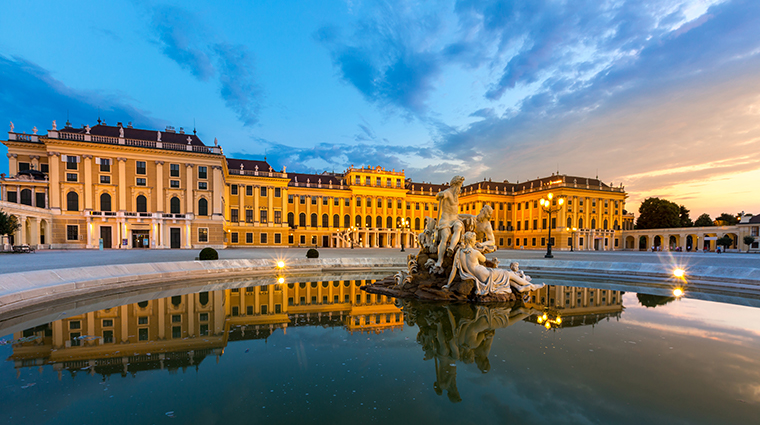
- Attractions and Landmarks
- Food and Wine
- Restaurants
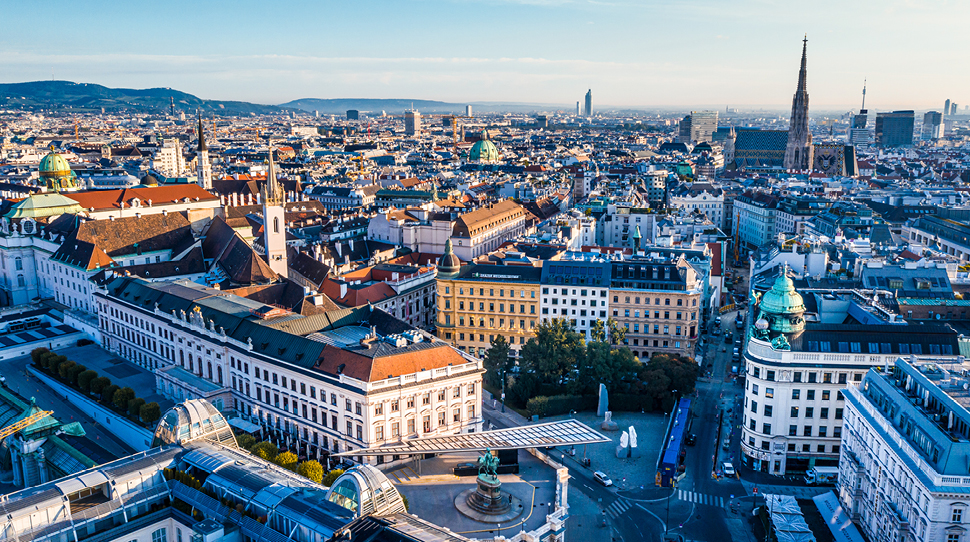
Dreaming of your next trip?
I agree to the Forbes Travel Guide Privacy Policy , Terms , and Cookie Policy . I understand I can withdraw my consent at any time.
Sign up for our newsletter

Top 10 Tips For Planning The Best Trip To Vienna
Posted on Published: May 4, 2019 - Last updated: April 26, 2024
Categories Austria , Europe , Travel
Planning a trip to Vienna? Well you’ve come to he right place! Vienna Austria is an incredible city to visit, I was there for 2 weeks but would go back in a heart beat!
During my trip to Vienna, I learned a few things about planning a trip there .
So here’s how to travel to Vienna and make the most of your time there. In my Vienna travel guide I go over everything you should know to plan your trip to Vienna. Like where to stay, how to get around the city, and just some general Vienna tips to know!
Psst! This blog post contains affiliate links in it which sends me a bit of extra money if you use them… at no extra cost to you!
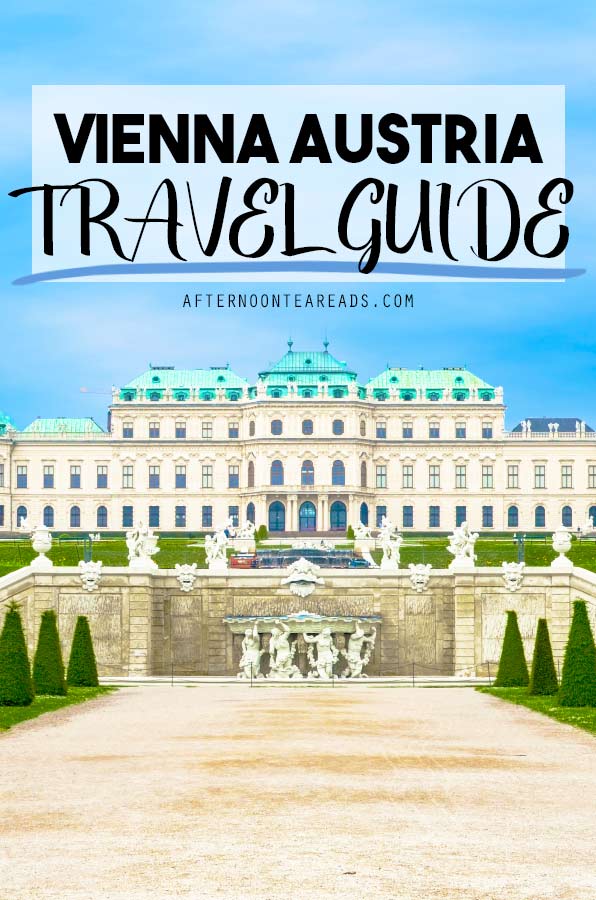
Why Is Vienna Austria Worth Visiting
Vienna is an incredible city to visit. Vienna is the capital of Austria and it used to be the centre of the Austro-Hungarian Empire. Because of that, Vienna has a captivating history, countless palaces, and outstanding architecture to admire.
A trip to Vienna will definitely not disappoint. As I said, I spent two weeks there and would go back in a heart beat!
How To Plan A Trip To Vienna
1. how to travel to vienna: arriving by plane.
If you’re flying in to Vienna you’ll arrive at the Vienna International Airport (A.K.A. the Flughafen Wien).
The easiest way into the city centre is to jump on the train at the airport. It’s a 15 minute non stop train to Vienna Centrale. From you’re connected to the bus and metro, or you can get a taxi.
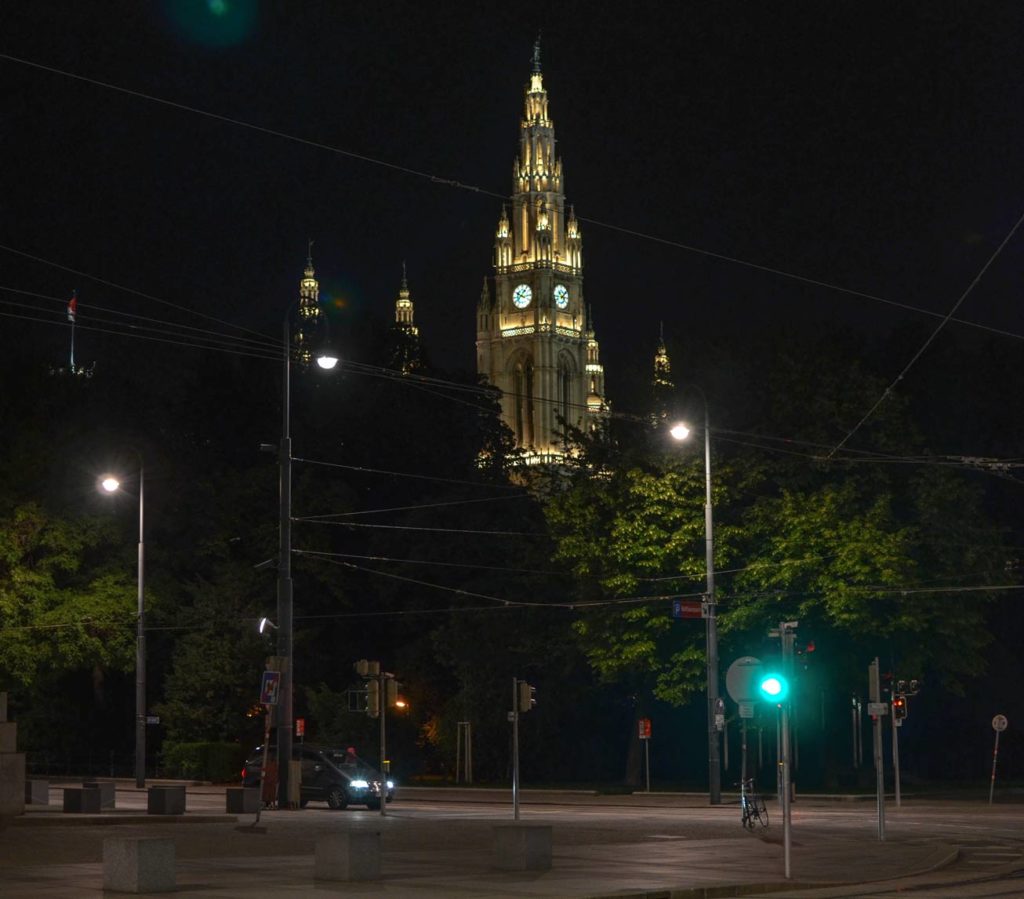
2. How Long Should You Stay In Vienna?
I was in Vienna for two weeks and there was more than enough sightseeing to fill my time at my own (sluggish) pace.
But if you have limited time, Vienna is a small enough city that it’s very doable in way less time. You can see all the main sites with just 2 days in Vienna (continue reading for the top sites to see!). You’ll have one day to explore the first district and a second day to visit Schönbrunn Palace (in the 13th district).
I would recommend staying longer, though if you can. There’s no shortage of things to do in Vienna, different museums to see, or districts to explore. Plus, part of my two weeks in Vienna were spent exploring the surrounding Austrian towns and even countries. Vienna makes a really good base, instead of constantly having to packing up and move all your belongings (but more on that in a bit!).

Plan the ultimate vacation
My digital travel planner template has everything you need to plan your vacation: research templates, travel planner itinerary, travel budget templates…etc. . You can print it out or use it digitally on your phone, tablet, or computer.
P.S. Get an additional discount on my Etsy shop with my code ATRLOVE !
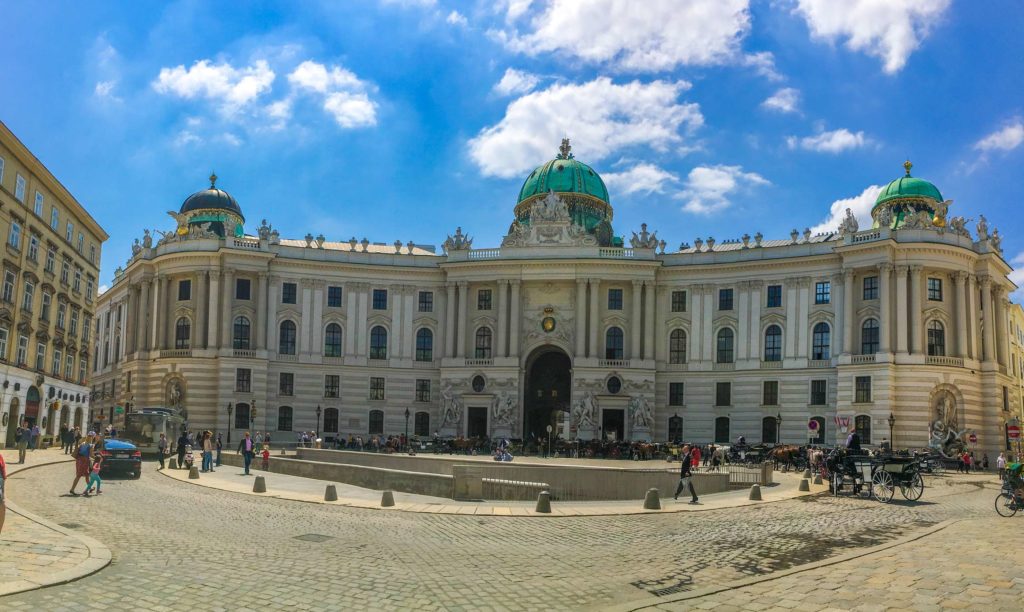
3. Vienna Travel Guide: Understanding Vienna’s Districts
Vienna (like Paris) is divided into districts. Vienna is made up of 23 districts in total, but you really only care about districts 1-9 (with an exception for 13!). They’re each known for something different and it’s an easy way to know where you are in the city. Every street sign has the address along with the district number.
The first district (also called Innere Stadt) is the city centre, and it includes all the main attractions you’ll want to see. It’s surrounded by districts two to nine and separated by the Ring (a street surrounding the historic centre of Vienna).
Districts 1-9 are the main districts you’ll be interested in visiting. The only exception, as I said before, is Schloss Schönbrunn in the 13th District.
Related A Guide To Each District of Vienna
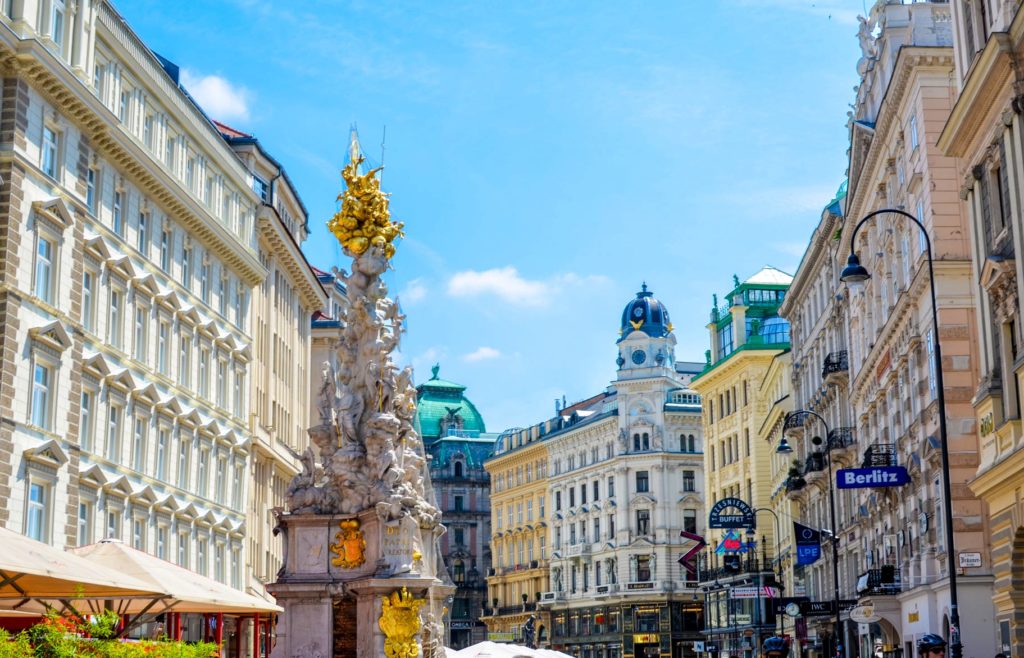
4. Where Should You Stay In Vienna?
The most central place to stay in Vienna is the First District, BUT, this is also the most expensive. If you’re only in Vienna for a short amount of time, it might be worthwhile staying in the heart of the action. But, if you’re staying in a city for a bit more time you can save some money and have a more local experience in one of the surrounding districts.
So if you’re looking to stay outside of the First district, stay anywhere beyond the Ring in one of the bordering districts. We opted to stay in the Eighth district (Josefstadt). Depending on where you are in the district, you can still be really close to the main attractions. We were still able to walk to the city centre from where we were!
I’d recommend the Eighth District for anyone looking to have a good time. It’s not far from the University of Vienna so it’s a very young and lively area. There were a few bars on our block that we went to almost every night (such as SpielBar ).

Looking For A Hotel In Vienna?
You might think that you should stay in the first district of Vienna, but you’d be wrong. The first district is where some of the main attractions are, but it’s also the most expensive. So instead, opt to stay in one of the surrounding districts that all border the first. This way, you’ll be equally as close but for half the cost. I recommend Districts Six, Seven, and Eight.
The ultimate place to stay should be either walking distance to the first district Vienna and on a tram line for easy access to the rest of the city.
I stayed in an Airbnb while in Vienna, but here are some hotel recommendations that I found.
If you do want to stay in the heart of Vienna, stay in luxury at Hotel Kaiserin Elisabeth . You cannot get a better location than this, literally a few steps from St. Stephen’s Cathedral, Kärtner Straße shopping street, the State Opera and Hofburg Imperial Palace. See room rates and availability .
For more local Vienna vibes, stay outside the First District. I stayed in Josefstadt (the Eight district) and loved it! Stay at Apartments near Rathaus . They offer apartment living near Rathaus (the city hall of Vienna). You might even be able to get an apartment with a terrace! See room rates and availability .
If you want to still be close to some attractions, stay at Hotel Gilbert in the Seventh District – Neubau. Neubau is home to all the museums in Vienna. Hotel Gilbert offers a truly unique and trendy stay! See room rates and availability .
For more accommodation options in Vienna, click here .

5. Understanding Local Transportation In Vienna
Like most European cities, Vienna has a well established public transit system. They have an underground train (the Ubahn), buses, and trams. The buses and trams run fairly often and have stops all over the city.
When taking any form of public transport, make sure to buy a ticket AND validate it. This is one of the biggest and easiest mistakes you can make when visiting Vienna. There aren’t any barriers to enter the Ubahn, so it’s easy to forget sometimes and just walk on. But, there are undercover cops that’ll stop you for not having a validated ticket.
Validating your ticket is pretty much giving it a timestamp. You can buy several ticket at once and you don’t need to use them all right away. There are boxes around the underground station, on buses and trams to validate. This means that you are now using that ticket for that ride.
Depending on how long your trip to Vienna is, you’ll want to look into buying daily or weekly passes for the public transit system. We were there for two weeks so we bought two weekly tickets. This way we only had to worry about validating once a week and we could use it as many times as we wanted throughout the week. This simplified our lives SO MUCH!

6. Before Doing Anything, Go On A Walking Tour Of Vienna
When you arrive in Vienna it can be a bit overwhelming. That’s why, the first thing I recommend doing when you arrive in Vienna is to go on a walking tour of the city.
They’ll give you a history of the city, take you to all the main spots, give you some local advice, and it’s a good way to get your bearings so you know where you are.
I always love free walking tours ( like this one ) that are tip based.
Vienna Guided Tours
Easily go around Vienna on a Hop On / Hop Off bus tour , or walk through the city centre on the highlights of Vienna walking tour .
See more tours in Vienna on Viator .
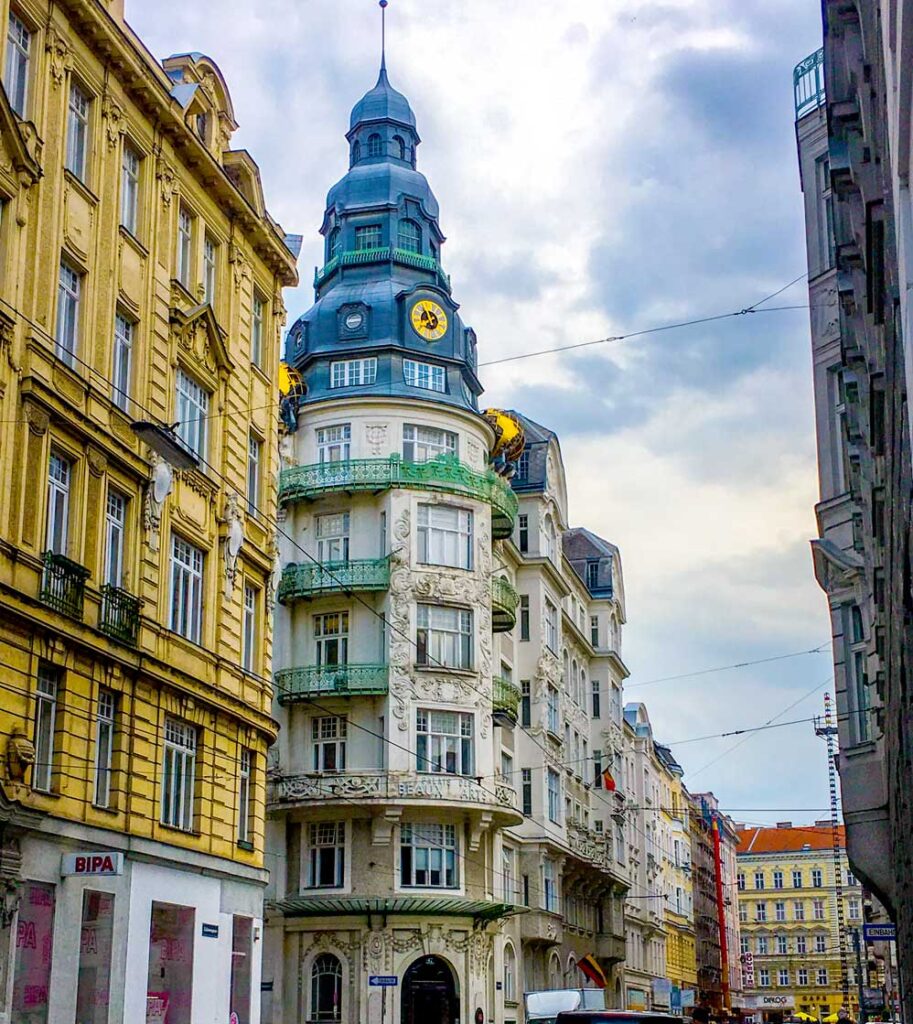
7. Top Things To Do In Vienna
There are some things in Vienna that you absolutely have to do.
Visit The Palaces Of Vienna
First off, Vienna is all about the palaces. There are three main palaces that you have to visit: the Hofburg Palace, the Belvedere Palace, and Schloss Schonbrunn.
The Hofburg and Belvedere Palace are more museums now but are still must sees. If you want to tour an actual palace you’ll want to go to Schloss Schonbrunn. That is the furthest one from the city centre, all the way in the 13th District of Vienna.
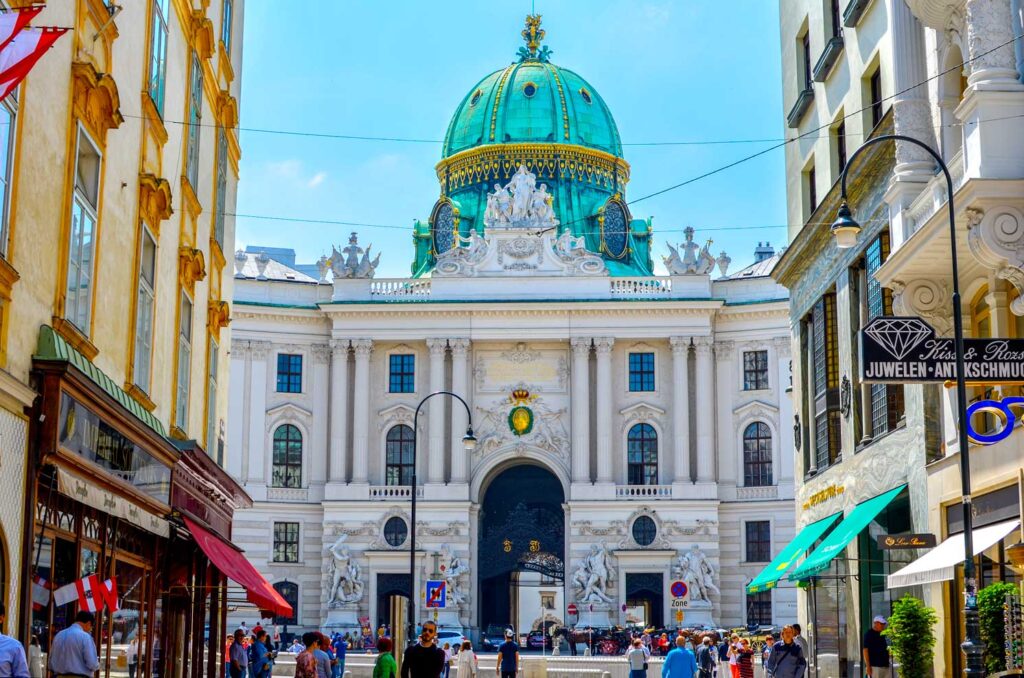
The Cathedrals Of Vienna
Like the Palaces, there are three churches to go to see in Vienna: St. Stephens, St. Peters and Karlskirche. St. Stephens and St. Peters Church are both in the First district but they could not be more different.
The architectural styles of each are stunning you have the baroque style vs. the gothic style of St. Stephens. You can also go to the top of St. Stephens for a skyline view of Vienna Austria.
Karlskirche is another baroque style church just outside the First District in the Fourth District.

Never forget a favourite travel memory
Keep track of your travels every day with my digital and printable travel journal . Use it on the go on your phone or tablet, or print it out!
P.S. Get an additional discount on my Etsy shop with my code ATRLOVE .
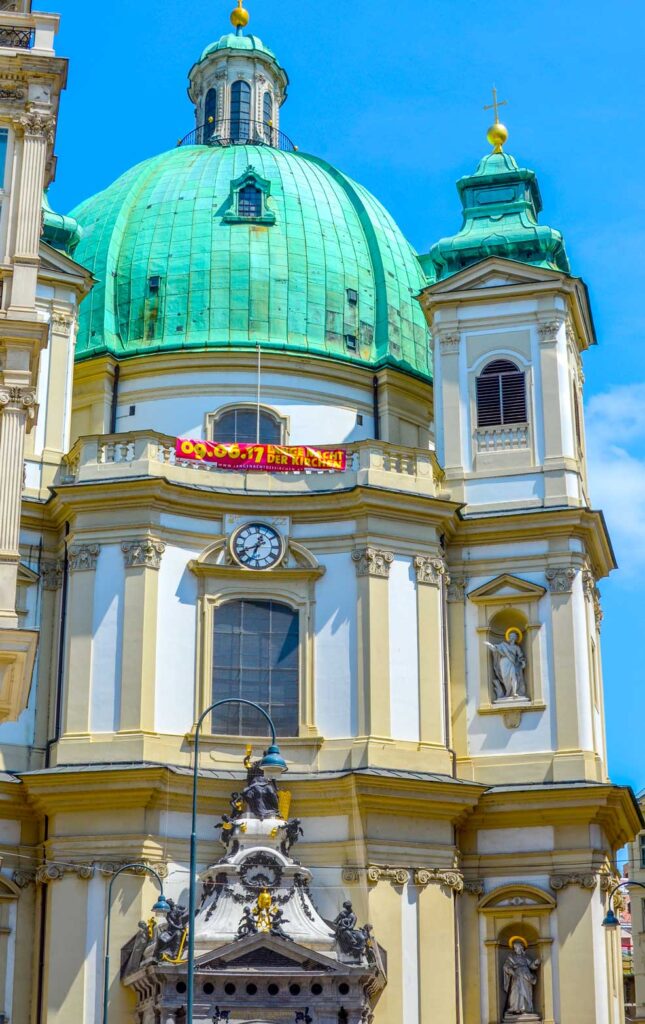
Other Things To See If You Have Time In Vienna Austria
If you have a bit more time in Vienna, some other points of interest are the Prater, Hundertwasser House, and the Naschmarkt.
The Prater is an amusement park in the second district known for the landmark giant wheel dating from 1897.
Hundertwasser House is an apartment building designed by an artist. It doesn’t look like any apartment building that you’re used to, it looks more like a piece of art.
The Naschmarkt is a great outdoor market if your looking to do some shopping!
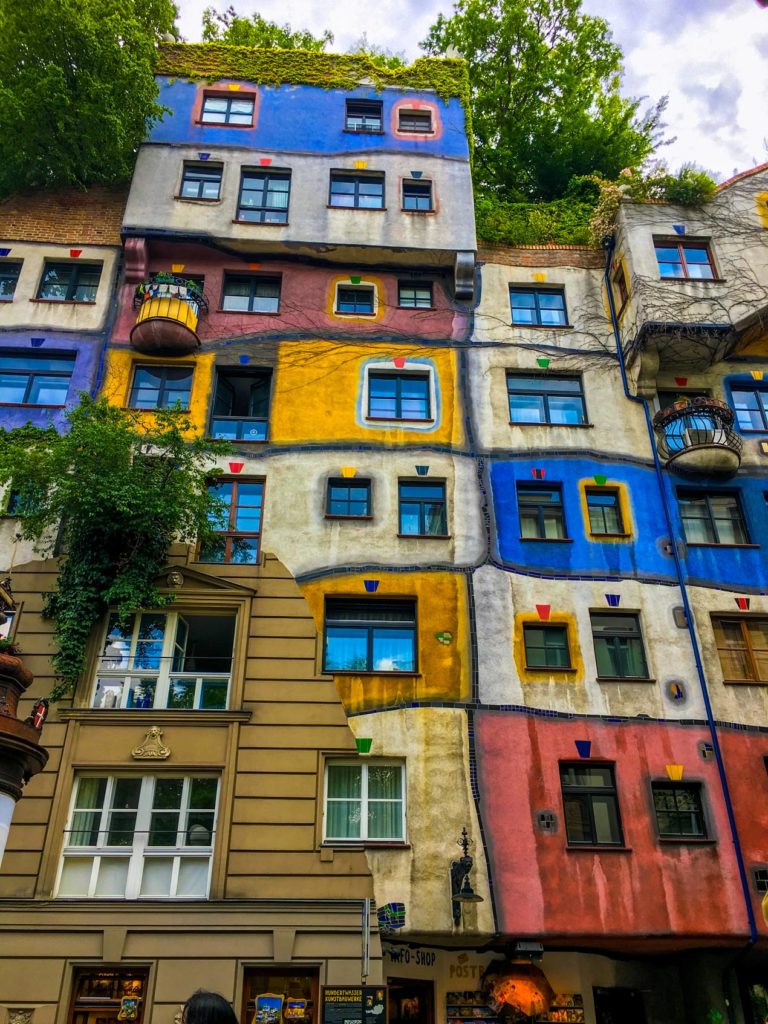
Must-Do Nighttime Activity: Go To The Vienna Opera
One of the main nighttime activities on a trip to Vienna is to attend the opera. And the best way to do that is to see it standing…
There’s no denying that going to the opera is expensive. But it’s also a very iconic thing to do in Vienna (the Vienna opera house is also a must see on a trip to Vienna). So going to the standing opera is an easy (and cheap) way not only see an Opera, but also the inside of the historic Opera House (which is beautiful). Standing room tickets are only about €3.
The downside (apart from standing for a few hours) is that you can’t reserve tickets online in advance. The tickets are only available on the day of – at the Opera House. So you have to go there a few hours in advance to wait in line.
Make sure to bring a scarf with you to save your standing spot once you get a ticket. You might also want to invest in a battery powered fan (it was quite hot when I went). They cram as many people as they can into a small space, and there’s no A/C.
You can read this for more information about standing at the Opera.
Or Opt To See A Different Side Of The Vienna OperaHouse
You can also go on a guided behind the scenes tour of the Vienna OperaHouse. Tickets are limited, so reserve in advance .

8. Vienna Tips: The Tap Water Is Drinkable
The tap water in Austria is 100% drinkable. In fact, they have the cleanest water quality in the world .
But for some reason, the Austrians are also very protective over their water, unlike Rome where they’re promoting drinking from any fountain on the street.
Instead, in Vienna, we almost got into a shouting match with a waiter over asking for a glass of water before we ordered. We were so thirsty after a long day of walking but he told us that we’d only get water depending on what we ordered.
Moral of the story – bring your reusable water bottle (like the Nomader collapsible water bottle ).

9. What Food To Try & The Best Restaurants In Vienna
Aside from their unbeatable drinking water, Vienna is of course known for delicacies like apple strudel and schnitzel. But, you also have to try Sachertorte – a delicious Viennese chocolate cake. Plus, if you’re into coffee, try ordering a Wiener Melange (Viennese Mix). It’s pretty much an espresso with steamed milk and then topped with foamed milk! Here’s a complete guide to ordering coffee in Vienna !
We found exquisite apple strudel at Café Eiles, and they also serve a delicious traditional Viennese breakfast you just have to try!
While you’re exploring Vienna you have to make a point to stop at Café Central . It dates all the way back to 1876, and the architecture inside looks like it was a church in a past life. It has high ceilings with grandiose archways. It also has links to famous historical figures like Freud and Trotsky who enjoyed coming here.
Vienna Food Tours
Discover the Viennese cuisine on a food tour of Vienna.
Go on a food walking tour through Vienna , taste everything from coffee to pastries, and a full Viennese breakfast!
Or focus on the sweet secrets this delectable dessert tour of Vienna .
See more food tours in Vienna with Viator .

10. Use Vienna As Your Hub City: Easy Day Trips From Vienna
Vienna is so centrally located with a train station in the city that it’s a no brainer to go on day trips from Vienna. We planned 4 day trips during our 2-week trip to Vienna, but we easily could’ve gone on more. We opted to relax a bit in the city instead.
On a trip to Vienna, you’re able to visit surrounding Austrian cities like Salzburg, Hallstatt, and Mödling. You can even explore the Wachau Valley in the lower region of Austria. Or if you’re looking to get out of Austria for a bit, you can head to Budapest or Prague for the day.
Vienna Tips: Easy Day Trips To Go On
- One Day In Salzburg: An Easy Day Trip From Vienna
- How To See Hallstatt In One Day From Vienna: The Ultimate Guide
- How To Bike Melk To Krems In The Wachau Valley Austria
- Escape For A Day To Budapest From Vienna
See my list of easy day trips from Vienna .
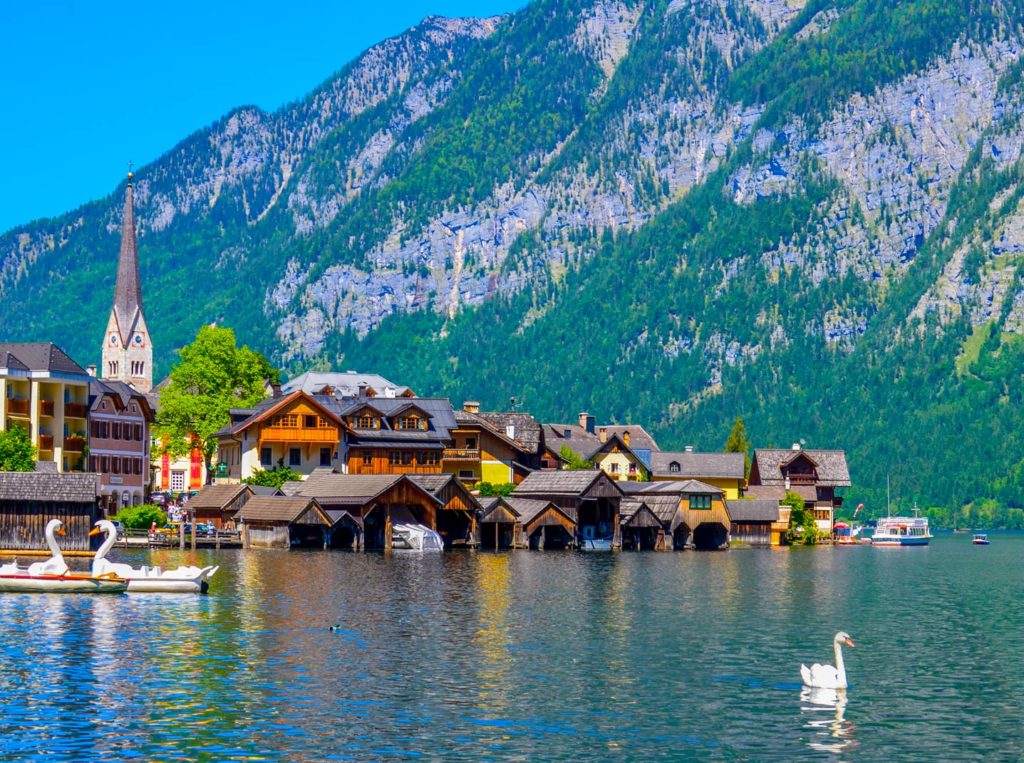
Quick Links – My Amazon Travel Favourites

Related Posts
- The Complete Guide To Vienna’s Districts
- Discover The Wachau Valley: Bike From Melk To Krems
- Day Trip To Budapest From Vienna
- Visit Salzburg in One Day From Vienna
Click Image To Share Or Save For Later

Last update on 2024-06-30 / Affiliate links / Images from Amazon Product Advertising API
Everything you Need to Know about Vienna's Districts | Afternoon Tea Reads
Thursday 13th of August 2020
[…] P.S. Planning a trip to Vienna? Check out what I wish I knew before visiting. […]
How to Bike from Melk to Krems [Day Trip from Vienna] | Afternoon Tea Reads
Wednesday 10th of June 2020
[…] hour train ride away from Vienna you’ll find the Wachau Valley. It’s a small region in lower Austria filled with […]
Darina Confidus
Wednesday 25th of March 2020
It's great that you share your experience. I am a novice traveler, and for me your blog is an aid in planning my trip. Thanks!
Thursday 26th of March 2020
That means so much to me! I'm so glad I can help plan your trips, I know how stressful planning can be :)
Thursday 28th of November 2019
Great tips! I love Vienna, such a cool city and there's just so much to see and do! Have to go back there one day when I return back home to Europe!
Yes! A visit to Vienna is a must! It's so beautiful, with so much history to discover!
Wednesday 27th of November 2019
Vienna looks awesome, I was there once for Christmas markets and I had a great time. I wish I could spend there more than 2 days though.
Happy you at least had two days to experience Vienna, it's not a very big city but definitely worth going back one day to explore some more!

- Kindle Store
- Kindle eBooks
Promotions apply when you purchase
These promotions will be applied to this item:
Some promotions may be combined; others are not eligible to be combined with other offers. For details, please see the Terms & Conditions associated with these promotions.

Download the free Kindle app and start reading Kindle books instantly on your smartphone, tablet, or computer - no Kindle device required .
Read instantly on your browser with Kindle for Web.
Using your mobile phone camera - scan the code below and download the Kindle app.

Image Unavailable

- To view this video download Flash Player
Vienna Travel Guide 2024: "Vienna on Foot: A Walking Explorer's Guide to Imperial Treasures” Kindle Edition
- Print length 193 pages
- Language English
- Sticky notes On Kindle Scribe
- Publication date February 14, 2024
- File size 60882 KB
- Page Flip Enabled
- Word Wise Enabled
- Enhanced typesetting Enabled
- See all details
Product details
- ASIN : B0CVPQNR1C
- Publication date : February 14, 2024
- Language : English
- File size : 60882 KB
- Text-to-Speech : Enabled
- Screen Reader : Supported
- Enhanced typesetting : Enabled
- X-Ray : Not Enabled
- Word Wise : Enabled
- Sticky notes : On Kindle Scribe
- Print length : 193 pages
- #6 in Austria Travel Guides (Kindle Store)
- #20 in Vienna Travel Guides
- #21 in History of Austria & Hungary
Customer reviews
Customer Reviews, including Product Star Ratings help customers to learn more about the product and decide whether it is the right product for them.
To calculate the overall star rating and percentage breakdown by star, we don’t use a simple average. Instead, our system considers things like how recent a review is and if the reviewer bought the item on Amazon. It also analyzed reviews to verify trustworthiness.
No customer reviews
Report an issue.
- Amazon Newsletter
- About Amazon
- Accessibility
- Sustainability
- Press Center
- Investor Relations
- Amazon Devices
- Amazon Science
- Sell on Amazon
- Sell apps on Amazon
- Supply to Amazon
- Protect & Build Your Brand
- Become an Affiliate
- Become a Delivery Driver
- Start a Package Delivery Business
- Advertise Your Products
- Self-Publish with Us
- Become an Amazon Hub Partner
- › See More Ways to Make Money
- Amazon Visa
- Amazon Store Card
- Amazon Secured Card
- Amazon Business Card
- Shop with Points
- Credit Card Marketplace
- Reload Your Balance
- Amazon Currency Converter
- Your Account
- Your Orders
- Shipping Rates & Policies
- Amazon Prime
- Returns & Replacements
- Manage Your Content and Devices
- Recalls and Product Safety Alerts
- Conditions of Use
- Privacy Notice
- Consumer Health Data Privacy Disclosure
- Your Ads Privacy Choices

An ultimate guide to cruising the Danube River
C utting a swathe through the heart of Europe, the mighty Danube flows for a stretch of 2,860km through or along the border of 10 countries in Central and Eastern Europe.
Its banks are lined with dramatic, unspoiled landscapes, postcard-perfect towns and villages, and grand, opulent cities . Take a river cruise down this majestic river and you’ll encounter some of the world’s most stunning countryside, including the UNESCO-protected Wachau Valley, along with an array of fascinating cultures.
Cruising Europe’s waterways is a great way to see more of the region in a short period of time than you might do by land, and a river cruise can be the ideal introduction to cruise holidays for first-timers.
While ships are smaller than those traversing across oceans, river cruise itineraries often feature big-name guests onboard – as is the case with our seven-night sailing along the Danube , when one of the UK's best-loved historians, Lucy Worsley (pictured below), joins guests on a private visit to Vienna’s Royal Lipizzaner Stables and Spanish Riding School.
What is the best time of year to cruise the Danube River?
The Danube is a year-round destination with the exception of January and February, when few cruise lines operate here. Summer, when the weather is hottest, is peak season and as a result Europe’s cities are particularly crowded. Because of that, we recommend taking a Danube river cruise in April, May, September and October. Good Housekeeping's seven-night itinerary sails in September, when the weather should still be balmy and dry, but the summer hordes have gone home.
Where does a Danube river cruise start and end?
The Danube either flows through or delineates part of the border of Germany, Austria, Slovakia, Hungary, Croatia, Serbia, Romania, Bulgaria, Moldova and Ukraine. Many cruises traverse the stretch between the capital cities of Vienna, Austria and Budapest , Hungary, starting or ending at either location.
Our seven-night Danube river cruise with Lucy Worsley departs from the city of Engelhartszell in Austria before calling at Vienna (pictured below), the pretty town of Esztergom in Hungary and Budapest. You'll then loop back down the river, calling at Slovakia's capital Bratislava and the Wachau Valley in Austria before returning to Engelhartszell.
Is a Danube river cruise worth it?
Absolutely! If you love dazzling landscapes, magnificent architecture and fabulous food, a Danube river cruise is hard to beat. Exploring Europe by water requires no internal flights and train rides and eliminates schlepping around with your luggage in tow.
On a river cruise, you can discover multiple destinations – and even get to the heart of them with a guided tour, should you wish – in just one trip, all the while returning to the same luxurious stateroom and comfy bed each night.
What are the best things to do on a Danube river cruise?
One of the highlights of any Danube cruise is the Austrian capital, Vienna, with its musical heritage, imperial palaces, array of art museums, stunning Lipizzaner stallions, and delectable cuisine (a slice of Sachertorte chocolate cake is a must when in town!).
Secondly, Budapest, the capital of Hungary, boasts breath-taking architecture as well as historic thermal baths (pictured above), while Bratislava shouldn’t be overlooked with its lively 18th-century Old Town and impressive reconstructed hilltop castle from which you can look down over it.
Other hotspots along the Danube include the verdant Wachau Valley in Austria, which tumbles down to the riverbanks; and medieval Esztergom, Hungary’s former capital, which is home to the country’s largest church, Esztergom Basilica.
And that’s all without mentioning the entertainment and facilities onboard your ship. Join us on our seven-night Danube cruise and you’ll sail aboard A-ROSA FLORA, which boasts an onboard spa offering beauty and body treatments, gym, spacious sun deck, heated outdoor pool, outdoor restaurant with canopy top, bar and dancefloor, lounges and plenty of evening fun.
Which cruise lines offer Danube river cruises?
Among the companies offering cruises along the Danube are A-ROSA Cruises , with whom we have partnered to bring you our remarkable river cruise . A-ROSA has 20-plus years of experience in sailing couples, families, groups and solo travellers along some of Europe’s loveliest rivers in laidback style, giving you lots of freedom to explore port stops at your own pace.
How much does it cost to cruise the Danube?
Danube cruises can be great value, with our cruise through Austria, Hungary and Slovakia starting just over £2,000 per person for a week. All meals and drinks, including sparkling wines and cocktails, are included, as are snacks and afternoon tea. Also included is the use of the sauna, gym and top-deck heated swimming pool. You'll also get 15% off treatments in the onboard spa.
Sail the Danube and visit Vienna's famous riding school with Lucy Worsley in September 2024.
FIND OUT MORE


The Joys of Train Travel in Austria Span Everything From Adventure To Art
Climb aboard a high-speed railjet train to trek from alpine paradise to historic cities and wellness retreats..
- Copy Link copied

Sit back and enjoy views like the Gastein Valley aboard the ÖBB railway.
ÖBB Personenverkehr AG/Harald Eisenberger
There are unforgettable train journeys tucked away in every corner of the Earth, but perhaps the most under-recognized are those with Austrian Federal Railways. Classic melds with the contemporary aboard Austria’s ÖBB, the country’s national railway company, where the romance of train travel meets engineering ingenuity. There’s no easier (or more sustainable) way for you to relax as you enjoy the views zipping from Vienna, the artistic and intellectual capital of the country, into the heart of the countryside where farm-to-fork cuisine beckons, landscapes amaze, and small villages offer hiking, biking, and intimate retreats.
Along the way, those in first and business classes can enjoy spacious leather seats with electrical outlets, Wi-Fi, a welcome drink, meal service at their seat, and digital access to more than 100 publications. It’s unlikely you’ll be able to take your eyes off mountains and castles, however, as ÖBB whisks and wends you across Austria’s most historic and beautiful sights and cities. Here are some highlights to consider.
Start in the capital, Vienna
Of the few urban cities in the world ringed by lush forests and well-marked hiking trails, Vienna is one of them. Trekkers and cyclists can enjoy the view of oak trees and then segue to oak barrels on City Hiking Trail 5, where cozy Heurigen wine taverns await oenophiles who love to sip what’s local and fresh. Regular rules don’t apply here when it comes to aging, and you’ll learn that in Viennese German, the word heuer translates to “this year.” What’s available for sampling is typically produced from a recent harvest.
If coffee is more your speed, then you’ll want to stop in at Cafe Hawelka. The kaffeehaus has been owned by the same family for three generations, and their buchteln sweet rolls are a highlight.
Coffeehouse culture in Vienna is legendary, and for centuries artists, writers, and thinkers have thrived in their bohemian atmosphere. You can check out some of their masterpieces at the MuseumsQuartier or spend a night listening to classical music at the Vienna State Opera. After all, Austria is the birthplace of Mozart, Strauss, Mahler, Schubert, Bruckner, and Schönberg, to name only a few.
Discover Graz’ museums, architecture, and cuisine

Murinsel, a floating, glass-paneled island, is one of Graz’s architectural marvels.
Graz Tourismus/Harry Schiffer
From Vienna, head directly via Railjet to Graz . It’s Austria’s second-largest city, but for many travelers from outside the country, Graz is a gem waiting to be unearthed. The UNESCO Cultural World Heritage Site is also a UNESCO City of Design, and there are just as many modern marvels as historic ones. Check out the juxtaposition at the bubble-shaped Kunsthaus museum in the arts district around Mariahilferstrasse, or grab a cocktail at Murinsel, a floating, glass-paneled island.
Food fans will want to hit up one of two daily farmers markets, since Graz, surrounded by hundreds of farms, is the culinary capital of Austria. Make a picnic from the seasonal treasures at Kaiser Josef Markt or Lendplatz, and grab a souvenir like nutty pumpkin seed oil, Styria’s so-called “green gold.”
Castles, Mozart, and beer in Salzburg

The medieval Hohensalzburg Fortress, high above Salzburg
ÖBB Personenverkehr AG/Georg Pölzleitner
All that glitters isn’t simply gold, as you’ll see while admiring the treasures at Hohensalzburg Fortress after a scenic four-hour train ride to Salzburg. The castle watches over the baroque city from high atop Mönchsberg mountain, Mozart’s birthplace and the filming location of The Sound of Music . You can walk in the composer’s footsteps on charming Getreidegasse, a street lined with courtyards and tiny boutiques where chocolate lovers will find tasty Mozartkugel nougat treats.
Or raise a glass to good times and new discoveries at the Stiegl-Brauwelt museum, an institution devoted to the art of making beer. Brewing culture is strong in Salzburg—Austria’s beer capital with 11 breweries— and it’s easy to strike up a chat with locals at one of the communal tables that fill the beer gardens here.
Hot springs, hikes, and other day trips surrounding Salzburg

A walk through Kufstein is like stepping back in time.
TVB Kufsteinerland
The beauty of making Salzburg your home base for a few days includes what’s nearby. The city makes for a convenient jumping-off point for taking trains to nearby villages that aren’t often explored by travelers outside of Europe.
If you’re seeking some R&R, head by rail to the hot thermal springs in the small village of Bad Ischl. The healing salt waters made it a fashionable resort in the early 19th century after doctors recommended Archduchess Sophie receive saline treatments.
If the Middle Ages fascinate you, there are two must-visit attractions in the countryside outside the city of Salzburg. A train to Werfen includes hiking along the Sound of Music trail, and an opportunity to feel the wind whip through the feathers of birds of prey at Hohenwerfen Fortress. The medieval landmark hosts falconry demonstrations in its impressive courtyard gardens, where other period entertainment includes sword fights.
In Kufstein, a little more than an hour west of Salzburg by train, medieval meets multimedia at the Kufstein Fortress, built in the year 1205 C.E. Visitors can wear 3-D glasses to interact with a hologram, a “talking” painting, and 270-degree projections. It’s an impressive way to experience what life was like here a millennium ago.
Jump into Innsbruck’s mountainous history

See views of Innsbruck’s towering mountains from the 360-degree bar, Cafe Lichtblick.
Christof Lackner/Innsbruck Tourismus
Reaching great heights is easy in Innsbruck , a train ride that’s just under two hours from Salzburg. Whether you’re more into the arts or athletics, there’s plenty to marvel at Bergisel Ski Jump. The Zaha Hadid-designed architectural masterpiece towers high above the city overlooking the Nordkette mountain range, and you can visit the lift, jump tower, and glass-walled café for stunning panoramas and traditional Tirolean treats like kasspatzln , a traditional Tirolean dish of spätzle (egg noodles) with cheese.
Use Innsbruck [LINK TO: 3 Ways to Experience Innsbruck, Austria’s Imperial Gem ] as your hub for other regional adventures, too. In nearby Wattens, Swarovski Crystal Worlds’ intricate topiary awaits, while 17 futuristic Chambers of Wonder exhibits put you in the center of a gleaming jewel box.
Or, in the village of Mutters, admire the wooden balconies and painted facades of farmhouses en route to take the Mutteralm cable car up the mountain for a hike followed by lunch in a cozy mountain hut. Typical dishes include tasty schlutzkrapfen (dumplings stuffed with cheese or spinach,) and hearty Tiroler gröstl, (a dish of potatoes, meat, and vegetables).
Journey to the top of the world in the Arlberg region

The Arlberg Trail connects Arlberg’s five villages and can be enjoyed on individual shorter treks or on one unforgettable 25-mile journey.
DIE WEST Werbeagentur/Arlberg Marketing
Venture even further into Alpine paradise in Arlberg , just a one-hour train ride from Innsbruck. There, five intimate villages all feature hikes for varying abilities winding past pristine lakes, streams, and flower-filled fields. Serious trekkers will want to plan ahead to spend several hours outdoors, while others may choose to take the “easy way” on the Galzig and Valluga cable cars that whisk you up 9,222 feet to the top of Valluga, the region’s tallest mountain.


COMMENTS
Learn 13 do's and don'ts from a local Viennese to avoid looking like a tourist and have a more authentic experience. Discover the culture, cuisine, language and etiquette of Austria's capital city.
Learn how to plan the perfect trip to Vienna, Austria's capital city, with this comprehensive guide. Find out what to see and do, how to save money, where to stay, and more.
Address: Mariahilf, city center 1060 Vienna, Austria. Phone: +43 1 400005430. Website. Vienna's largest and best known food market is located on the Vienna River, with more than 120 market stands ...
The best time to visit Vienna: from Christmas markets to festivals. Nov 6, 2023 • 5 min read. Whether you want to see live music, sip a lager in a Biergarten (beer garden), or avoid the crowds, here's our guide to the best time to visit Vienna. Hiking.
Vienna Bucket List - 50 Things to do in Vienna, Austria. Watch the sunset from the roof of St. Stephen's Cathedral. Visit the Albertina Museum and enjoy a fantastic view from the Albertina Platz to the Vienna Opera. Ride through Vienna with a two-horse carriage. Riding Dinner offers exclusive culinary horse-drawn carriage rides for one to ...
For a spin around Vienna's architectural highlights, jump on a tram and travel along the Ringstrasse, one of Europe's most magnificent streets. The circular boulevard of imposing state buildings was carved out of the space once occupied by fortifications protecting Vienna from Ottoman Turk attack in the 16th century.
The official online travel guide for the city of Vienna, with information about sights, events and hotel bookings, and the Vienna City Card.
The tour lasts around an hour, and is available in a number of languages. Definitely a fun way to learn about Vienna! Time Travel Vienna is open daily from 10am - 8pm, with the last tour starting at 7pm. There's a fee for entry, and you can check times and prices here, and book tickets in advance here. It's also included on the Go City ...
A Vienna City Card, which permits unlimited use of the city's metro, tram, and bus lines, can be purchased in advance. Vienna City Cards are available for 1, 2, or 3 consecutive days, and prices range from 24 hours for Euro 17, to 3 days of use + airport transfer for Euro 46.-.
If you want to avoid the crowds but still have pleasant weather, the best time to visit is in the shoulder season of April to May or September to October. If you are visiting Vienna for the first time, use these following Vienna travel tips to pick when to visit: Expect rain if you visit in November or March and possibly snow during the winter ...
Vienna 3-Day Itinerary Map. Quick Summary: 3 Days in Vienna: An Itinerary for First Timers. 3 Days in Vienna Itinerary. Day 1: Exploring the Palaces of Vienna. Day 2: Strolling Around the Heart of Vienna. Day 3: Visiting the Museums of Vienna.
Vienna is considered one of the safest capitals in Europe and it often appears highly on many best quality of life rankings. Still, travelers should use common sense and keep an eye out for petty ...
Vienna is the capital of Austria, the cradle of classical music, the home of the rich Habsburg heritage, and one of the world's most livable cities. The city center is skyscraper-free, pedestrian-friendly, dotted with quiet parks, and traversed by electric trams. Many buildings still reflect 18th- and 19th-century elegance, when the city was at the forefront of the arts and sciences. Compared ...
A Little Bit About this 3-Day Vienna Itinerary. Where to Stay in Vienna. Vienna Itinerary Day 1: Innere Stadt and Neubau. Vienna Itinerary Day 2: Schönbrunn, Weiden, and Mariahilf. Vienna Itinerary Day 3: Leopoldstadt and Landstrabe.
Here are 10 essential tips to make your Viennese adventure smooth and unforgettable: 1. Embrace Public Transport: Skip the car hassle! Vienna's excellent trams, buses, and subway system make getting around a breeze. Plus, a Vienna City Card grants unlimited travel and discounts on attractions. 2.
Vienna Travel Tips FAQs What is the best way to get around Vienna? The best way to get around Vienna is through its efficient and extensive public transportation network, which includes the U-Bahn (subway), S-Bahn (suburban trains), trams, and buses. Using a multi-day travel pass can offer unlimited access and is cost-effective.
The MuseumsQuartier. The Ring and Rathausplatz. Schönbrunn. The Secession. Shopping. Stephansdom. Vienna's Heurigen. Vienna became an important centre in the tenth century, then in 1278 the city fell to Rudolf of Habsburg, but didn't become the imperial residence until 1683.
Stop by St. Stephen's Cathedral. At its tallest point, St. Stephen's Cathedral reaches 136 meters, making it the tallest church in Austria and one of the most recognizable sights in Vienna ...
These Vienna travel tips will help you find your way around the Austrian capital with ease. Flughafen Wien (VIE) is the international airport of Vienna. It is just 18 km (11 mi) away from the city center. You can reach it by train or bus. The local train S-Bahn S7 only takes 25 min and costs just €4.20 ($5.10).
Vienna Travel Guide - Forbes Travel Guide. Vienna is a city shaped by its imperial past. You'll find its ancient streets home to magnificent stately palaces, grand baroque architecture, flamboyant museum squares and ornate opera houses - not to mention the landscaped parks, the ancient church spires and the historic zoological park.
How To Plan A Trip To Vienna. 1. How To Travel To Vienna: Arriving By Plane. If you're flying in to Vienna you'll arrive at the Vienna International Airport (A.K.A. the Flughafen Wien). The easiest way into the city centre is to jump on the train at the airport. It's a 15 minute non stop train to Vienna Centrale.
Vienna Travel Guide includes: Special features: on the best beaches, vineyards, and things to do for free. Trip planning tools: practical tips on getting around, avoiding crowds, and saving time and money. Honest Recommendations: from locals on the best sights, restaurants, hotels, nightlife, shopping, performing arts, activities, side-trips ...
164 likes, 25 comments - _travelescape_365 on June 27, 2024: "This is the most beautiful city in Europe.. if you come to Vienna, don't forget to visit the historical city center of Vienna and enjoy the architecture and common life in this city. Kohlmarkt Graben Herrengasse Burggarten @_travelescape_365 Head on to see other tips and places from Vienna #hiddengems #viennatravel #viennaaustria ...
Cutting a swathe through the heart of Europe, the mighty Danube flows for a stretch of 2,860km through or along the border of 10 countries in Central and Eastern Europe. Its banks are lined with ...
Travel Deals; Travel Tips + Etiquette; Trending Travel News; ... Tips + News Trains. Sponsored by Austria Tourism • June 24, 2024. The Joys of Train Travel in Austria Span Everything From Adventure To Art Climb aboard a high-speed Railjet train to trek from Alpine paradise to historic cities and wellness retreats. ... (or more sustainable ...